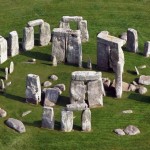 Analogy of same; but now by applying what ''eye'' represents - IN RELATION - to that 'gap'..."When i began drawing the mandalas - i saw that everything; all the paths i had been following; all the steps i had taken - were leading back to a single point - namely to the mid-point. It became increasingly plain to me that the mandala is the center. It is the exponent of all paths. It is the path to the center {horseshoe?} to individuation...I knew that in finding the mandala as an expression of the self, i had attained what was for me, the ultimate. Perhaps someone else knows more, but not me." [C. G. Jung].
Analogy of same; but now by applying what ''eye'' represents - IN RELATION - to that 'gap'..."When i began drawing the mandalas - i saw that everything; all the paths i had been following; all the steps i had taken - were leading back to a single point - namely to the mid-point. It became increasingly plain to me that the mandala is the center. It is the exponent of all paths. It is the path to the center {horseshoe?} to individuation...I knew that in finding the mandala as an expression of the self, i had attained what was for me, the ultimate. Perhaps someone else knows more, but not me." [C. G. Jung].
Try ''hero'' to see if you personally agree or disagree. On all pages.
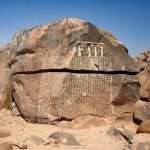
'The Well of Memory'... "I am parched with thirst - 'dying.' Drink from me, the eternal spring, on the right by the cypress. Who are you? Where are you from? I am a 'child' of earth and starry heaven, but my race is of heaven." [Same book]. Put ''memory'' in the box. Question. What is the difference between 'starry heaven' and 'heaven' ? Clue....
"I want to know , sir - when shall i see god?"
"You have found him."
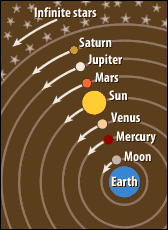 "Oh no, sir, I don't think so!" My Guru was smiling. ''I am sure you aren't expecting a venerable Personage, adorning a throne in some antiseptic corner of the cosmos! I see, however, that you are imagining, that possession of miraculous powers is proof that one has found god. No. One might gain power to control the whole universe - yet find the Lord elusive still. Spiritual advancement is not to be measured by ones displays of outward powers, but solely by the depth of his bliss in mediation. 'Ever new joy, is god. He is inexhaustible'...The starry inscription at one's birth, i came to understand, is not that man is a puppet of his past. Its messages is rather a prod to pride; the very heavens seek to arouse man's determination to be free from every limitation. God created each man as a soul, dowered with individuality, hence essential to the universal structure, whether in the temporary role of pillar or parasite. His freedom is final and immediate, if he so wills; it depends not on outer but inner victories." [Extract from the book 'Autobiography of a Yogi'].
"Oh no, sir, I don't think so!" My Guru was smiling. ''I am sure you aren't expecting a venerable Personage, adorning a throne in some antiseptic corner of the cosmos! I see, however, that you are imagining, that possession of miraculous powers is proof that one has found god. No. One might gain power to control the whole universe - yet find the Lord elusive still. Spiritual advancement is not to be measured by ones displays of outward powers, but solely by the depth of his bliss in mediation. 'Ever new joy, is god. He is inexhaustible'...The starry inscription at one's birth, i came to understand, is not that man is a puppet of his past. Its messages is rather a prod to pride; the very heavens seek to arouse man's determination to be free from every limitation. God created each man as a soul, dowered with individuality, hence essential to the universal structure, whether in the temporary role of pillar or parasite. His freedom is final and immediate, if he so wills; it depends not on outer but inner victories." [Extract from the book 'Autobiography of a Yogi'].
''Divine bit'' [awareness of], in relation to ''framework'' relative to cause and effect = freedom of something? i.e., awareness [over a period of time?] = a connection? Link to the word ''joy'' and/or ''grace''.
Analogy of same..."I will present the psychological aspect of the tradition, particular Jungian thinking, and show how it relates to alchemy and, perhaps more importantly initiation - the later a relationship that has not been touched upon by other authors..." [Extract from the book 'The Magister' ].
This web page has ''touched'' on the above - throughout.
Question. Sense / nonsense. A possibility or not?
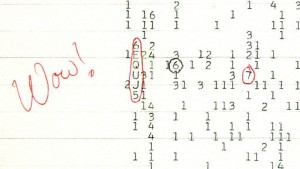

Practical example.
A working example?..."To be aware of higher reality while dealing with ordinary reality requires an effort of awareness, detachment, concentration and insight which are the result of long patience. These experiences of vaster consciousness have been tasted by everyone in rare moments of our lives and are reminiscent of the wonder years of childhood. But despite the deep emotion or astonishing joy that accompanies them {eureka moments?}, they are always fleeting, ephemeral, and uncontrollable. The disciplines of the Work eventually make the practitioner receptive to longer, more frequent encounters with these regenerating and illuminating events." ['The Wisdom of the 4th Way']. Continued elsewhere.
Analogy with same intent in mind; with the same aim: "...In taking infinite pains to shroud with mystery His presence in the atoms of creation, the 'creator' could have had but one motive, one sensitive desire: that man seek him only through free will..." As does...
Refresher: " I make no secret whatsoever of the fact that my rather revolutionary model of the atom came to me in a dream.'' Niels Bohr.
 "The 'good life' is a process. The good life is a process, not a state of being. It is a direction, not a destination. The good life constitutes a direction selected by the total organism, when there is psychological freedom to move in ANY direction." [Taken from Part three, 'on matters of existence' from the book, 'Striking Thoughts' { Bruce Lee's Wisdom for Daily Living} by J. Little.
"The 'good life' is a process. The good life is a process, not a state of being. It is a direction, not a destination. The good life constitutes a direction selected by the total organism, when there is psychological freedom to move in ANY direction." [Taken from Part three, 'on matters of existence' from the book, 'Striking Thoughts' { Bruce Lee's Wisdom for Daily Living} by J. Little.
An American / Mongolian student. The archetypal equivalent...that every student aspires to. Attributes of determination / fortitude / discipline / purpose...all forged together within that most important one. The well grounded one, [as well as the obvious intelligence]. Sets off to find the lost tomb of Genghis Khan. Galvanized by the tales told by one of his relations. That their ancestors "had come from the north", [ ‘Lost tomb of Genghis Khan’. National geographic channel. Can also be seen on ‘You tube’ ].
A ‘temple’ structure of some description was finally located within a certain ‘mountain’. just as Khufu-s sarcophagus was found within the kings chamber within that well known similar structure...but no body was found. Or will be found. To find that location, understand this subject.

'Hung'. On wire. In the town of Spectra. {'Big Fish' / 2003].
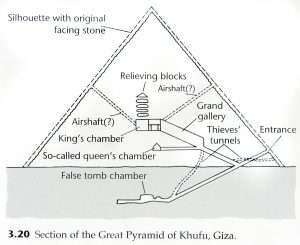
Off 'center'? Far West?
Side note: That structure {i.e.,Kings chamber and/or 'room'?} that seems to be constructed differently from the norm as described in such works as 'Pyramid of Secrets' - in relation to: "A few days later our master left us. He died in his room below the loft, its floor newly sprung on wire cable supports. Almost immediately, we had an insight into that curious image of Vivien and Merlin that had been conjured by the doors. Our wizard master had been in the well - in the room beneath the loft - and was already on the point of death. What strange previsions are called forth from a Fool on the path. Is the sting of 'death' {uraeus link} meant for those who die, or for those who remain behind? This was the question we would ask ourselves...Perhaps the 'poison' in the sting {'Scorpion'?} is that so much remains behind, reminding one of what has been lost. Many of his words still echoed in our mind, and his example still guided our footsteps - at least as an ideal if not as an actual practiced reality...He seemed to live in our 'heart', and even in our head, in that incessant chatter which, we learn in the Schools, is the excrement of thought...Venus is called the planet of 'love' by those who do not know about the Mysteries', he had said..." Continued elsewhere. ['The Zelator'. All emphasis, this readers].
Try ''turd'' / ''anus'' to see it from a different perspective.

cobbler.
Analogy: The Dung Gate in the Valley of Hinnom - S/W Jerusalem {Kathleen Nichols/Magdala}.
Coincidence or a mind set?
Refresher: "Everyone has an internal thought process: that silent other self who speaks to you; the one you debate with."
''Analogy: ''These temples {i.e., Isis} differ from the Moon Temples of Thoth - in that they have an actual architectural presence, whereas the Moon Temple of Thoth at this time exists only on the etheric plane {with the exception of Thoth's teaching chapel, which is a converted hayloft}. Yet the instructions for building all these temples comes directly from Source." [Page 8 'The Union of Isis and Thoth' / N. Ellis and N. Scully].
Male/female. Anima/Animus?
Question. 'Kings chamber'. 'Loft' above it? Anything found within it - when first discovered? Top/down or bottom/up as a means...?
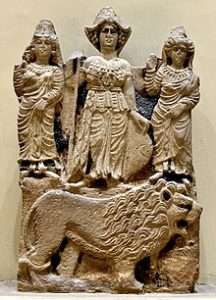
Analogy: ''The three daughters of Allah'' {on the 'back' of a 'lion'?}

Upside down?
Side note: ''Nefertiti's 'sunshade' lay in what is now known as Kom el-Nana. This lies at the southern end of an axis that begins at the very north of the Amarna site, in what would become the Northern City, which included the Northern Riverside Palace - apparently the royal family's principle residence. The axis then runs in a 'straight line' southward, passing close to a further {North} palace and then through the HEART of the Central City, with the two main Aten Temples fronting on to it {'H'?} and the Great Palace straddling it {'T'?}. This section would become the ''Royal Road,'' but beyond this point housing rapidly grew up, leaving Kom el-Nana isolated, seemingly without any ceremonial access FROM the north. Kom el-Nana was enclosed by a buttressed mud-brick enclosure wall {'wattle'?}, with pylon entrances in the west, south, and east, but apparently NOT north {'enclosed on three sides'?}. It was subdivided into a North and South section, both with gardens and 'pits' for trees. The SOUTHERN section was focused on the so called South Shrine - LARGE blocks used instead of the usual talatat - and extensively decorated. On the basis of the style of its reliefs and the PRESENCE therein of ONLY THE THREE elder daughters, this southern sector seems to have been constructed early in the building process at Amarna.'' [Page 35 'Nefertiti' / A. Dodson].
Road to Hebron to enlarge {i.e., ''straight south to Hebron''}.
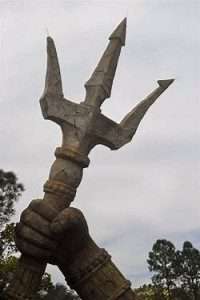

Flag of Barbados.
And/or: "There hearts were UPRIGHT AND UNDIVIDED. These were men that were not only seeking god, but god was looking for them {i.e., in 'contact' with him}. He had this whole plan of salvation for those that want to walk with Him. The main person, however, in the Old Testament who teaches us something about prayer is Abraham. The Mar Elias Monastery is on the Hebron road. One could go directly there by car {'chariot'?} or by walk. It is at Hebron where Abraham pitched his tent, and where the three angels came and visited him and told him he would have a son, Isaac. And so this is a place where the Trinity itself came and visited Abraham. This was also the place from which he came walking toward Mount Moriah when the lord asked him to sacrifice his son, Isaac. Amazing! he might have passed right in front of this monastery, right across these grounds. And what moved him to leave the Ur of Chaldees? What moved him from Mamre? Where eventually he was buried together with his wife; the first place that was ever purchased in this land for the tombs for himself and all of the different Patriarchs and Matriarchs of the Old Testament. WHAT MOVED HIM? He heard this question that the lord directed to Adam: 'Where are you? Here i am', he says, 'here i am.' And he left his land, and so he goes forth....Going forth - searching for something greater than himself." [Day Two: Pilgrimage of Prayer: Lent 2024: Magdala].

''Heart of oak are our ships, heart of oak are our men.''
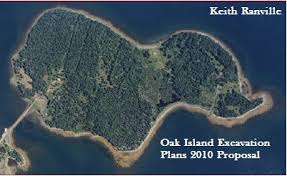
Divided into 'thirtytwo' plots.
"Mamre (/ˈmæmri/; Hebrew: מַמְרֵא), full Hebrew name Elonei Mamre, 'Oaks of Mamre', refers to an ancient religious site originally focused on a single holy tree, growing "since time immemorial" at Hebron in Canaan.[9] At its first location, Khirbet Nimra, a pagan tree cult predated the biblical narrative.[10] It is best known from the biblical story of Abraham and the three visitors.[11] The tree under which he had pitched his tent is known as the oak or terebinth of Mamre. Modern scholars have identified three sites near Hebron which, in different historical periods, have been successively known as Mamre: Khirbet Nimra (a little excavated Persian and Hellenistic period site), Ramat el-Khalil (the best known site, flourished from the Herodian through the Byzantine period), and Khirbet es-Sibte.
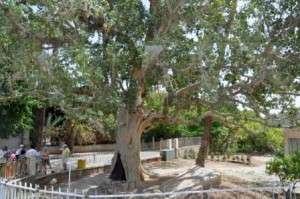
Fig tree.

Sycamore GAP. N/W boundary of Europe.
The last one contained an old oak tree identified by a relatively new tradition as the Oak of Mamre, which has collapsed in 2019, and is on the grounds of a Russian Orthodox monastery....Genesis 13:18 has Abraham settling by 'the great trees of Mamre'. The original Hebrew tradition appears, to judge from a textual variation conserved in the Septuagint, to have referred to a single great oak tree, which Josephus called Ogyges.[9] Mamre may have been an Amorite, a tribal chieftain after whom a grove of trees was named. Genesis connected it with Hebron or a place nearby that city.[12] Mamre has frequently been associated with the Cave of the Patriarchs.
'Thirteen' / 'Eighteen'.
Jewish-Roman historian Josephus, as well as Christian and Jewish sources from the Byzantine period, locate Mamre at the site later renamed in Arabic as Ramat el-Khalil, 4 km north of historical Hebron and approximately halfway between that city and Halhul. Herod the Great apparently initiated the Jewish identification of the site with Mamre, by erecting there a monumental enclosure. It was one of the three most important "fairs" or market places in Judea, where the fair was held next to the venerated tree, accompanied by an interdenominational festival joined in time by Jews, pagans, and Christians. This prompted Emperor Constantine the Great to unsuccessfully attempt at putting a stop to this practice by erecting a Christian basilica there."
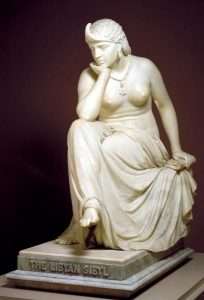
Sphinx is to 'fire' as Sibyl is to 'Soul'. Resting? 'Hook' shaped head gear?
 "Mar Elias Monastery (Hebrew: מנזר אליהו הקדוש, Arabic: دير مار إلياس, romanized: Deir Mar Elias) is a Greek Orthodox monastery in south Jerusalem, on a hill overlooking Bethlehem and Herodium, near Hebron Road....According to Christian tradition, Elijah rested here after fleeing the vengeance of Jezebel.[1] It is also said to be the burial place of the Greek Bishop Elias of Bethlehem who died in 1345, and St. Elias, an Egyptian monk who became Patriarch of Jerusalem in 494....Another Christian tradition is that Mary rested under the large hackberry tree growing north of the monastery when she was fleeing Herod, who had ordered the execution of all the children of Bethlehem."
"Mar Elias Monastery (Hebrew: מנזר אליהו הקדוש, Arabic: دير مار إلياس, romanized: Deir Mar Elias) is a Greek Orthodox monastery in south Jerusalem, on a hill overlooking Bethlehem and Herodium, near Hebron Road....According to Christian tradition, Elijah rested here after fleeing the vengeance of Jezebel.[1] It is also said to be the burial place of the Greek Bishop Elias of Bethlehem who died in 1345, and St. Elias, an Egyptian monk who became Patriarch of Jerusalem in 494....Another Christian tradition is that Mary rested under the large hackberry tree growing north of the monastery when she was fleeing Herod, who had ordered the execution of all the children of Bethlehem."
Celtis australis, the European nettle tree, Mediterranean hackberry, lote tree, or honeyberry,[3] is a deciduous tree native to Southern Europe, North Africa, and Asia Minor. The tree was introduced to England in 1796.[4]
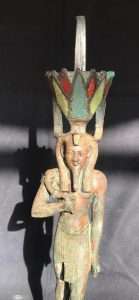
From the 'waters' of creation {Self becoming} - a lotus flower.
 Celtis australis is supposed to have been the Lotus of the ancients, whose fruit Herodotus, Dioscorides, and Theophrastus describe as sweet, pleasant, and wholesome. Homer has Ulysses refer to the "Lotus-eaters" and the "lotus" in Odyssey, Book IX.[6]
Celtis australis is supposed to have been the Lotus of the ancients, whose fruit Herodotus, Dioscorides, and Theophrastus describe as sweet, pleasant, and wholesome. Homer has Ulysses refer to the "Lotus-eaters" and the "lotus" in Odyssey, Book IX.[6]
And/or: ''The new construction at Karnac emphasized Nefertiti's role as Aten's high priestess. One of the four temples that Amenhotep IV {Akhenaten} had erected before the end of Year 5 was a temple called the Mansion of the Benben. {The Benben stone was the most sacred monument within the temple of Ra-Atum at Heliopolis}....All built from lightweight talatat stone. But never showing the king, ONLY Nefertiti worshipping the Aten...The only other person who appears in the Mansion of the Benben is Meritaten {eldest daughter}.'' [Page 134/5 'Ancient Egypt' / March-April 2023].
Real or symbolic?
Benben or Benbenet?
Heavy/light. Upstream/Downstream. Fire/Water. Male/Female. North/South. Shadow/Light as a means.....?
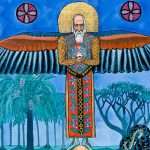
Philemon. Jungs 'future' self?
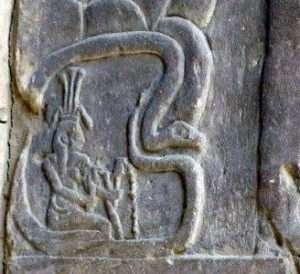 Continued: ''For i suddenly knew that we all contain ''so much more'' than we think we do. The image came to me of a house {or temple?} with many floors, and i saw that in ordinary awareness we live on a shelf in the ATTIC of our selves, leaving the other floors relatively uninhabited and the basement locked. What furnishings and books, what interesting artworks and appliances....to be found in the rooms of the many -mansioned self. Treasure troves to be sure.....within the interior castle....Some once and future self woke up in me then and knew that i had no other choice but to pursue the path of Hermes, the trickster, and invent a career that would discover ways of tapping into that ''so much more'' of deep knowledge that WE ALL CARRY IN THE NESTED GNOSIS WITHIN.'' [Page 116, 'A Mythic Life'].
Continued: ''For i suddenly knew that we all contain ''so much more'' than we think we do. The image came to me of a house {or temple?} with many floors, and i saw that in ordinary awareness we live on a shelf in the ATTIC of our selves, leaving the other floors relatively uninhabited and the basement locked. What furnishings and books, what interesting artworks and appliances....to be found in the rooms of the many -mansioned self. Treasure troves to be sure.....within the interior castle....Some once and future self woke up in me then and knew that i had no other choice but to pursue the path of Hermes, the trickster, and invent a career that would discover ways of tapping into that ''so much more'' of deep knowledge that WE ALL CARRY IN THE NESTED GNOSIS WITHIN.'' [Page 116, 'A Mythic Life'].
Question. Kings chamber = attic? If so, what does that imply to the 'whole'?
''Service to others is the rent you pay for your room in heaven.'' {Muhammad Ali: 1942-2016}.
'Sixteen' to enlarge.
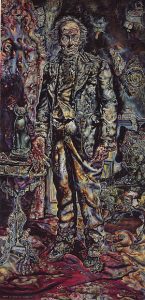
The 'picture' of Dorian Gray. Kept in the 'loft'.
![]() Refresher: "Whether our master had in mind an intentional symbolism in this request to clear out the upper room, we shall never know. We had realized some considerable time ago that the main impediment to our spiritual development lay in our untrained thinking, as much as the accumulation of debris {'loft'?} in our minds..." [same book]. Try ''Herod'' to see something from the alternative point of view.
Refresher: "Whether our master had in mind an intentional symbolism in this request to clear out the upper room, we shall never know. We had realized some considerable time ago that the main impediment to our spiritual development lay in our untrained thinking, as much as the accumulation of debris {'loft'?} in our minds..." [same book]. Try ''Herod'' to see something from the alternative point of view.
Upper room of the last supper?
Something extra: ''Vibration of Etheric Substance, Causing light through regions of space {'coal sacks' or 'Ostrich' nests?}….A girdle of Something, enfolding, and binding together the race....And words without wires transmitted, ''Ariel'' - winged, spirit-sandaled and shod - Some call it Electricity {'137'?}….And others call it God." [Extract from a poem by Dr. Carey {page 20} from the book 'The Zodiac and the Salts of Salvation' / Inez Perry].
Golden sandels on Tutankhamun.
God is in the detail.

Question. 'Face' of a king or sahu?. Question 2. Does that {mindset} tell us anything about his 'Mother'? Try Sunshade?
A working example: ''The mobility of the khaibit....holds an earthly shape, an energetic image of the essential self....it is not the soul itself. It recalls the record of one lifetime alone, whereas the soul is the culmination of many 'lifetimes' and experiences....Khaibit, or shadow, earth bound shape; whereas sahu, its twin etheric body, is the glorified body of light that lives with 'the gods'....the transfigured self....the body of gold...the immortal body.'' ['Dreams of Isis' / N. Ellis].
Ancient and modern cultures alike speak of the light phenomenon we call the aura, that energy field resonant around the body. The Indians call it prana; the Chinese, chi; Cabalists call it nefesh; but the ancient Egyptians called it the BODY OF GOLD, or sahu.'' [Page 142, same book].
'Tut's Treasures: Hidden Secrets' / Nat. Geo / S1. E2].
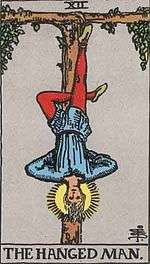
'Hands' behind back? Does he not want to 'catch' his 'fall'?
And/or: "Sweet pity held me, in a long embrace; compassion took me, like love itself on fire. But this is richer, tantamount to grace. The cutting edge of language, as it hurls me higher. And on the heights, I walk immortal space, with death below - new words on the high wire." [Extract from the poem 'Tinkering With the Fine Tuning' from the book 'The Hand in the Well' / S. Barker].
Karnac to enlarge.
Get a 'hang' on those keys to 'see' something other than the obvious. To see inside a mindset.
i.e., as one example ''edge'' in relation to say the ''hoar's way''
''Mountian low, Valley high.''
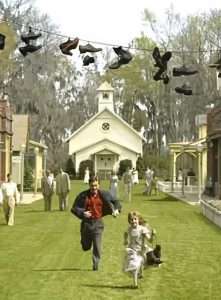
Friend. What happened to you're shoes? They kinda got ahead of me."
Something 'hinted' at - by way of - an analogy to a similar 'key': ''Elsewhere in the book he deplores the lack of interest in that which is worth while, at the same time analysing the word ''pastime''. He says, 'The world, out of its own use of this word, renders judgement against itself. For it is concerned with amusements and pleasures which do not really satisfy the mind and fill it with the sense of an abiding and satisfying joy; they serve only; as this word confesses, to pass away the time, to prevent it from hanging an intolerable burden, on man's hands; all which they can do at the best is to prevent man from discovering and attending to their own internal poverty and dissatisfaction and want." [Page 50 'The Zodiac and the Salts of Salvation' / Inez Perry].
''Nail'' to enlarge.
Side note: ''What is that ''Spark'' which ''hangs from the flame?''. It is Jiva, the Monad in conjunction with Manas, or rather its aroma - that which remains from each personality, when worthy, and hangs from Atma-Buddhi, the Flame, by the thread of life. In whatever way interpreted, and into what ever number of principles the human being is divided, it may easily be shown that this doctrine is supported by all the ancient religions....As in the case of the Hebrew culture - the entire system of the Kabalistic numerals is based on the divine septenary hanging from the Triad {thus forming the Decade}, and its permutations 7, 5, 4, and 3, which finally, all merge into the one itself: an endless and boundless circle. The Deity {the ever Invisible Presence}, says the Zohar, ''manifests itself through the ten Sephiroth which are its radiating witnesses." [Page 238/9 'The Secret Doctrine' / H. P. Blavatsky].
![6e329d14-103a-4ac1-8e4c-d288acbdbb99.grid-6x2[1] (3)](https://esotericbasics.co.uk/wp-content/uploads/6e329d14-103a-4ac1-8e4c-d288acbdbb99.jpg)
Herod's deliberately smashed 'red' coffin - reassembled. Question. Rose? Other clues elsewhere.
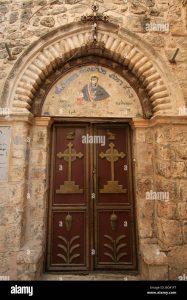
'Upper Room'. {Syriac Monastery of St. Mark / Jerusalem}.
Continued: As an example: : "Lucius had known from the very beginning of his affliction - that if only he could eat a rose, then he would return to his human condition. Now, an initiate priest in the processional {prepared for such action by the goddess} holds towards the ass a bunch of roses. The Golden Ass, rich with all the knowledge and suffering he has gained through his bestial servitude, eats the roses, and is transformed, as in a miracle, back into the 'higher' man." [Same book].
''Upper'' in relation to ''higher'' and/or ''rose'' in relation to ''Rostau''? Enlarged elsewhere.
Djedefre?
Rostau in relation to the Osiris shaft. Understanding that, gives clues as to a possible location.
N.B. Osiris = God of the Moon. OR MORE IMPORTANTLY - WHAT THE 'moon' REPRESENTS.
"Those who read the wild Latin of Lucius Apulcius would have known that the Latin for rose, {Ros}, was also the name used for the dew - fall from 'Heaven,' the secret liquor of the Moon, which was one of the mysteries of the Ros-icrucians." [Notes for the above paragraph. Same book].
Question. Is the ''rose'' OR ''dew-fall'' REPRESENTED within the Giza complex?
'See' it?
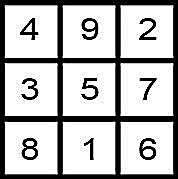
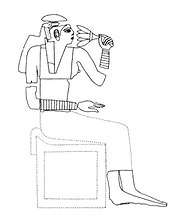
We have spent much time considering the detailed imagery of a seventeenth-century interpretation of the Mysteries of the Goddess. They indeed are the mysteries of the Rose in the Rose Cross. The feminine powers have a prominent place within it—the Virgin of Lights and all her maidens, the Queen whose altar it is that contains the seven central Mysteries, the sleeping Lady Venus, the active Cupid who is the child of the goddess of love. All are clear indications of the feminine power and the creative sexual dynamics or kundalini that is at the centre of the Mysteries. We will now examine an example of these self-same Mysteries from a different period, as revealed in “The Transformations of Lucius Apuleius of Madura’, popularly called The Golden Ass. This was written in the second century AD, one and a half millenia prior to The Chymical Marriage. Lucius Apuleius, born c. 120 AD, was an initiate in the Mysteries of Isis, and his book is more revealing of the Mysteries of Isis than most people suspect.....You may stand in the centre of your circled cross.and realize it as a point of balance—as a condition to which you should aspire. When you have balanced the elements of your nature as represented by the arms of the cross, then may the rose of the . spirit bloom. This is one meaning of the Rose Cross.
''We are here at one of the entrances to the great temple at Amon, where the image of water is always evoked. Accentuating this element, the composition goes so far as to use long lines of 'prisoners' to symbolise undulating waves of water. In terms of the myth {of Kadesh}, Amon indeed manifests himself in the dew. The effect produced here by the superposition of two successive scenes is found clearly expressed in the interior of the Great Hall at Karnac by the representation of the Theban triad in a naos poised on water....After the battles of Kadesh by Ramses {''birth of Ra''}, let us again cite a symbolic gesture of Thothmes III, whose name means 'birth of the moon'....'' [Page 127-137 'Sacred Science' / R. A. Shwalle de Lubicz].
Side note: "Horeb" is thought to mean glowing/heat, which seems to be a reference to the Sun, while Sinai may have derived from the name of Sin, the Ancient Mesopotamian religion deity of the Moon,[2][9] and thus Sinai and Horeb would be the mountains of the Moon and Sun, respectively.''
And/or: ''It is well established that the battle of Kadesh took place in the bend of a Orontes river, during the 5th year of the reign of Ramses. What is difficult to understand, however, is why the king, after having single handedly vanquished the army......must continue to fight against them for 'fifteen' more years....'' [Page 127].
Thebes and Karnac also within a 'bend' just as the Temple of Amun is at Jebel Barkal.
180 and/or semicircle as a means...?
J[b]...The true identity of Fulcanelli.
J[c]....The connection between the 'Tetragrammaton', [YHWH ], of Kabbalah fame. Part explanation of which can be found in such books as ‘Garden of Pomegranates’. By Israel Regardie, [or even Wikipedia, i.e.,'to be'...'to exist'... by way of an 'understanding'...that inner one]... and the Hebrew settlement on Elephantine Island / Egypt. Why was it that those Hebrews only used the first three letters [YHW.]...purposely?, [i.e., in correspondence. ‘The Elephantine papyri in English over 3000 years'. By B. Porten ].
Joyous Garde?
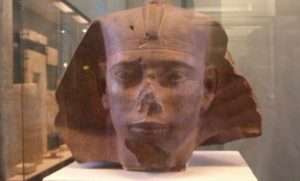
He is the king who introduced the royal title Sa-Rê (meaning “Son of Ra”) and the first to connect his cartouche name with the sun god Ra.
Side note: The dynamics of the circled cross are, comparatively, at a superficial level of form expression. Although much can be achieved by exercises constructed around their Elemental principles they are but a preliminary to a more powerful, deeper mode of working, discovery and expression. This is brought about by concentration upon the centre; that which is concealed by the symbol of the crucified rose....In a more figurative mode of symbolism the magic circle could be envisaged as a shallow bowl of petals, so becoming a lotus or a wild rose. And this line of symbolic mentation that extends from geometric abstraction towards patterns in plant life forms may, by further logical extension, lead us to anthropomorphical symbolism, whereby human figures are used to represent the various forms of spiritual life expression....
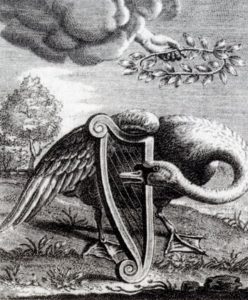
Reinier van Persijn (1615 – 23 November 1668) was a Dutch Golden Age engraver of portraits and bookplates. Sacred to Apollo. Delos to enlarge.
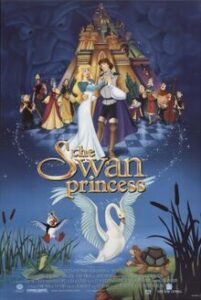 In this way god forms, angelic, or elemental representations in human shape, are formulated at the Quarters. Similarly, in the centre, we may form a representation of the spirit of the rose. This would be a perfect human form of spiritual expression in the lower worlds. This is, most appropriately, the form of the Goddess; she who sits at the centre of the wheel of life experience, spinning the thread of life and weaving it into the fabric of the worlds of form....
In this way god forms, angelic, or elemental representations in human shape, are formulated at the Quarters. Similarly, in the centre, we may form a representation of the spirit of the rose. This would be a perfect human form of spiritual expression in the lower worlds. This is, most appropriately, the form of the Goddess; she who sits at the centre of the wheel of life experience, spinning the thread of life and weaving it into the fabric of the worlds of form....
This is an image of extreme profundity. The Goddess appears in various forms and guises in different mythologies. And particularly in the most ancient ones where, through the overlay of later mythological and religious development, she may often appear in threatening guise.
It is therefore of paramount importance that mankind realizes ~ the inner nature of the Earth, and comes to terms with the profound and beautiful reality of the Goddess. This is more _ demanding, yet infinitely more fulfilling in every way, than the fantasies and fears of immaturity.
......................................

'Opening of the mouth'? Swan Upping?

Aswan?
The most ancient feminine powers and man’s relationship to them are enshrined in the story of Medusa. This is, in turn, a part of the myth of the hero Perseus, the characters of whose story are to be found in the constellations of the Northern Sky (Perseus, Andromeda, Cepheus, Cassiopeia, etc.) rotating round the Pole. In ancient times, almost beyond the dawn of memory, there was said to be a beautiful garden far, far, in the West. There a magical orchard grew, with an especial tree from which golden apples could be obtained. This was the Garden of Hesperides.
The especial tree was guarded at its root by a serpent. And the way to it, which was across a dark and deep underground sea, was guarded by three sets of sister goddesses. From very ancient times the goddess has been associated with the number three, and here we have this principle concentrated in power, by the three sets of sisters three: the Naiads, the Graiae and the Gorgons. It is to each of these in turn that Perseus goes for assistance in his hero’s quest.
And/or: ''In cookery, bread that does not rise is said to be sad.'' ['The Chase'].
'Bread and Wine'?
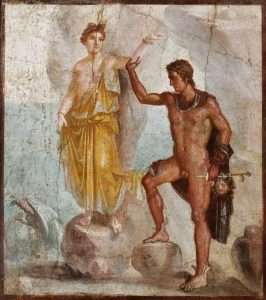
'Silk', goat or bear skins?
"Perhaps the most fascinating question is that of religion. It is not surprising that the Arameans at Syene had shrines to their gods, but the presence of a Jewish Temple to YHW at Elephantine was quite unexpected. When and why was it established?" ['Archives from Elephantine' / B. Porten].

'Hand' of the elephant. Think about it relative to ''Hand of the Lion." And/or claw {hand?} of the eagle? {Sea eagle?}. And/or Claw of Scorpius. and/or Paws of the Sphinx - especially in relation to the Dream {archetypal?} Stele. And/or Hooves of the deer? And/or Hand of Bootes? {Part 4}.
Why did they omit that final letter. What did they know? i.e., once understood it explains why it was the only 'Temple' to be 'officially acknowledged' outside of Jerusalem. That relationship with ISAIAH 19:19. It also ties in and 'connects' the three major re-ligions, to the ''pagan'' one i.e., ancient Egyptian, [ i.e., this subject, especially in relation to 'King-ship', of which some believe our modern concepts of ''morality'' originated from] - Islam, Hebrew , and Christianity. The clue lies in the letter ‘H’. Notice that there are two. It represents or is symbolic of a window / gateway / doorway..etc. Not literal, i.e., no ‘Astral porthole’. Symbolic only, i.e., Gateway to the heart. Window to the soul etc. Indicative of that development. In relation to a ‘journey’. REPRESENTATION OF.
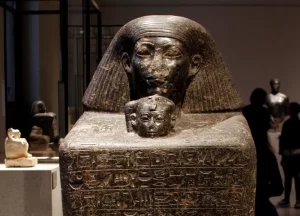
Ananke was the name of a primordial deity in Greek mythology, the personification of necessity and fate. She was depicted holding a spindle, and she was present when the universe began, along with her consort, Chronos (time). Ananke and Chronos both had the figure of a serpent, and were intertwined and revolved around the primal egg of matter; when they applied force, the primal egg split into the parts of the universe (earth, heaven, and sea). Ananke was believed to rule over fate, and being the mother of the Fates, she was the only one that could control their decisions. {www.greekmythology.com}. 'Squatting' to enlarge. 'Stick'?
Question. What is the difference between Altar of Witness and/or Altar of Sacrifice?
"It should be observed that when we treat in this work of any homonym { 'keys'/'signs'}, we do not desire you to confine yourself to that which is stated in that particular chapter; but we open for you a portal and direct your attention to those significations of the word which are suited to our purpose...." [Page 21 'The Guide for the Perplexed' / Moses Maimonides].

'light oxen': "I bring up an individual type as a point of departure to talk about. The one {'emotion'?} that is strongest will pull you first." [Page 4 'Stopping and Seeing' / Translated by T. Cleary].
''To walk with'' something. Hand in hand?
Joined at the hip?
'Discworld' by T. Pratchett.
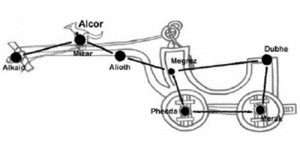
In North Germany Alkor, as there written, has been der Hinde, the Hind, or Farm Hand; in Lower Germany, Dumke; and in Holstein, Hans Bumken, Hans the Thumbkin, — the legend being that Hans, a wagoner, having given the Saviour a lift when weary, was offered the kingdom of heaven for a reward ; but as he said that he would rather drive from east to west through all eternity, his wish was granted, and here he sits on the highest of the horses of his heavenly team. A variant version placed Hans here for neglect in the service of his master Christ ; and the Hungarians call the star Oontzol, with a somewhat similar tale. Another Teutonic ston was that their giant Orwandil, our Orion, having frozen one of his big toes, the god Thor broke it off and threw it at the middle horse of the Wagon. where it still remains.
'Elephant in the Dark' By ?
Alkaid /ælˈkeɪd/, also called Eta Ursae Majoris (Latinised from η Ursae Majoris, abbreviated Eta UMa, η UMa),[10][11] is a star in the constellation of Ursa Major. It is the easternmost star in the Big Dipper (or Plough) asterism. However, unlike most stars of the Big Dipper, it is not a member of the Ursa Major moving group.[12] With an apparent visual magnitude of +1.86, it is the third-brightest star in the constellation and one of the brightest stars in the night sky.
A side step: "Sometimes YHWH comes first, and is followed by Adonoy. An example of this is the verse, ''YHWH Adonoy is my 'strength', he makes my feet like hinds {'doe'}." [Page 133, 'Meditation and Kabbalah']. Try part 4.
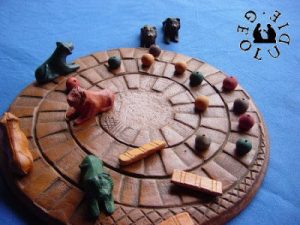
Two lions shown at the top of that same stela. Never mentioned. ''SEE'' the parts to ''grasp'' and ''gather'' the WHOLE.
"There on a limestone stela, this new kingdom pharaoh refers to the Sphinx under the names Hor-em-Akhet and Horakhti, and also makes a direct reference to the Giza pyramids which - to the annoyance of Egyptologists - he does not ascribe to his fourth dynasty predecessors Khufu, Khafre and Menkaure, but rather nominates as 'the pyramids of Hor-em-Akhet' {Horus in the horizon}. The clear implication is that in Amenhotep's time - there existed no historical archives, nor even any tradition, that linked the pyramids with the obvious three pharaohs...Chronologically, the next inscription referring to the Sphinx occurs on the famous 'Dream Stela'...found in a standing position {'vertical'?} between the paws of the Sphinx {'horizontal'?}: 'Behold, thou me. See thou me my son Thutmosis. I am - Hor-em-Akhet...who will give you my kingdom on earth..." ['The Magicians of the Gods'].
"Consciousness is represented by the horizon..." ['The 12 Astrological Houses: The Way of Creative {anima?} Accomplishment' / Dane Rudhyar].
Question. If the pyramids {and therefore Orions belt , i.e., indicative of achieving something, i.e., 'under his belt'} - links up to 'Horus in the horizon' - then where would be the representation - within a landscape - of 'Horus of the horizon' ?
And/or: {refresher}: "We have come now to our study in Libra, which the sun enters at the fall equinox."
Leo/Virgo in relation to Libra. First six signs below the 'horizon'. Later six above it.
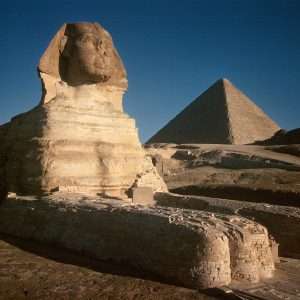 ''Libra (♎︎) (Ancient Greek: Ζυγός, romanized: Zygós, Latin for "scales") is the seventh astrological sign in the zodiac. It spans 180°–210° celestial longitude.[2] The Sun transits this sign on average between September twentytwo and October 23.[3][4] The symbol of the scales is based on the Scales of Justice held by Themis, the Greek personification of divine law and custom.[5] She became the inspiration for modern depictions of Lady Justice. The ruling planet of Libra is Venus along with Taurus.[6][7] Libra is the only zodiac sign that is represented by an object; with the other eleven signs represented by either an animal or mythological character....Libra is the cardinal modality of the three air signs, the others being Gemini and Aquarius. The main connotations of planets under this sign are sociable, rational, and detached when dealing with situations.[9] Libra is symbolized by the scales and is associated with the Roman deity Iustitia. According to the writer Manilius, Roman judges are born under the sign of Libra. The Moon was said to be in Libra when Rome was founded and this was based on the historical passage, which state "qua condita Roma".[11] Everything was balanced under this righteous sign.''
''Libra (♎︎) (Ancient Greek: Ζυγός, romanized: Zygós, Latin for "scales") is the seventh astrological sign in the zodiac. It spans 180°–210° celestial longitude.[2] The Sun transits this sign on average between September twentytwo and October 23.[3][4] The symbol of the scales is based on the Scales of Justice held by Themis, the Greek personification of divine law and custom.[5] She became the inspiration for modern depictions of Lady Justice. The ruling planet of Libra is Venus along with Taurus.[6][7] Libra is the only zodiac sign that is represented by an object; with the other eleven signs represented by either an animal or mythological character....Libra is the cardinal modality of the three air signs, the others being Gemini and Aquarius. The main connotations of planets under this sign are sociable, rational, and detached when dealing with situations.[9] Libra is symbolized by the scales and is associated with the Roman deity Iustitia. According to the writer Manilius, Roman judges are born under the sign of Libra. The Moon was said to be in Libra when Rome was founded and this was based on the historical passage, which state "qua condita Roma".[11] Everything was balanced under this righteous sign.''
Refresher: "In Leo and Virgo lay now the long forgotten asterism Fahne, of which Ideler wrote: 'The Flag is a constellation of the heavens, one part in Leo, one part in Virgo. Has many stars. On the iron {the arrowhead of the staff} in front one; on the flag two; on every fold of the flag, one...Brown repeats a Euphratean inscription: 'The constellation of the 'Yoke' - 'like a flag floated' - although he claims no connection here, and associates the Yoke with Capricorn." [Page 255 'Star Names and Their Meaning'].
Try ''Pennant''. Part 3.
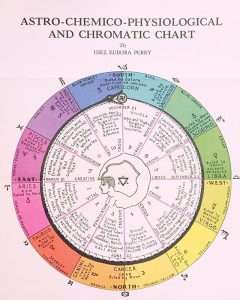
Full circle? A pennant?
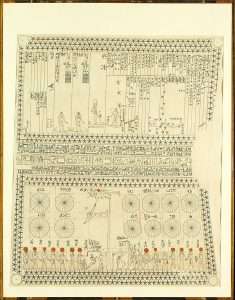
Astro ceiling in Senenmut bare tomb chamber. 'Folded'?
A working example: ''The spirit uses us inscrutably....it plays us like a fish. The further we run...the more line it gives - and the greater the illusion of freedom - until we are reeled in and landed on the shores of another element...Past actions freely chosen...are nevertheless ordained by Providence, pulling us back full circle INTO THE FOLD of oneself - allowing us to find 'her' - waiting for all eternity.'' [Page 363 'Mercurius'].
Interpret those keys to 'see' / connect {yoke?} something further - in relation to the Giza complex. And/or Homers Secret Illiad.
Side note: The author of 'Hermeneutic Interpretation of the Origins of the Social State of Man' uses throughout Will and Destiny in relation to Providence.
Refresher: "Canis Major {The Great Dog} of the southern heavens - and thus Canis Australior, lies immediately to the southeast of Orion, cut through its center by the Tropic of Capricorn, and with its eastern edge on the Milky Way." [Page 117, same book].
"The term 'Lord of Hosts' , NOT found in the papyri, occurs in fragmentary contexts IN three ostraca. In two of these, it appears in the salutation, 'May the lord of hosts, seek your welfare at all times'....The third term appears in a contract dated December 12, 402, more than eight years after the destruction of the temple. Tamut, Ananiah's wife is called ''yhnh OF yhw the god who dwells IN the fortress of Elephantine." [Same book, i.e., by B. Porten].
'The Shasu and Egypt'.
Question. Any coming together of planets on that day?
Side note: ''The Lords Prayer appears twice in the New Testament, a short version in the Gospel of Luke, and a longer one in Matthews Gospel. It is also known as the paternoster or Oratio dominica.'' ['Chase the Case'].
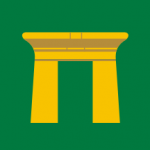 Something to ponder on: "Very frequent mention was made of this constellation in early days, for the Platonists held that souls of men, when released from corporeity, ascended to heaven through its stars, whence it was called the Gate of The Gods {'H'?}; their road of descent having been through Cancer. But some of the Orientals knew it as the Southern Gate of the Sun {'Ascendant'?}, as did the Latins in their altera Solis Porta. Berossos is reported by Seneca to have learned from the old books of Sargon that the world would be 'destroyed' by a great conflagration when all the planets met in this sign." [info., on 'Capricorn' within the book 'Star Names and Their Meaning'].
Something to ponder on: "Very frequent mention was made of this constellation in early days, for the Platonists held that souls of men, when released from corporeity, ascended to heaven through its stars, whence it was called the Gate of The Gods {'H'?}; their road of descent having been through Cancer. But some of the Orientals knew it as the Southern Gate of the Sun {'Ascendant'?}, as did the Latins in their altera Solis Porta. Berossos is reported by Seneca to have learned from the old books of Sargon that the world would be 'destroyed' by a great conflagration when all the planets met in this sign." [info., on 'Capricorn' within the book 'Star Names and Their Meaning'].
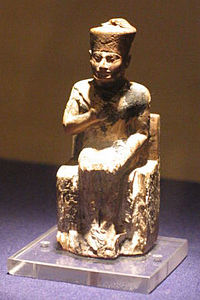
Cassiopeia?
Side note: Question. Many wonder why no artifacts have 'surfaced' over the years {centuries?} in regards to grave goods of many Pharaohs - especially those that represent the Giza complex {Rostau?}. Main answer given = tomb robbers. Purely as a hypothetical exercise; if such grave sites had been plundered what would have been done with the artifacts - i.e.,melted down / private collections / some most likely kept? - surely by now over the {centuries?} something should have come to light {other than one small figurine of Khufu - for the hardnutz enthusiast i.e., but as they know - or should know - that small figure is not 'grave goods'}.
continued....At least {according to the Law of Averages?} one or two items should by now have surfaced, i.e.,could everything have been melted down? The obvious answer is NO - not everything {i.e.,gems/jewels not to mention the larger items etc.,}. The Statute of Limitations surely rules out the other two. Someone by now would have least TRIED - as the fraudsters have already PROVEN {i.e.,they could sense that 'weakness' in the market - due to that time period - that then allowed them to TRY}. As for the third option - maybe nothing has come to 'light' SIMPLY because they are all still buried?
Question. In a single spot/location {'sacrifice'}- for each individual - or in the 'collective' sense of the word {'witness'}?: i.e., which of those possible 'locations' would something least {most?} likely be found accidently? While recalling the link they ALL have with that ONE FIGURE in the night sky.
Question 2. When ALL THE AVAILABLE information is assessed. What does that Kingly Principle that goes by the nickname of Occam's Razor say?
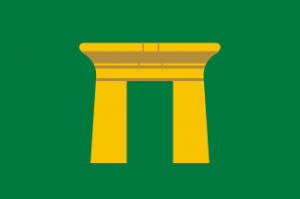
"It is a story about a man who has reached a certain level and is drawn up from one side and kept down from another side. He still wishes to compromise with the men 'in the street', and that side of him represented by his wife, which means some intimate affection, still wishes to go back. The angels tell him he must escape to the mountain - that is, to a higher level of himself — but he cannot do it. The angels in him, the higher understanding, say to him 'escape for thy life'. This is not the physical life but the psychological life and they add: 'Look not behind thee neither stay thou in all the Plain; escape to the mountain lest thou be consumed' (v. 17). But Lot complains; he does not wish to go to the mountain, in fact he is afraid to do so....He begs to be allowed to go to a small city. He feels he is only
capable of a very small change and cannot endure what he is asked to do and knows that he should do. So he argues with the transforming forces in him and says to them: 'Behold now this city is near to flee unto and it is a little one. Ο let me escape thither (is it not a little one?) and my soul shall live', (v. 20) The angels agree and one says: 'Haste thee, escape thither for I cannot do anything until thou be come thither. Therefore the name of the city was called Zoar'. (v. 22) Zoar means smallness. No one can escape from himself unless he has somewhere to go to. A man cannot change himself unless he has
already something new to go to. Before the old can be destroyed something new must present itself." {'The Mark' / M. Nicoll}. Abydos-Qena?
''It should not surprise us that after 4500 years no mummies have been found in Old Kingdom pyramids. However, we have ABUNDANT EVIDENCE that pyramids were tombs. We have hieroglyphic texts that say IN NO UNCERTAIN TERMS that the mummy of the king were buried in the pyramid.'' ['Legend of the Pharaohs' / Colleen Darnell].
Sed Jubilee? {Heb-Sed}.
Question. Is that the REAL REASON behind the relocation of the city of Cairo. Looking for those lost Kings of Giza?
''These are cold cases. The oldest cold cases of tomb robbery in the books.'' [Mark Lehner- in relation to the missing three Pharaohs. 'Lost Tombs of the Gt. Pyramid' / Nat. Geo].
Issiah 19:19 - to enlarge.
"How the elephant got into my pajamas I'll never know." [Marx - Animal crackers].
'Razor-back'?

Maester's = ''Knights of the mind''. Question. Does he like his 'porridge'? {inside joke by Norman Stanley}.
"Political considerations have led to the suggestion that the Elephantine Jewish community was established during the reign of Manasseh. Religious considerations suggest that the Jewish Temple was also built during his reign. Manasseh ruled for fiftyfive years - the longest of any Israelite king. The one outstanding feature of his reign was his many pagan innovations. These included the erection of altars to the host of heaven...and the establishment of a graven image of Asherah...These acts brought on prophesies that the Lord himself would destroy Jerusalem....It may be surmised that priests as well as prophets opposed his paganism. Some of these priests fled to Egypt, joined the Jewish garrison at Elephantine, and there, inspired by the prophecy of a pillar to the Lord at the border of Egypt, erected the Temple to YHW..." ['Book by B. Porten].
Coincidence or a synchronistic one? Try 'Ash-erah'' and/or ''Saturn'' for something extra.
It may also ''be surmised'' that all concerned {i.e., Manessah and his most trusted high priests} knew something. Subject material? After all we are back to the original question. Mr Porten believes that STILL missing 'H' to be: "It is likely that the inner most sanctuary contained a sacred pillar, as did the inner sanctum of the Israelite Temple at Arad."
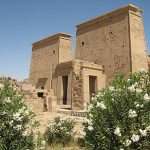
''H'' ?
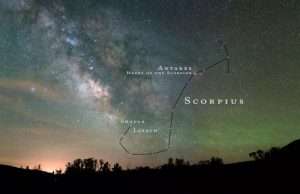
The tail end of the ''stinger'' = two swimming ducks.
So the question is. Did that temple go by the 'name' YHWH or YHW?
Synchronistic{?}: "In exile, Ezekiel said the Lord was to Israel a ''reduced sanctuary'' {'H'?}." Same book.
Side note: "Among the Jews it was the tribal symbol of Ephraim and Manasseh, from Jacob's last words to their father Joseph, ''his bow abode in strength.'' ['Sagittarius' from the book 'Star Names and their Meaning'].
''Rainbow''?
"Shiloh is a name that appears in the Bible in different contexts12. It is a figure mentioned in Genesis 49:10 as part of Jacob's blessing to Judah, possibly referring to Solomon or the Messiah12. It is also an ancient city that served as the religious capital of Israel for 300 years, where the Ark of the Covenant was kept until it was captured by the Philistines345. Shiloh was located in the Ephraim hill-country, north of Beth-El and south of Lebonah5. Shiloh was the site of sacrifices, festivals, and the upbringing of the prophet Samuel..."
Jubilee?

The Nights Watch. At the extremes {borders} of the 'earth'?
Postscript: "The repentant Manasseh was restored to his kingdom and started to rebuild Judah militarily (2 Chronicles 33:14), and he also began to institute religious reforms. “He got rid of the foreign gods and removed the image from the temple of the Lord, as well as all the altars he had built on the temple hill and in Jerusalem; and he threw them out of the city. Then he restored the altar of the Lord and sacrificed 'fellowship offerings' and 'thank offerings' on it, and told Judah to serve the Lord, the God of Israel” (2 Chronicles 22:15–16).

Crossroads.
Even though Manasseh had a personal conversion, he was never able to lead Judah out of the sin that he had previously led them into. They did not follow him in his reforms. The people continued in their idolatry (2 Chronicles 33:17), and, when Manasseh died, his son Amon “did evil in the eyes of the Lord, as his father Manasseh had done." Amon worshiped and offered sacrifices to all the idols Manasseh had made. But unlike his father Manasseh, he did not humble himself before the Lord” (2 Chronicles 33:22–23).
Side note: ''Right now, i feel very peaceful. I just want to be a regular, ordinary person. I want to live humble and live simple - Until i'm gone from this earth.'' [Bun Tek Ngoy: 'The Donut King' / 2020].
Continued: Manasseh is a tragic figure in Scripture. Although he repented of his sin, he was unable to undo the damage he had done to the nation or to his own son who followed him. Manasseh demonstrates that, while any sin may be forgiven when we repent, forgiveness does not necessarily remove the natural consequences that flow from disobedience." [Wiki].
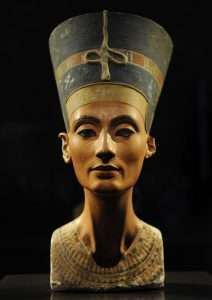
Light of the mind?
Amon in relation to Amun? As a means...?
Postscript: Regardless of that final statement {opinion?} - it does not change that original question, in relation to {one?} of those universal constants. Those 'constants' that can be attempted to be defined by all and sundry. Kings, Queens and commoners alike. And if, while understanding the 'mind set' of such individuals - discoveries are made - whether on paper or {say} within a landscape - then such ''tragic figures'' will no longer remain tragic? Try ''Saturn'' to understand why.
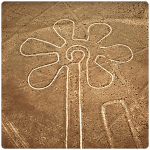 Side note: "The golden flower symbolizes the quintessence of the paths of Buddhism and Taoism. Gold stands for light, the light of the mind itself, the flower represents the blossoming, or opening up, of the light of the mind. Thus the expression is emblematic of the basic awakening of the real self and its hidden potential....
Side note: "The golden flower symbolizes the quintessence of the paths of Buddhism and Taoism. Gold stands for light, the light of the mind itself, the flower represents the blossoming, or opening up, of the light of the mind. Thus the expression is emblematic of the basic awakening of the real self and its hidden potential....
Amun = "hidden".
Amun-Ra = that which was hidden is now 'illuminated'.
'See' it?
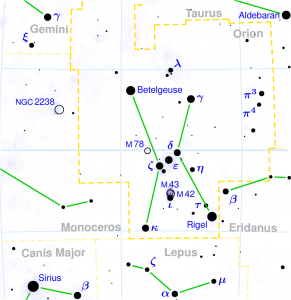
Four 'elements': Fire/air. Water/earth. What about the 'fifth' one?
.....The golden flower is light. What colour is light? It is symbolized by the 'golden flower', which {in Chinese characters} also conceals the words 'one light' within.....a unified energy.....This is what is meant by the saying "The lead in the homeland of water is just one flavour.".......
Upstream or downstream? Salmon to enlarge.

Any light?
.....The whole method of turning the light around uses the method of reversal. The beauties of the highest heavens and sublimest realms are all within the heart: this is where the perfectly open and aware spirit concentrates {mercurius?}. Confucians call it the open center {'forecourt'?}, Buddhists call it the pedestal of awareness {'horizon?}. Taoists call it the ancestral earth, the yellow court, the mysterious path, the primal opening....Lead symbolizes the true SENSE of real knowledge. Water stands for a symbol from the ancient I Ching representing the true sense of the knowledge of reality enclosed within conscious knowledge {'intuition / flank'?}. To say that it is just one flavour means that it is attained by the essence of consciousness itself, not by any modification of consciousness....The golden flower is the same thing as the gold pill. The transmutations of spiritual illumination are all guided by mind." [Pages 1/10/75 'The Secret of the Golden Flower' / T. Cleary].
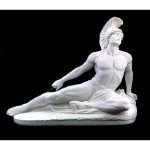
The death of Achilles.
'Golden nuggets' of.....?
Hendaye to enlarge.
A working example: One large fish found in the newest discovered city in Egypt. Called The Dazzling Aten. Never seen anything like it before. It had in its mouth a nugget of gold.
Salmon?
Question. Upstream or downstream?
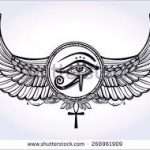
Eye of the mind. Blink and miss?
Refresher: ''All cereal nature means wheat, all treasure nature means gold, all generation means man,'' says the medieval sage Meister Eckhart. And if one looks at this from a psychological standpoint, it is certainly so. The whole inner psychic reality of each individual is ultimately orientated toward this archetype symbol of the Self." ['Man and his Symbol'. Enlarged elsewhere]. Try ''quern''.
'A grain of wisdom.'
Question. How many grains make a cake?
Funerary or wedding cake?
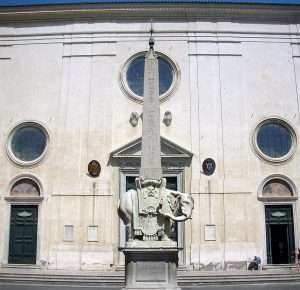
Round the corner from....?

Kiosk at Philae facing east. 'AE'?
A work in progress: At the head of the church of the Holy Sepulchre, in the wall outside, not far from the place of Calvary, is the place called Compas, which our Lord Jesus Christ himself signified and measured with his own hand as the middle of the world, according to the words of the Psalmist, "For God is my king of old, working salvation in the midst of the earth."[79] But some say that that is the place where our Lord Jesus Christ first appeared to Mary Magdalene, while she sought him weeping, and thought he had been a gardener, as is related in the Gospel....
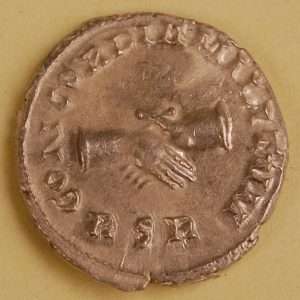
Reverse of a Carausius silver denarius from the Hoard, showing two clasped hands (symbolising the unity of the ruler and the army), alongside the abbreviation 'RSR'. This alludes to a line from Virgil's Eclogues - Redeunt Saturnia Regna or "The Golden Ages have returned".
These most holy places of prayer are contained in the court of our Lord's Sepulchre, on the east side. In the sides of the church itself are attached, on one side and the other, two most beautiful chapels in honour of St. Mary and St. John, as they, participating in our Lord's sufferings, stationed themselves beside[39] him here and there. On the west wall of the chapel of St. Mary is seen the picture of our Lord's Mother, painted externally, who once, by speaking wonderfully through the Holy Spirit, in the form in which she is here painted, comforted Mary the Egyptian, when she repented with her whole heart, and sought the help of the Mother of our Lord, as we read in her life.
On the other side of the church of St. John is a very fair monastery of the Holy Trinity, in which is the place of the baptistery, to which adjoins the chapel of St. John the Apostle, who first filled the pontifical see at Jerusalem. These are all so composed and arranged, that any one standing in the furthest church may clearly perceive the five churches from door to door. ['The Travels of Saewulf'].
'Line of sight'?
A planetary conjunction occurs when two or more planets appear close to each other in the sky. Such proximity of planets is an optical illusion — in reality, they are very far away from each other.
E-W?
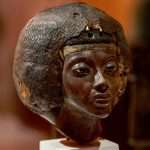
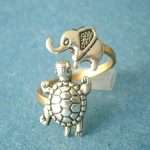 Continued: : "In the succession of Celtic kingship, it is the king's nephew, not the king's son, who has precedence. The blood of the mother, not the father, confers royal status, hence the kings sister produces the heir. Matrilinear succession is clearly an ancient practice...." [Page 77 'Mabon and the Mysteries of Britain'].
Continued: : "In the succession of Celtic kingship, it is the king's nephew, not the king's son, who has precedence. The blood of the mother, not the father, confers royal status, hence the kings sister produces the heir. Matrilinear succession is clearly an ancient practice...." [Page 77 'Mabon and the Mysteries of Britain'].
'Hamlet'?
David?
Refresher: "While it would be a gross simplification to identify the Native Tradition with the feminine, and the Hermetic with the masculine, there is a symbolic truth to be uncovered here {'naked'?}." [Page 142 'The Western Way' Vol 1].

Wooden map?

Stone map?
From a different perspective: Tracking the Anasazi {Hopi}: A Mythological Perspective: ''The primordial age was infused with Tokpela, an immense empty space beyond time or light. All was void existing in the mind of Tawa {Taiowa}, the Creator. Because he was lonely he created a nephew called Sotuknang, the Heart of the Sky god, to act as his messenger. Out of this endless space Tawa directed Sotuknang to create the First World. He then made the earth, the waters and winds. He put them in their proper places and set them in motion {static/dynamic?}. Koyanwuhti, or Spider Grandmother, was there as well. She presided over the mysteries of the Below, while Tawa controlled the power of the Above. In addition there was another being named Masau'u, the spirit of the earth {mercurius?}, sometimes referred to as the Great Spirit. Together with Spider Grandmother he would have dominion over the terrestrial realms and the Underworld.....The Hopi used a STONE map or maps given by Masau'u in consort with Spider Grandmother to guide them in their journeys. They followed certain sidereal signs such as moving stars or constellations to tell them when and where to travel.'' [Page 10/23 'The Orion Zone' / Gary David].
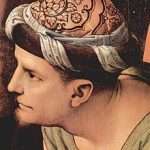
linen, cotton or wool? Goaty?
And/or: "Harpocrates was a very popular god for the Greco-Egyptians. The young Horus was not the brother of Set, but his nephew, he symbolised the forces that protect childhood. He was adopted into Christianity as the baby Jesus...For the Nile dwellers, his finger held before his face {'transforming'? } was the sign of a nursing babe {of 'blue'?} - the time when according to the Egyptians you received your secret soul name from your 'mother'...Harpocrates is your authentic Self." [Page 260 'Overthrowing the Old Gods' / Don Webb].
'Finger Lakes' to enlarge.
Question. Who was the nephew of Jesus?
"We don't know the purpose of the white quartz pebbles. There found in mortuary context from pre-historic periods onward and also medieval cemeteries. There's a passage in the Bible - Revelations- about a person who has found Christ is given a white stone - and in that - a new name." [Same program].
New ''City''?
Coincidence or a meaningful one? IF only in defining a MIND SET.
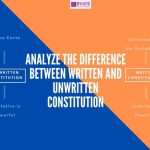 ''The word Medina is an Arabic word for the oldest part of North African cities.'' ['The Chase'].
''The word Medina is an Arabic word for the oldest part of North African cities.'' ['The Chase'].
''After Ali, the first political dynasty of Islam, the Umayyads {661-750}, came into power. There had, however, been some friction within the Muslim community on the question of succession to the Prophet after his death: the Shi'is, or supporters of Ali, felt that Ali and not Abu Bakr was the appropriate person to take on the mantle of head of the community. They believed that the leadership should then follow the line of descendants of the Prophet, through the Prophets cousin and son-in-law Ali. '' [Introduction {xiv} 'The Qur'an / M. A. S. Abdel Haleem].
Try 3:3 to enlarge.
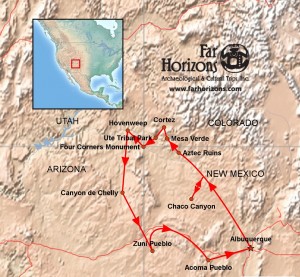 And/or: "The first world was Tokpela {'Endless Space'}. But first, they say, there was only the creator, Taiowa. All else was endless space. There was no beginning and no end, no shape, no life. Just an immeasurable void that had its beginning and end, time, shape, and life in the mind of Taiowa the creator. Then he, the infinite, conceived the finite. First he created Sotuknang to make it manifest, saying to him: 'I have created you, the first power {energy?} and instrument as a person, to carry out my plan for life in endless space . I am your 'Uncle'. You are my Nephew. Go now and lay out these universes in proper order so they may work harmoniously with one another according to my plan." [First para, first page, first chapter 'The Book of the Hopi' / Frank Waters].
And/or: "The first world was Tokpela {'Endless Space'}. But first, they say, there was only the creator, Taiowa. All else was endless space. There was no beginning and no end, no shape, no life. Just an immeasurable void that had its beginning and end, time, shape, and life in the mind of Taiowa the creator. Then he, the infinite, conceived the finite. First he created Sotuknang to make it manifest, saying to him: 'I have created you, the first power {energy?} and instrument as a person, to carry out my plan for life in endless space . I am your 'Uncle'. You are my Nephew. Go now and lay out these universes in proper order so they may work harmoniously with one another according to my plan." [First para, first page, first chapter 'The Book of the Hopi' / Frank Waters].
Nuit? As a means....?
And/or: ’'A symbol is an energy-evoking and direct agent’' { J. Campbell }.
Refresher: Postscript: Regardless of that final statement {opinion?} - it does not change that original question, in relation to {one?} of those universal constants. Those 'constants' that can be attempted to be defined by all and sundry. Kings, Queens and commoners alike. And if, while understanding the 'mind set' of such individuals - discoveries are made - whether on paper or {say} within a landscape - then such ''tragic figures'' will no longer remain tragic? Try ''Saturn'' to understand why.
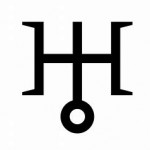
Synchronistic? Try ''semi-circle'' and/or ''Janus''.
And/or: "The symbol for Uranus looks like a complex television aerial standing on a globe, but some interpretations merely point to the capital 'H' of Hershel, the planet's discoverer. Perhaps these are escapes from the complexity of the make-up of the symbol itself. The cross of matter stands on the circle of spirit like the old Mars glyph, but two separated, outward facing semi-circles are also attached. They may be two soul receptors 'feeding' higher knowledge into the material cross elevated on spirit, or perhaps the soul half-circles are Janus faced, suggesting a sacred doorway to new and unexpected levels of understanding. There is no single correct explanation, but meditation on the possibilities can lead to intuitive perception of deeper meaning." ['How to Interpret a Birth Chart' / M. Freeman].
Side note: ''The word 'television' comes from the Greek word meaning 'far' and the Latin word for 'sight'....'' ['Tipping Point' / 2021].
'Line of Sight'?
CONTINUED: Neanderthal skeletons found in a cave in Mercia - S/E Spain - First known burial - with the 'paw of a panther'. {Eden/satellite program. 'Decoding Neanderthal'}.
Analogy? { in the modern sense of the word}: "I very nearly paid the ultimate price when PTSD took over as i desperately clawed my way out of that dark place. I was extremely lucky to get the help i needed to recover, focused on getting my body fit and allowing my mind to regain its strength. As i move into a new chapter of my life, blindfolded as to what the normal world has to offer, i will take the same relentless drive into anything and everything i do, to show my family that anything is possible...." [Final page 'Soldier Spy' / T. Marcus].
Mayan equivalent = the claws of a jaguar?
Side note: ''The high priests and priestesses of Egyptian religions, or the ''first prophet of the god'' as they were called, wore panther skins rather than the traditional white linen. For any other man or woman, the wearing of any animal skin, was forbidden...'' [Page 346 'Dreams of Isis'].
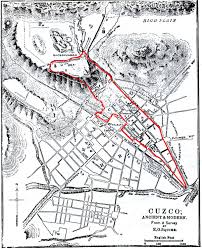
S/E - N/W?
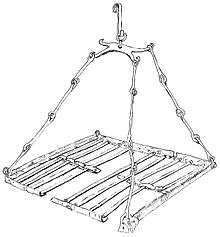
Suspension chain of 'Twentysix' hooks used for a cauldron. Found at Sutton Hoo.
And/or: "Remembering that the great temple of Edfu in Upper Egypt was dedicated to the god Horus, who was sometimes depicted as a falcon and sometimes as a lion, it is intriquing to discover that the very name 'Sacsayhuaman', means Falcon {specifically 'Satisfied Falcon'}. Furthermore, it has long been recognised that Sacsayhuaman {'head'} forms part of a large geoglyph, once visible from surrounding mountain peaks, in which it combines with the oldest quarters of Cuzco {'Rock of the Owl'}, to form the shape of an immence feline - Puma {'panther'?}, the closest creature in the America's to the old world lion. The river Tullumayo used to serve as its spine. The torso was the spit of land between Tullumayo to the east and the river Huatnay to the west...The snout facing due west, the direction of the equinox sunset, just as the Sphinx of Giza faces due east, the direction of the equinox sunrise.'' ['Magicians of the Gods'].
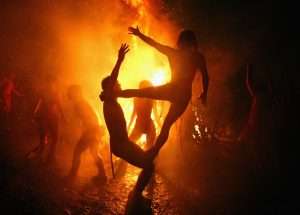
"In the Hindu festival of Janmashtami young people form human pyramids to break pots of milk." ['The Chase' / S16 EP5].
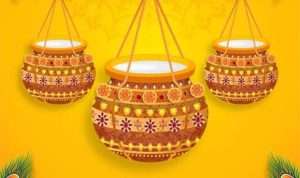
Krishna Janmashtami, also known simply as Krishnashtami, Janmashtami, or Gokulashtami, is an annual Hindu festival that celebrates the birth of Krishna, the eighth avatar of Vishnu. In certain Hindu texts, such as the Gita Govinda, Krishna has been identified as supreme God and the source of all avatars. Krishna's birth is celebrated and observed on the eighth day (Ashtami) of the dark fortnight in Shravana Masa or Bhadrapada Masa. This overlaps with August or September of the Gregorian calendar.
And/or: ''The English name, dandelion, is a corruption of the French dent de lion[32] meaning "lion's tooth", referring to the coarsely toothed leaves. The plant is also known as blowball, cankerwort, doon-head-clock, witch's gowan, milk witch, lion's-tooth, yellow-gowan, Irish daisy, monks-head, priest's-crown, and puff-ball;[33] other common names include faceclock, pee-a-bed, wet-a-bed,[34] swine's snout,[35] white endive, and wild endive.''
And/or: ''The plant antirrhinum was named for the resemblance of its flowers to an animals snout....It derives from the Greek for 'counterfeit nose'....'' {'Impossible' / S6 EP31].
'Artificial'?
Antirrhinum is a genus of plants commonly known as dragon flowers or snapdragons because of the flowers' fancied resemblance to the face of a dragon that opens and closes its mouth when laterally squeezed. They are also sometimes called toadflax[1] or dog flower.[2] They are native to rocky areas of Europe, the United States, Canada, and North Africa. Antirrhinum species are widely used as ornamental plants in borders and as cut flowers. The word "antirrhinum" is derived from the Greek ἀντίρρινον antirrhinon which in turn is derived from ἀντί anti "opposite, counterfeiting", and ῥίς rhis "nose" (GEN ῥινόϛ rhinos); from its resemblance to an animal's mouth.''
'Teeth'?

Everything within the tomb 'stretched'?
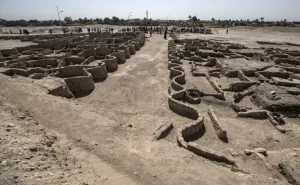
''The signs Gemini and Virgo are alloted to Mercury. This association accounts for Virgo sometimes represented with the caduceus.''
Side note:: ''The suggestion that Nefertiti changed her role, and in so doing became invisible to us, deserves more consideration.....a theory proposed that Nefertiti transformed herself into a female king to rule alongside Akhenaten as a co-regent....Much of this evidence comes from the Tutankhamen tomb....a gilded statuette which depicts a king dressed in a kilt and white crown, standing on the back of a leopard...with ''prominent breasts and low hips''....some argue it is for a women, others for a young Tutankhamen.'' [Page 179 'Nefertiti's Face' / J. Tyldesley].
'Broad hipped'?
N.B. Amen {Amun} NOT Aten.
''Sixteen'' to enlarge.
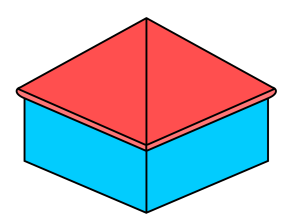
"Pavilion" hip roof on a square plan with pitches rising to a peak.
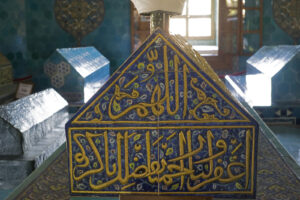
The Green Tomb (Turkish: Yeşil Türbe) is a mausoleum of the fifth Ottoman Sultan, Mehmed I, in Bursa, Turkey. It was built by Mehmed's son and successor Murad II following the death of the sovereign in 1421. The architect Hacı Ivaz Pasha designed the tomb and the Yeşil Mosque opposite to it.[1]
In addition to the sultan's sarcophagus, it contains seven other tombs: those of his sons Mustafa, Mahmud and Yusuf, his daughters Selçuk, Ayşe and Sitti and his wet nurse (Daye Hatun). Set amid cypresses on top of the hill in the Yeşil neighborhood in Bursa, the mausoleum stands higher than the rest of the complex. It is built on a hexagonal plan and crowned with a hemi-spherical dome. The exterior of the mausoleum is clad with the green-blue tiles that give it its name.
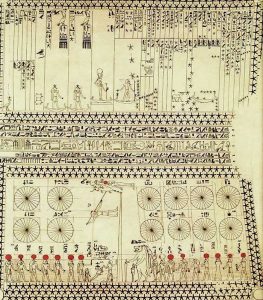
Pyramid Texts?
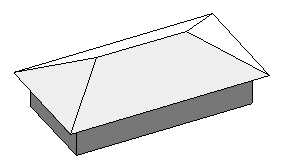
Common hip roof on a rectangular plan with pitches rising to a ridge.
Hip roofs can be constructed on a wide variety of plan shapes. Each ridge is central over the rectangle of the building below it. The triangular faces of the roof are called the hip ends, and they are bounded by the hips themselves. The "hips" and hip rafters sit on an external corner of the building and rise to the ridge. Where the building has an internal corner, a valley makes the join between the sloping surfaces (and is underlain by a valley rafter). Hip roofs have the advantage of giving a compact, solid appearance to a structure. The roof pitch (slope) may vary.
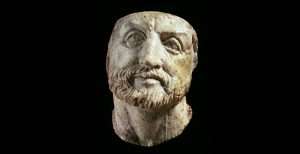
Tomb II remained unlooted and contained an exceptional amount of grave goods. An impressive gold larynx, decorated with plant motifs and marked with the star of Macedon, was found in the main room in a marble sarcophagus and contained the cremated remains of middle-aged male, thought to be Philip II...In one story Phillip losses his eye when he looks upon his wife making love to a serpent.
Side note: Androgyny is the possession of both masculine and feminine characteristics.[1] Androgyny may be expressed with regard to biological sex, gender identity, or gender expression....In the ancient and medieval worlds, androgynous people and/or hermaphrodites were represented in art by the caduceus, a wand of transformative power in ancient Greco-Roman mythology. The caduceus was created by Tiresias and represents his transformation into a woman by Juno in punishment for striking at mating snakes. The caduceus was later carried by Hermes/Mercury and was the basis for the astronomical symbol for the planet Mercury and the botanical sign for hermaphrodite. That sign is now sometimes used for transgender people.
................
Another common androgyny icon in the medieval and early modern period was the Rebis, a conjoined male and female figure, often with solar and lunar motifs. Still another symbol was what is today called sun cross, which united the cross (or saltire) symbol for male with the circle for female.[73] This sign is now the astronomical symbol for the planet Earth.[74]
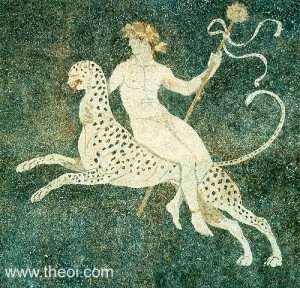
Dionysus 'riding' {in control of?} a panther. Sometimes shown in a chariot drawn by a pair of same. Pine cone staff. Mother Semele {mortal} of Thebes...Anything?
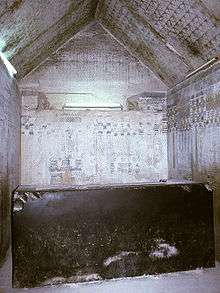
'Three and four'?
Continued: {now in the ancient sense of the 'word'}: "The further back we go in our search for the origins and meaning of the Moon Goddess {i.e., the author defines that as the 'archetypal foundation of feminine psychology {principle?} - AND/OR 'the inner development of the emotional realm' / S/E?} - the nearer do we come to the 'animal' concept. Hecate {mentioned elsewhere} was once known, in the dim past, as the three headed hound of the moon. Artemis was a bear; Isis was Hathor the Cow goddess. Cybele was once a lioness or a lion headed goddess...In later centuries of the Egyptian worship of Osiris {therefore Isis related} - it was said that Apis, the bull, was the spirit of Osiris {hint, hint - see it?}. This saying gives a direct clue to the EVOLUTION of the religious thought...The animal attendants and animal emblems surrounding the goddess in her shrines must have constantly reminded the worshippers of later days, of those 'wilder' aspects of her nature from which she had partly evolved...They were still kept near to her, for she could not be comprehended except in the light of her past...The Bear {as one example}, indeed, represents the fierce and terrible aspect of the 'goddess' {i.e.,anima/animus?} herself, which not only creates but destroys life. Later the two aspects of the goddess became partially differentiated and separated, so that in the famous sculpture {as one example} of 'The Mourning Aphrodite of Lebanon', the animal in this case a boar {'Hog'?} instead of a bear, is killing the 'youthful' Adonis, while Aphrodite laments in deepest grief. Yet the boar, is also Aphrodite herself...The psychological meaning of this gradual change in 'form' is clear. In extremely early days, before civilization had progressed far, feminine instinct was perceived as entirely animal. Then the fierceness of the mothers care for her young and the voracity of her lust for the male in the mating season were the most obvious and dominant characteristics of beast and woman alike...The frequent occurrence of crimes of passion bears witness to the panther like qualities which feminine instinct may develop when frustrated... As civilizations progressed, however, women began developing something nearer akin to the emotion which we call love {'Eros'}, and the goddess of women rose gradually above her animal nature...This rapacious aspect of the moon goddess is represented by the lion or panther; her maternal and nurturing aspect by the cow, whose horns suggest the 'horned moon'..." ['Women's Mysteries: Ancient and Modern']. Try ''deer'' for a connection in ALL cultures.
Question. Matriarch / Patriarch?
Question 2. Those images {archetypes?} that form that ''foundation'' . Which comes first - images that define the psyche or vise versa?
'The Station of the Sun' / R. Hutton.

Platform? Broad hipped?
A work in progress: ''While Mary's life was unique and her role as the FIRST RECORDED WITNESS cannot be repeated, much of 'her' experience can be OUR OWN. In ancient Magdala, we are invited to enter into the mystery of god's love.'' [Page 121 'Mary Magdalene: Insights from Ancient Magdala' / J. Ristine].
 ''When it comes to the encounter between the 'risen' Jesus and Mary, John seemed to have a deeper insight than his fellow evangelists. The prior encounter with the two - in which 'he cast out her seven demons after being crippled by them for eighteen years' - transformed Mary into a faithful follower, bringing her to the foot of the cross. Now her BEING FOR JESUS is rewarded as she becomes the first witness in the GARDEN - with echoes of the Song of Songs: a lover searches for her beloved...'' [Page 129, same book].
''When it comes to the encounter between the 'risen' Jesus and Mary, John seemed to have a deeper insight than his fellow evangelists. The prior encounter with the two - in which 'he cast out her seven demons after being crippled by them for eighteen years' - transformed Mary into a faithful follower, bringing her to the foot of the cross. Now her BEING FOR JESUS is rewarded as she becomes the first witness in the GARDEN - with echoes of the Song of Songs: a lover searches for her beloved...'' [Page 129, same book].
Followers of Horus?
Question. What does 7/18 REPRESENT?
"And so we turn again to the ancient differentiation of male and female, arising from the depths of the unconscious in the form of symbols whose eternal reality is still exemplified to us in our everyday experience of the Great Light which rules the day of reason and intellect, and the Lesser Light which rules the night of instinct and the shadowy perceptions of the inner intuitive world...The feminine principle or Eros is represented with the moon and the masculine principle or Logos is represented by the sun." ['Women's Mysteries'].
Question. Distinction between Cro-Magnon man and Neanderthal? If so, does that help in answering the question as to why one outlasted the other? i.e.,"The Neanderthal story goes to the heart of who we are today...I think they had language, whether it was similar to ours, one cannot say...The hallmark of our species is the age old affinity for art, ritual and adornment...Neanderthals thought of as less intelligent...One example is the way people use symbols...Neanderthal 'symbols' found in France/Spain/ Gibraltar...Red Ochre tipped bones from birds of prey - that were not used as food - used as crayons. Horse bones also used... Offers a glimpse into Neanderthal minds...Sea shells {oysters} used...Individual {'young girl'} found beneath rocks {limestone base}, purposely left in 'sleeping position'...Near the girls body found fossilized pair of panther paws...Whether their sending messages is debatable...['Decoding Neanderthals' / PBS America]. Try ''Neanderthal'' and/or ''Kerenyi''.
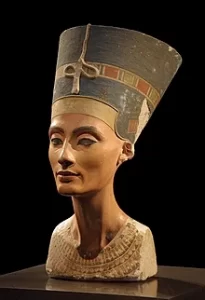
''Noble man/woman's daughter''?
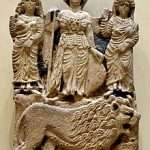 Side note: ''The suggestion that Nefertiti changed her role, and in so doing became invisible to us, deserves more consideration.....a theory proposed that Nefertiti transformed herself into a female king to rule alongside Akhenaten as a co-regent....Much of this evidence comes from the Tutankhamen tomb....a gilded statuette which depicts a king dressed in a kilt and white crown, standing on the back of a leopard...with ''prominent breasts and low hips''....some argue it is for a women, others for a young Tutankhamen.'' [Page 179 'Nefertiti's Face' / J. Tyldesley].
Side note: ''The suggestion that Nefertiti changed her role, and in so doing became invisible to us, deserves more consideration.....a theory proposed that Nefertiti transformed herself into a female king to rule alongside Akhenaten as a co-regent....Much of this evidence comes from the Tutankhamen tomb....a gilded statuette which depicts a king dressed in a kilt and white crown, standing on the back of a leopard...with ''prominent breasts and low hips''....some argue it is for a women, others for a young Tutankhamen.'' [Page 179 'Nefertiti's Face' / J. Tyldesley].
'Broad hipped'?
N.B. Amen {Amun} NOT Aten.
Side note: ''In the Acts of Philip - he displays 'healing powers' during a sea journey from Ethiopia to Palestine. On arrival in Palestine he immediately heals the eye complaint of a nobleman's daughter.'' [Page 150: 'Egypt's Anointing Mysteries' / A. Roberts].
Continued: Refresher: "...to turn the clock back 25,000 or 50,000 years in order to join the presumed moment when an anthropoid opened the path toward a Homo sapiens capable of coordinating his thoughts...As to the history of the origin and becoming of thinking man..." ['Sacred Science: The King of Pharaonic Theocracy' / R. A. Schwaller de Lubicz].
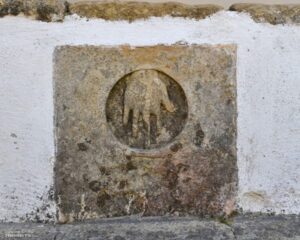
Tomar- Portugal. 'Washing room' of convent.
'
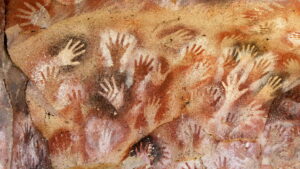
Found in Borneo. Oldest known to date. "Purple around 20,000 years old. The red ones 40,000 years." ['Expedition with Steve Backshall' / S1 EP6]. Mostly negative prints. Only a few {one?} positive.
Side note: What do 'hands' {of any description} represent - if only in the context of this subject material? Try "Chaco"
"A long standing puzzle in the Iliad has been why Homer sometimes refers to horses as being 'single hooved' or 'single footed'. An ingenious literary explanation has proposed that horses are 'single footed' in that they do not have cloven hoofs. A more likely explanation is to be found in the skies, with the ancient Greek observers comparing the movement of the stars across the heavens with horses galloping across the field of 'battle' - single hooved horses indicating single stars...Nor is the comparison of horses with stars confined to the Iliad: in parts of more northern Europe , stars were believed to be 'steeds' tethered to the pole star." ['Homer's Secret Iliad'].
''Single'' in relation to: "The light of the body is the eye: if therefore thine eye be 'single', thy whole body shall be filled with light", [Matthew 6:22].
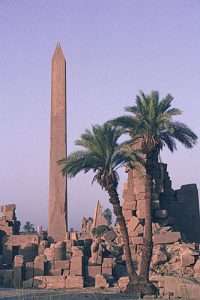
Largest one in Egypt. Hatshepsut's at Karnac. Covered in 'Gold'. The first 'king' to be called Pharaoh i.e., Great House.
 Side note: Something to ponder on: ''Today the local Arabs call the spot where the temple of Heliopolis stood as El Massalah, the Obelisk...{'Eye of the needle'?}. The few remaining artefacts are strewn outside a rickety wooden shed within a large open rectangular space known as Tel el Hisn - the Hill of the Horse..." [Chapter One, 'Imhotep the African' / R. Bauval].
Side note: Something to ponder on: ''Today the local Arabs call the spot where the temple of Heliopolis stood as El Massalah, the Obelisk...{'Eye of the needle'?}. The few remaining artefacts are strewn outside a rickety wooden shed within a large open rectangular space known as Tel el Hisn - the Hill of the Horse..." [Chapter One, 'Imhotep the African' / R. Bauval].
The 'Horseman's Word' ?
"The metal worker knows the mystery of 'fire' transmutation. The tinker and jobbing blacksmith knows the mystery of metal and has the horseman's word - the means of controlling animals, the lingua franca {i.e., a 'bridge' language} or shelta {i.e., 'cant' language} of all smiths. And as such people were under the patronage of the goddess Brigid, so the alchemist pays careful attention to the service of the Anima Mundi of Our Lady Earth. The alchemist was the midwife and priest of transmutation...." [Page 203 'The Western Way'. Vol 2].
Stallion or Mare?
Continued: ''Body'' in relation to: " In the old symbol of the chariot, the horses of the senses are to be held back [ nigrihita] by the reins of the mind, but it is not intended that they be unyoked from the chariot or that their movement should be stopped altogether..." Enlarged elsewhere.
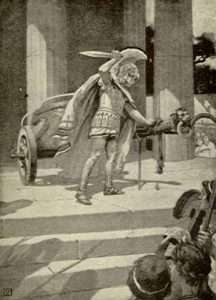
The cutting of the Gordian Knot is an Ancient Greek legend associated with Alexander the Great in Gordium in Phrygia, regarding a complex knot that tied an oxcart. And/or: 'Turn him to any cause of policy,
The Gordian Knot of it he will unloose,
Familiar as his garter.'
— Shakespeare, Henry V, Act 1 Scene 1. 45–47
''...tethered to the pole star'' = 'Straining {stretching?} at the reins'' to fulfill a purpose AND/OR 'pulling in the reins' when needed to fulfill it? Therefore ''single footed'' = 'Step by step' AND/OR 'Slow but steady' ? i.e.,the 'Royal Way'?
Top/down - bottom/up?
Try ''Hippo'' to see something in the Egyptian sense of the word on ALL pages.

Everything within 'stretched'? Spots or stripes?
"Neophyte grade {MThIHD} ; meaning 'converted'. The root of the word 'converted', other than its obvious usage in religious terminology, is 'to turn around'. It signifies a turning around of attention to that which is not apparent. It is when the person in Plato's cave first wonders about the shadows on the wall and turns around to see from where they are being cast. This begins a new phase in their life, hence 'Neophyte', one 'new' to that direction...The word MThChIL is also similar to MThIChH meaning 'stretched', 'extended'. The conversion or transformation that goes on at Neophyte is one where the person is stretched...Interesting by gematria, the word has the value of 488 , the same value as PhThCh, meaning 'gate, 'entrance' 'insight'. " [Extract from the book 'The Magister' ]. Try ''gate'' and/or ''door''.
Cage.
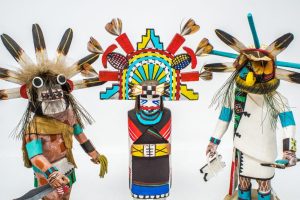
From a different perspective. Try Katsina
Something to ponder on: "Each 'region' has a gate, and each gate has three 'attendants', a watcher, a herald and a gatekeeper. As an aspiring soul approaches the gate, the watcher takes notice, the herald announces that persons 'name', and if that person knows the 'higher' mystical truth {by way of keys/correspondences etc} - the gatekeeper allows entry. This teaching degraded in later times to the point where people began to think that just by memorizing certain names they would be allowed access. Rather one must know the 'higher' truth which unites one with the dweller {of the threshold?} within the abode of the 'house'....{I.e., in the internal sense of the word}. Hence: "Each aspect should be seen NOT as independent personalities but as aspects of one, having the sense of sight, speech and organs of 'action' {i.e., 'hands' to open the 'gate'}…..The Watcher is that aspect which 'sees' and takes notice, the witness. The Herald is the aspect of acknowledging what has been seen. The Gatekeeper is the element which is 'seen' and which needs to be satisfied that the aspirant is worthy of 'gaining entry'...." [Pages 231/2 'Egyptian Book of the Dead' / M. Ashby. All emphasis, this readers].
'Mans Search for Meaning' / Viktor Frankl.
'Flight of foot' ? Try ''deer'' {hooves of?} - for that ''inner'' take of things - BEFORE deciding one way or the other. Janus link?
'In two minds'.
Side note: Stone carving found in Egypt {Amarna?} - depicting King Tut striking {''smiting''} a 'two-headed' figure. Back to back. ['King Tut unwrapped' / Disc. History Channel]. Coincidence or a meaningful one? Try ''Janus''.
Side step: "In Latin a pearl was 'unio' , because as Pliny writes, it is 'the unique gem', or because pearls are only found singly...Oysters open and shut like doors [folding doors in English were once called 'bivalves'], and the open shell of an oyster looks like the number 8." [Taken from the book 'The Book of Babel'. Mentioned elsewhere].


British Penannular brocch. Pre Roman. Came back into use after they left. 'Gap'?
And/or: {i.e.,something that can be worked out}: "The first key to the text {i.e.,Unas} is the significance of Ba-bi. As is so often the case with complex but vital symbols of Egypt, Ba-bi has both positive and negative aspects. He is called upon to protect Unas. Elsewhere he is both respected and feared as 'bull of the baboons' and 'chief of the apes'...In any case it is Ba-bi who possesses the power to open the doors, or shutters of heaven. If a literal translation upon an esoteric basis for the whole sequence existed, it might be possible to explain precisely what is meant. As it stands, an informed surmise is the best that is possible. Draw back the bolt; i.e.,the 'phallus' of Ba-bi is withdrawn, hence the power of generation is suspended, which in turn means the need for reincarnation is voided, opening the gates to heaven, the reunion with the source...Ba-bi is associated with the 'bolt' that serves as hypostasis, or essence of the 'phallus' of Ba-bi...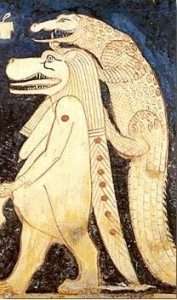 Called 'guardian of the banks of the lake of fire'; he feeds upon 'the overturned', the fallen, the enemies of Osiris. As guardian of the Lake of fire he may be found between Crocodilopolis and Heracleopolis, sight of the battles between Set and Osiris." [Pages 140-142 'Serpent in the Sky']. Recall the 'bolt' in the ''ascending passage''.
Called 'guardian of the banks of the lake of fire'; he feeds upon 'the overturned', the fallen, the enemies of Osiris. As guardian of the Lake of fire he may be found between Crocodilopolis and Heracleopolis, sight of the battles between Set and Osiris." [Pages 140-142 'Serpent in the Sky']. Recall the 'bolt' in the ''ascending passage''.
''....the need for reincarnation is voided'' = East or West as a means....?
And/or: ''If the image isn't vital and true the enquirer will be misled, whether in mysticism or philosophy. It is to avoid this that we describe principles and functions in words and images....The profane will be deceived; but the child of science, for whom this is meant, will look for the meaning, through reaction. If the Nut {Nuit} allegory speaks of giving the 'Sun' back to the world its because in spite of the seeming absurdity there is in fact a gestation. Try to find out what it is." [ Page 119 'Her-Bak: Egyptian Initiate' / Isha Schwaller de Lubicz].
Try Smith and Jones.
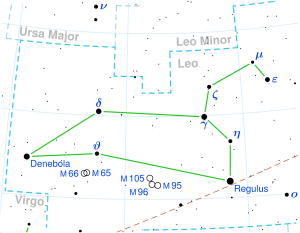
Question mark or sickle?
 Refresher: ''The image 'aker', two lions, or sometimes a double forepart of a lion, symbolizes two extreme times in the Dwat. One of the lions is ''yesterday'' and looks west, the other is ''tomorrow'' and looks east. Both turn their back on ''yesterday's'' sun, which is BELOW the horizon….They are the keepers who open and shut the gate into the shadow world. That is why we use the theme of the BOLT, the part that slides east and west in the fastening of a DOOR {'false one'?} …..Bulls have been used sometimes instead of lions. Their role of keeper is the same. It is their NATURE that differs." [Page 111 Same book].
Refresher: ''The image 'aker', two lions, or sometimes a double forepart of a lion, symbolizes two extreme times in the Dwat. One of the lions is ''yesterday'' and looks west, the other is ''tomorrow'' and looks east. Both turn their back on ''yesterday's'' sun, which is BELOW the horizon….They are the keepers who open and shut the gate into the shadow world. That is why we use the theme of the BOLT, the part that slides east and west in the fastening of a DOOR {'false one'?} …..Bulls have been used sometimes instead of lions. Their role of keeper is the same. It is their NATURE that differs." [Page 111 Same book].
The ancient Asad lion?
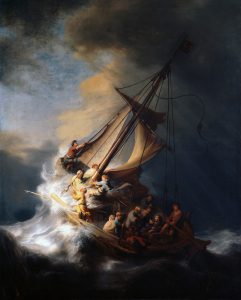
Seven/eight or nine 'lives'?
Something extra: ''In countries other than Egypt seven years is a well known 'span of life' granted to victims of the Old Religion. As Dr Margaret Murray points out, there is undoubtedly substance in the tale of Mycerinus, for she has just published a scene where another Old Kingdom Pharaoh, Neuserre, is supported by the goddess Wazet-Buto, while the death god, Anubis, represents him with 'seven' lives {ankhs}. As so often, here again Libya appears, for the Nile gods supporting the throne do not wear their usual boatman's girdle, but the penistasche, the standard dress of Libya all through the Pharaonic days.'' [Page 47 'The Sky Religion in Egypt' / G. Wainwright].
'Mercurius'.
Persephone and Hades? [Page 35 'The Western Way'. Vol 2].
Try 2:3 / 3:1 / 3:6 to begin with.
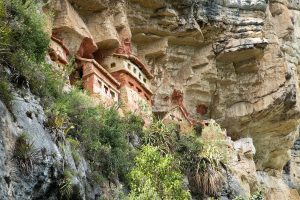
Mausoleos de Revash. Chachapoya.
REFRESHER: "The same myth also provides insight into the two paths or ways of 'salvation'. The Way of Osiris and the Way of Horus...

Precipice?
The former is the way of 'reincarnation', of progressive dissolutions linked only by the generative principle; the latter is the direct path {'cliff'?}; that of the warrior of the spirit, out to subdue the enemy within himself by his own efforts." [Page 129 'Serpent in the Sky'].
'A Different Christianity' / R. Amis.
The Chachapoyas, also called the "Warriors of the Clouds", were a culture of the Andes living in the cloud forests of the southern part of the Department of Amazonas of present-day Peru. The Inca Empire conquered their civilization shortly before the Spanish conquest in the 16th century. At the time of the arrival of the conquistadores, the Chachapoyas were one of the many nations ruled by the Incas, although their incorporation had been difficult due to their constant resistance to Inca troops.


Pantheon = 'Bulls eye'.
"The Ferryman is familiar to us now, as Saint George, as Edward, and all their predecessors. Even Baring-Gould was bold enough to identify him with Charon, the classical Ferryman of souls. The sixth sphere [This author identifies that to the Hebrew tree of Life, i.e.,the heart] - is linked with the sun or Principle of harmony and beauty. In Celtic tradition the sun was said to be the sum of the blazing souls of ancestors in paradise. This is the realm of the saviour ['six' was the crucifix] and of the Archangel Michael, whose place in myth has already been touched upon. The ancient sacrificial king operated spiritually from this sixth sphere as a 'mediator' of the power of the mother goddess. Christ, the 'son of' god, should be positively identified here, with all the other "sons of light" through the ages, and by analogy with the sun of our solar system around which the planets revolve.

'Gap'?
Nowadays this concept could also be applied to the structure of the atom, and still hold good. The Sepher Yetzirah gives 'six' as - 'He sealed the Abyss, he turned downward and sealed it with YVH'. This YVH is part of the holy name of god, reputed to have 'magical' powers, but actually a scientific codification of metaphysics. The Abyss is that great unknown gap between 'heaven' and earth, the 'river' which the dead have to cross, spanned by the razor-edged bridge of fairy lore [or the eye of the needle parlance. This readers input] - or crossed by the 'vessel' of the Ferryman." [Taken from 'Where is Saint George' by R. Stewart].
Razor-back ?
Six days of 'creation' and seventh day of rest.

''City of the Dazzling Aten."

'Stamp of the feminine'. Real or symbolic?
Refresher: "The first key to the text {i.e.,Unas} is the significance of Ba-bi. As is so often the case with complex but vital symbols of Egypt, Ba-bi has both positive and negative aspects. He is called upon to protect Unas. Elsewhere he is both respected and feared as 'bull of the baboons' and 'chief of the apes'...In any case it is Ba-bi who possesses the power to open the doors, or shutters of heaven. If a literal translation upon an esoteric basis for the whole sequence existed, it might be possible to explain precisely what is meant. As it stands, an informed surmise is the best that is possible. Draw back the bolt; i.e.,the 'phallus' of Ba-bi is withdrawn, hence the power of generation is suspended, which in turn means the need for reincarnation is voided, opening the gates to heaven, the reunion with the source...Ba-bi is associated with the 'bolt' that serves as hypostasis, or essence of the 'phallus' of Ba-bi...Called 'guardian of the banks of the lake of fire'; he feeds upon 'the overturned', the fallen, the enemies of Osiris. As guardian of the Lake of fire he may be found between Crocodilopolis and Heracleopolis, sight of the battles between Set and Osiris." [Pages 140-142 'Serpent in the Sky']. Recall the 'bolt' in the ''ascending passage''.
Smith and Jones.
Valley of the Monkeys?
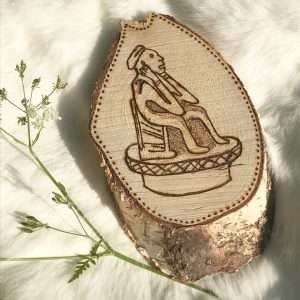
Spong Hill Man {inscribed on birch}. The 'top' for a cremation urn. Death - Rebirth? Triangular form? Deep in thought about the 'soul'? Sad or joyful?
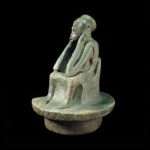 A working example: ''No gesture on this golden shrine is without meaning: Akhenaten himself had worn heavy seals on his UPPER arm, each one emblazoned with the Aten's royal names, stamping his solar rulership as the divinely appointed Son of Re. Indeed, it is the pharaoh's New Year anointing with the fiery nine oils that his name is said to be in the 'august house' of Heliopolis, thus authenticating his cosmic rulership. In short, it is by his anointing with these fragrant oils that his royal name is SEALED in the New Year ceremony.'' [Page 39 'Egypt's Anointing Mysteries' / A. Roberts].
A working example: ''No gesture on this golden shrine is without meaning: Akhenaten himself had worn heavy seals on his UPPER arm, each one emblazoned with the Aten's royal names, stamping his solar rulership as the divinely appointed Son of Re. Indeed, it is the pharaoh's New Year anointing with the fiery nine oils that his name is said to be in the 'august house' of Heliopolis, thus authenticating his cosmic rulership. In short, it is by his anointing with these fragrant oils that his royal name is SEALED in the New Year ceremony.'' [Page 39 'Egypt's Anointing Mysteries' / A. Roberts].
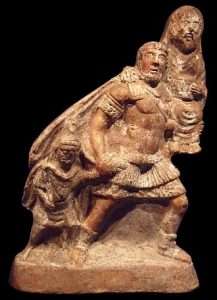
Aeneas escaping Troy. East or west?
Side note: "Anchises (/ænˈkaɪsiːz/;[1] Greek: Ἀγχίσης, translit. Ankhísēs) was a member of the royal family of Troy in Greek and Roman legend. He was said to have been the son of King Capys of Dardania and Themiste, daughter of Ilus, who was son of Tros. He is most famous as the father of Aeneas and for his treatment in Virgil's Aeneid.[2] Anchises' brother was Acoetes, father of the priest Laocoön.[3]
He was a mortal lover of the goddess Aphrodite (equivalent to the Roman goddess Venus). Zeus made her fall in love with Anchises while he was herding sheep at the foot of Mount Ida."
Shepherd/Shearer to enlarge.
Side step: " I make no secret whatsoever of the fact that my rather revolutionary model of the atom came to me in a dream.'' Niels Bohr.
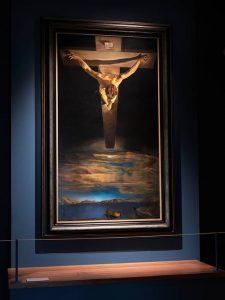
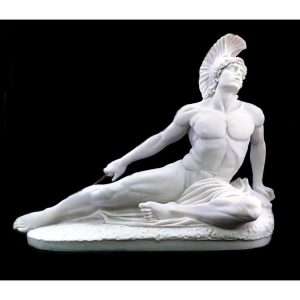
The death of Achilles. Triangular? Right angled one?
As seen from a different perspective: "The Music of the Spheres gives us an insight into the cosmic order which is far more than mere planetary correspondence. If we skilfully strike the seven stringed lyre of our being, we resonate with the Music of the Spheres so that microcosm and macrocosm sound in harmony: 'Were it not for the order of the music hidden we should be claimed by the 'void', writes Ronald Duncan. The seven strings of the lyre correspond indeed to the seven planets....A hypothetical 'eighth sphere' was envisaged to correspond to the octave whereby the scale of creation is closed." [Page 142 'The Western Way'. Vol 2].
'Seven/Eight' anointing OILS?
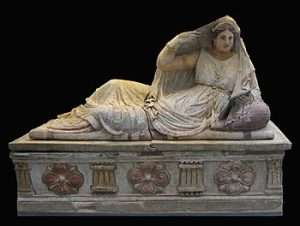
Etruscan 'noble' woman. UNveiled?
Heliopolis to enlarge.
Side note: ''Edward the second was a cool guy. Enjoyed hanging out with stonemasons and carpenters. Spent all the time he could on thatching roofs." George Martin. {Game of Thrones}.
'Bridging the Gap: How the Seven Bridge was Built'.
Needle? {Game of Thrones}.
'Needles of Ur'? [Page 268. Douglas Monroe. {+ for further reference 79/112} ].
''Eagles Claw''? Enlarged elsewhere.
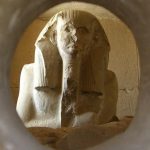
'crack' or just a hole?
REFRESHER: As seen from a different {perspective?}: "A single obsessional idea runs through all my work: the paradoxical nature of freedom...The trouble is the narrowness of consciousness. It is as if you tried to see a panoramic scene through cracks in a high fence, but were never allowed to look over the fence and see it as a whole." ['The Occult' and 'Beyond the Occult' by C. Wilson].
Razor back? and/or ''cleft''?
''Over the fence'' in relation to that framework ?
"But what is central about the story is not that it is factual but that it is true. In other words the story of Exodus is a story that embodies some of the deepest and profoundest truths of the human condition : What it is to be in the 'wilderness'. What it is to hope for the 'promised' land. What it is to escape 'slavery' - and to be both bewildered and exhilarated by the prospect of freedom. This is a story that's a 'sacred' story i.e.,inspired by 'god'. So the story of Exodus can be a story by which we read our lives even if there were not 600,000 that left Egypt - or even 5 - or even none." Rabbi David Wolpe. [Satellite TV. Emphasis, this readers].
Side note. ''Inspired'' in relation to Part 1. And/or what ''six'' represents.

Coincidence? What 'volume' was found within it. What was found within THAT?
"Six, the number of the material world and therefore of time and space, is the number chosen by the Egyptians to symbolize temporal and spacial phenomena...Volume requires six directions of extension to define it: up and down, backwards and forwards, left and right. So in Egypt, the cube, the perfect six sided figure, was used as the symbol for actualization in space; the cube is the symbol for volume. Pharaoh sits squarely upon his throne, which is a cube...Six is also symbolized by the Hexagon...In Egypt, Schwaller de Lubicz found that the dimensions of certain specific halls of the Temple of Luxor were determined by the geometric gereration of the Hexagon FROM the pentagon. This is a symbolic expression of the materialisation of matter from the spiritual creative act..." ['Serpent in the Sky: The High Wisdom of Ancient Egypt' / J. West]. Think about it relative to that universal ''bit''.
 Refresher: The 56 Aubrey holes together with..."Eleven is the number of 'Magic' and the great work. It is the conjunction and equilibrium of the Pentagram {5} and Hexagram {6}. The name Hoor-Pa-Kraat has eleven letters {Greek = Harpocrates}. Eleven is also the number of letters in ABRAHADABRA, the Great Word of Magick, which represents the formula and accomplishment of the Great work...For it is the true law which unites the Micro with the Macro; the Pentagram and the Hexagram, or the Rose and Cross of Light and Life." [Extract from the book 'The Cosmic Trigger'].
Refresher: The 56 Aubrey holes together with..."Eleven is the number of 'Magic' and the great work. It is the conjunction and equilibrium of the Pentagram {5} and Hexagram {6}. The name Hoor-Pa-Kraat has eleven letters {Greek = Harpocrates}. Eleven is also the number of letters in ABRAHADABRA, the Great Word of Magick, which represents the formula and accomplishment of the Great work...For it is the true law which unites the Micro with the Macro; the Pentagram and the Hexagram, or the Rose and Cross of Light and Life." [Extract from the book 'The Cosmic Trigger'].
Enchantment?
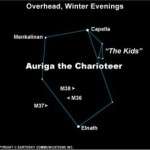 And/or: "The second theme concerns Auriga as Nestor's regiment, with his 'five' captains designated as the constellation's five brighter stars, his cowardly troops in the center and brave foot soldiers in the rear, all of whom are led across the sky by two 'chariots' at the front..." ['Homer's Secret Iliad'].
And/or: "The second theme concerns Auriga as Nestor's regiment, with his 'five' captains designated as the constellation's five brighter stars, his cowardly troops in the center and brave foot soldiers in the rear, all of whom are led across the sky by two 'chariots' at the front..." ['Homer's Secret Iliad'].
A side STEP: 'Mindfulness' by Mark Williams. ''Old wisdom for modern times.'' Quote on the same [BBC World Service. March 2015]. Today's new 'fad' on those ancient principles of Buddhism. Or more importantly what this subject has always referred to as 'meditation.' Its true intent. Both 'inner' and 'outer' Benefit of. The result of both however becomes the same - an understanding of the 'self'. The Micro within the Macro.
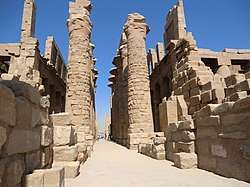
Karnak. ''Mountain low, Valley high.''
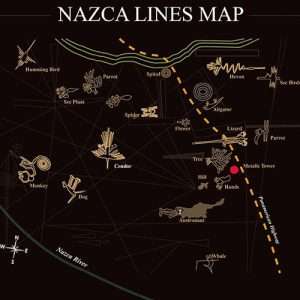 "You can't stop the triggering of unhappy memories, negative self talk and judgmental ways of thinking - but what you can stop is what happens next. You can stop the vicious cycle from feeding off itself and triggering the next spiral of negative thoughts. And you can do this by harnessing an alternative way of relating to yourself and the world. The mind can do so much more than simply analyse problems with its Doing mode, [the author defines that 'mode' with automatic / habitual thinking,i.e.,without taking 'time out' to reassess in the present moment]. The problem is that we use the Doing mode so much, we can't see that there is an alternative. Yet there is another way. If you stop and reflect for a moment, [i.e.,the ''present'' one. This readers input] - the mind just doesn't think. It can also be aware that it is thinking. This form of pure awareness allows you to experience the world directly. It's bigger than thinking. Its unclouded by your thoughts, feelings and emotions. It's like a high mountain - a vantage point - from which you can see everything from many miles around, [the author defines that state of thinking as ''Being'' mode. This subject defines it as ''Guardian of the Gate''].
"You can't stop the triggering of unhappy memories, negative self talk and judgmental ways of thinking - but what you can stop is what happens next. You can stop the vicious cycle from feeding off itself and triggering the next spiral of negative thoughts. And you can do this by harnessing an alternative way of relating to yourself and the world. The mind can do so much more than simply analyse problems with its Doing mode, [the author defines that 'mode' with automatic / habitual thinking,i.e.,without taking 'time out' to reassess in the present moment]. The problem is that we use the Doing mode so much, we can't see that there is an alternative. Yet there is another way. If you stop and reflect for a moment, [i.e.,the ''present'' one. This readers input] - the mind just doesn't think. It can also be aware that it is thinking. This form of pure awareness allows you to experience the world directly. It's bigger than thinking. Its unclouded by your thoughts, feelings and emotions. It's like a high mountain - a vantage point - from which you can see everything from many miles around, [the author defines that state of thinking as ''Being'' mode. This subject defines it as ''Guardian of the Gate''].
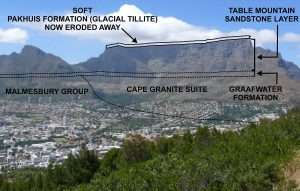
Table Mountain. Micro and Macro. Which and why?
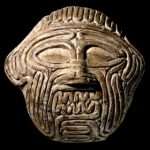
Labyrinth?
Pure awareness transcends thinking. It allows you to step outside the chattering negative self-talk and your reactive impulses and emotions. It allows you to look at the world once again with open eyes. And when you do so, a sense of wonder and quiet contentment begins to reappear in your life." [Chapter 2, 'Mindfulness' by M. Williams and D. Penman]. Think about it - mountain/valley - higher/lower - subjective / objective - with an understanding in mind - both inner and outer - micro and macro - in relation to the full / whole 'journey'. For a further head scratch compare {i.e.,alternative 'viewpoint'} to the ''Arthur'' information in Part 1. Then try ''notch'' and ''angle'' - all pages.
'Still waters run deep,' i.e., and /or ''...quiet contentment'' ?
Silence is golden.
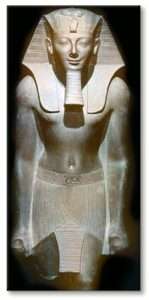
Happy or sad?
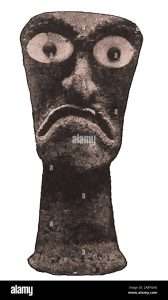
Whats the remedy?
A working example: "My whole life has changed since i started to meditate. The journey in meditation is to find that state of equipoise - which means no matter what hits you, no matter what comes at you, no matter what throws you over either in joy or misery - you stay centered/rooted." ['Lulu' / BBC4].
From a different perspective: ''When you go into icy water, everything stops. The chatterbox stops...At that MOMENT you are no longer in your mortgages or other petty thoughts. Why? Because the blood flow needs to go into the deeper realms of the brain. There is serenity, deep peace and power....What ever the problems are physically or mentally - i found the keys to unlock it.'' [Wim Hof: 'Freeze the Fear' / BBC1].
A study program does the same?
'Sparrow' to enlarge.

Centered?

Alex Aronson considered Puck a representation of the unconscious mind and a contrast to Theseus as a representation of the conscious mind.
A working example: '' I think what Shakespeare manged to do is that he managed to capture the human experience, and it feels weirdly modern. He writes about the moment he was in - which seems, by dent of his genius - to be the moment we're in.'' [David Tennant / N/W Tonight / November 2023].
"Being. Being is. Being is in-itself. Being is what it is. Being includes both Being in-itself and Being-for-itself, but the later is the annihilation of the former. As contrasted with existence, Being is all-embracing and objective, rather than individual and subjective." [Taken from the chapter 'Relation and Reciprocity' from the book 'The Fine Structure Constant: Philosophical Explorations via A Poetics of Consciousness' by Keith Whittingslow].
'Being' in relation to an understanding - within the whole. As ''A Means'' to perceive something. Representation of. This readers input.
Question. Coincidence or a meaning full one?
Side note: Understand the above to get a better idea on Wagner's ''annihilation'' quote - by way of Parsifal?
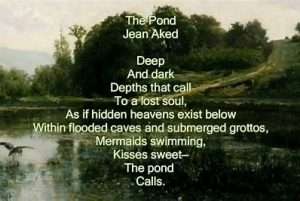
'Triangles' interlocking?
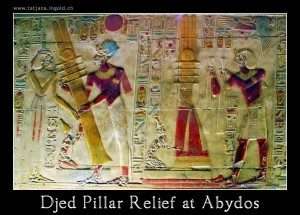
''Raising''?
"......obedience to the voice of the Great Teacher in his heart. That soundless voice, speaking within his heart, drowns for him all the clamourous judgements of the world. Listening ever to the Voice of that inner Lord, he pursues his way, unperturbed as the earth is unperturbed, firm as a pillar, clear as a waveless lake." [ Chapter 12, 'The Yoga of the Bhagavat Gita']. That link to the ''teacher'' of the Dead Sea Scrolls. Explained within.
'Still waters run deep,' i.e., and /or ''...quiet contentment''?

Mother or wife?
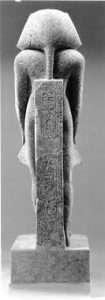
"Behind Will, stands desire."
"Patience is a garment which has never worn out." {Akhlaq-i-Mohsini}. [Taken from the book 'The Dermis Probe' by I. Shah].
''Patience is the mother of will. If you have no mother, how can you be born?" Gurdjieff.
"The aim of spiritual 'exercises' [and/or study. This readers input] is depth. It is necessary to become 'deep', to be able to attain experience and knowledge of profound things... [as it is in any subject material]. And it is symbolism which is the language of depth - thus arcana, expressed by symbols, are both the means and the aim..."[Taken from the book by Tomberg].
"The word 'spiritual' should be associated with the word 'eyes'. This is a reference to the eyes of the mind or heart. To see is to understand." [From the book by T. Nottingham].
The eye of Horus.
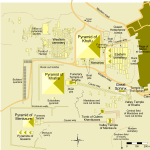
 The phrase “from pillar to post” means from one place to another, haphazardly and to little purpose. It describes a situation where someone is moved repeatedly from one place or position to another, usually in a hurried or disorganized way, resulting in unnecessary suffering123. The origin of this expression is somewhat mysterious, but it dates back at least to the 16th century. Interestingly, an earlier form of the phrase was “from post to pillar,” which conveys the same meaning. This variant appeared in the 15th-century dream poem “The Assembly of Gods,” attributed to John Lydgate. In that work, the line reads: “Whyche doon he hym sent to Contrycion, And fro thensforth to Satysfaccion; Thus fro poost to pylour he was made to daunce” 4. While some etymologists have speculated that the posts and pillars referred to those in a Real Tennis court, there’s no concrete evidence to support this theory. It’s more likely that the expression is simply a colorful variant of “from here to there” with no specific story attached to it. So, next time you hear someone say they’ve been “from pillar to post,” you’ll know exactly what they mean!
The phrase “from pillar to post” means from one place to another, haphazardly and to little purpose. It describes a situation where someone is moved repeatedly from one place or position to another, usually in a hurried or disorganized way, resulting in unnecessary suffering123. The origin of this expression is somewhat mysterious, but it dates back at least to the 16th century. Interestingly, an earlier form of the phrase was “from post to pillar,” which conveys the same meaning. This variant appeared in the 15th-century dream poem “The Assembly of Gods,” attributed to John Lydgate. In that work, the line reads: “Whyche doon he hym sent to Contrycion, And fro thensforth to Satysfaccion; Thus fro poost to pylour he was made to daunce” 4. While some etymologists have speculated that the posts and pillars referred to those in a Real Tennis court, there’s no concrete evidence to support this theory. It’s more likely that the expression is simply a colorful variant of “from here to there” with no specific story attached to it. So, next time you hear someone say they’ve been “from pillar to post,” you’ll know exactly what they mean!
![images[3]](https://esotericbasics.co.uk/wp-content/uploads/images3.png) Further information...'The Hiram Key'/Knight and Lomas. Chapter seven. Sometimes represented as an obelisk; as with the ancient Egyptians. Or as with the Hebrew equivalent...A Pillar. As in the two pillars. Left and Right, outside ’Solomons temple’, [explained elsewhere, i.e.,to ''establish'' something as a focal point for an understanding -'depth'- to take place. Representation of]. Book of same. ’The Obelisks of Egypt’. By L. Habachi. Hindu equivalent = Pravritti / Nivritti...in that ‘inner’ sence, [ Bede Griffiths book. Mentioned elsewhere ]. That same 'development' that is represented; in the main; with a ‘serpent’, [explained elsewhere].
Further information...'The Hiram Key'/Knight and Lomas. Chapter seven. Sometimes represented as an obelisk; as with the ancient Egyptians. Or as with the Hebrew equivalent...A Pillar. As in the two pillars. Left and Right, outside ’Solomons temple’, [explained elsewhere, i.e.,to ''establish'' something as a focal point for an understanding -'depth'- to take place. Representation of]. Book of same. ’The Obelisks of Egypt’. By L. Habachi. Hindu equivalent = Pravritti / Nivritti...in that ‘inner’ sence, [ Bede Griffiths book. Mentioned elsewhere ]. That same 'development' that is represented; in the main; with a ‘serpent’, [explained elsewhere].
The 'unfinished' Obelisk found in the granite quarries in Aswan. A 'crack' along its length. If and when erected it would have been the 'tallest' ever. Crack in relation to ''fall.'' Tallest in relation to ''highest.'' North in relation to South. That which was ''lost'' has the possibility to be found. Put ''unfinished'' in the usual box.
'The Unfinished Universe' by L. B. Young.
'Eye of the Needle' ?
Cleopatra's needle?
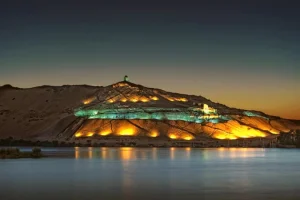
The tomb of Hirjuf is located at Qubbet el-Hawa, also known as the Valley of the Princes, a rocky location across Aswan. There are tombs from the Middle and New Empires as well as the Old Empire, which offer valuable insights into the lives of prominent officials.
The Dome of the Wind is a rocky mountain with a height of about 130 m. It is located on the west bank of the Nile near Aswan. The reason for the popularity of this mountain is that it contains tombs of priests, nobles, and governors of Aswan throughout the different ages, such as: The era of the Old Kingdom (Sixth Dynasty).
The Middle Kingdom (for the Twelfth Dynasty).
They also recently discovered tombs belonging to the modern state and the late era. The reason for naming the air dome by this name There is a tomb on the southern summit of the mountain belonging to one of the righteous saints and he is called “Sidi Ali Abu Al-Hawa”. It is a different and distinctive tomb, as its dome is painted white, and it is prominent so that you can see it from afar. The tomb is also distinguished by the fact that it was built on the ruins of a Coptic monastery (St. George). Tomb of Sidi Ali Abu Al-Hawa.

"Serpent hands".
A serpent by the way...that has no relevance or connection to Mr Ickes ‘Reptilian hypothesis’. Mr Icke is aware of this subject as proven by his internet site. Especially in relation to his ‘attempt’ of understanding the subject of Freemasonry. As does one of his recommended colleagues... P. Sabak. 'The Murder of Reality’. Full of esoteric symbolism but with no conclusions. Those same symbols/keys only 'suggested' in their most obvious sense...or more importantly in Mr Sabaks case ...in their most negative 'light'. The negative aspect is 'displayed' more so than the positive. Its then left ‘openended’. Its left to the imagination of the reader to decide for themselves. Of which those 'first impressions' become paramount.
Side note: ''in their most negative light''. Analogy of same principle = 'Lucifer', i.e.,bringing light. And/or 'shadow' that has {within it?} the element {principle?} of 'light'?
This subject however.. ‘closes’ that openendedness. By way of assessing all the available information. All that ‘circumstantial evidence’, throughout multiple generations, over thousands of years. By way of objectivity. Both prefer to see / understand only what allows both to continue with their own ‘conspiracy theories’. [i.e.,subjective] Example of what happens if one continues along a blinkered / narrow path, [key]...subconsciously or otherwise. Link to " eye of the needle" parlence. As well as its obvious symbolic intention. Proof...If it is a conspiracy. Why allow anyone to understand anything. Why ‘advertise’ the fact in written or ‘club’ form. Why not keep it all to themselves? Loneliness?
"The best secret about the Masons; is that it was no secret at all". Abraham Lincoln.
''If you don't understand something - how can you judge it?'' ['Inside Freemason's : Sky Doc. 8/5/17].
'She Who Loves Silence'.
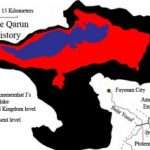
''Lure of Becoming''?
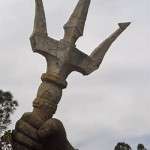 REFRESHER: "And what of the philosophers secret 'fire'? The aim of a secret is to evoke a sense of mystery, to mobilize all our faculties and to put us on our mettle {'metal of the mind'?}. It lures us on, even deceives us into embarking on a prospective quest whose ordeals would otherwise deter us. We set out in search of the hidden knowledge and power we believe the secret will confer - only to find on the way that these things are images of a wisdom and glory we did not dream of in the beginning. The secret i have tried to reveal on every other page of this book is in a sense no secret - it is an open secret passed along a Golden Chain of initiates, like the secrets of the Greek Mysteries. And as to 'its' philosophy, by whose assistance these mysteries are developed - it will make its appearance at different periods of time, as long as the sun himself shall continue to illuminate the world..." [Epilogue to the book: 'The Philosophers Secret Fire: A History of the Imagination' / P. Harpur].
REFRESHER: "And what of the philosophers secret 'fire'? The aim of a secret is to evoke a sense of mystery, to mobilize all our faculties and to put us on our mettle {'metal of the mind'?}. It lures us on, even deceives us into embarking on a prospective quest whose ordeals would otherwise deter us. We set out in search of the hidden knowledge and power we believe the secret will confer - only to find on the way that these things are images of a wisdom and glory we did not dream of in the beginning. The secret i have tried to reveal on every other page of this book is in a sense no secret - it is an open secret passed along a Golden Chain of initiates, like the secrets of the Greek Mysteries. And as to 'its' philosophy, by whose assistance these mysteries are developed - it will make its appearance at different periods of time, as long as the sun himself shall continue to illuminate the world..." [Epilogue to the book: 'The Philosophers Secret Fire: A History of the Imagination' / P. Harpur].
Side note: Three golden links found in the shaft on Oak Island. Coincidence only?
Recall another example in the ''Help'' section.

'Birth' of something?
A working example: "When a group is being organized its members have certain conditions put before them; in the first place, conditions general for all members, and secondly, individual conditions for individual members. General conditions at the beginning of the work are usually of the following kind. First of all it is explained to all of the members of a group, that they must keep secret everything that they hear or learn...This is an indispensable condition whose idea should be clear to them from the very beginning. In other words, it should be clear to them that in this there is no attempt whatever to make a secret of what is not essentially a secret, neither is there any deliberate intention to derive them of the right to exchange views with those near to them or with their friends. The idea of this restriction consists in the fact that they are unable to transmit correctly what is said in the groups. They very soon begin to learn from their own personal experience how much effort, how much time, and how much explaining is necessary in order to grasp what is said in groups. It becomes clear to them that they are unable to give their friends a right idea of what they have learned themselves. At the same time they also begin to understand that by giving their friends wrong ideas they shut them off from any possibility of approaching the work at any time or of understanding anything in connection with the work...If a man in spite of this tries to transmit what he hears in groups to his friends he will very quickly be convinced that attempts in this direction give entirely unexpected and undesirable results. Either people begin to argue with him and without wanting to listen to him expect him to listen to their theories , or they misinterpret everything he tells them, attach an entirely different meaning to everything they hear from him." ['In Search of the Miraculous'].
 Analogy of same - "...the 'magic' of the constant work of service done in silence - this it is a matter of. A secret then? Not at all, for a private thing is not a secret thing. The private life is not a secret life. Silence as the essential condition for intimate work [or study. This readers input], is in no way equivalent to a jealously guarded secret. Just as Trappist monks maintain silence without anyone suspecting them of wanting to keep secrets, so is the community composed of Hermeticists [or any 'subject' that relates to the 'whole'. This readers input] - scattered in the world has the right to be silent, in order to maintain the atmosphere of privacy essential for its work, without it being suspected of dark secrets. Authentic spiritual life requires the inviolable sanctuary of privacy - which has nothing in common with ''initiation secrets" or those of ''secret societies", whose secrets, furthermore, inevitably become ''open secrets''. [Extract from the book by Tomberg].
Analogy of same - "...the 'magic' of the constant work of service done in silence - this it is a matter of. A secret then? Not at all, for a private thing is not a secret thing. The private life is not a secret life. Silence as the essential condition for intimate work [or study. This readers input], is in no way equivalent to a jealously guarded secret. Just as Trappist monks maintain silence without anyone suspecting them of wanting to keep secrets, so is the community composed of Hermeticists [or any 'subject' that relates to the 'whole'. This readers input] - scattered in the world has the right to be silent, in order to maintain the atmosphere of privacy essential for its work, without it being suspected of dark secrets. Authentic spiritual life requires the inviolable sanctuary of privacy - which has nothing in common with ''initiation secrets" or those of ''secret societies", whose secrets, furthermore, inevitably become ''open secrets''. [Extract from the book by Tomberg].
 A {working?} example: "Are there any conditions for joining your group?'' I asked. ''And is a man who joins it tied to it and to you? In other words i want to know if he is free to go and leave your work, or does he take definite obligations upon himself? And how do you act towards him if he does not carry out his obligations.''......''There are no conditions of any kind,'' said G., ''and there cannot be any. Our starting point is that man does not know himself, that he is not what he can and what he should be. For this reason he cannot make any agreements or assume any obligations...
A {working?} example: "Are there any conditions for joining your group?'' I asked. ''And is a man who joins it tied to it and to you? In other words i want to know if he is free to go and leave your work, or does he take definite obligations upon himself? And how do you act towards him if he does not carry out his obligations.''......''There are no conditions of any kind,'' said G., ''and there cannot be any. Our starting point is that man does not know himself, that he is not what he can and what he should be. For this reason he cannot make any agreements or assume any obligations...
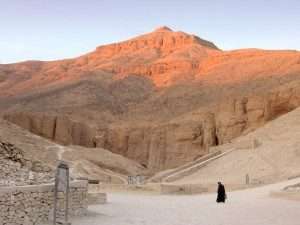
'She who loves silence'.
Today he is one person and tomorrow another...He is in no way bound to us and if he likes he can at any time leave the work and go...If he likes he can study. He will have to study for a long time, and work a great deal on himself. When he has learned enough, then it is a different matter. He will see for himself whether he likes our work or not. If he wishes he can work with us; if not he may go away. Up to that moment he is free...For instance take one point. A situation may arise, not, of course, in the beginning, but later on, when a man has to preserve secrecy, even if only for a time, about something he has learned. But can a man who does not know himself promise to keep a secret? Of course he can promise to do so, but can he keep his promise? For he is not one, there are many different people in him. One in him promises, and believes that he wants to keep the secret. But tomorrow another in him will tell it to his wife, or to a friend over a bottle of wine, or a clever man may question him in such a way that he himself will not notice that he is letting out everything. No with such a man we will not take seriously. To be able to keep a secret a man must know himself and he must 'be'. Such men are a very far from this. Sometimes we make temporary conditions with people as a test. Usually they are broken very soon but we never give any serious secret to a man we don't trust, so it does not matter much..." ['In Search of the Miraculous'].
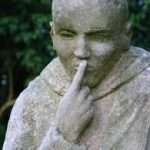 Analogy; with same principle in mind..."The secrecy of which we speak is that of Hermeticism; a true seal on the vessel in which calcination - the slow fire - is taking place. Like a pressure cooker, our work must be regulated and not opened to the outer lest the pressure be entirely lost to the environment. In maintaining a secret, we easily and efficiently provide ourselves such pressure - an inner dynamic that maintains the work in which we are engaged. It leads to results, whereas openly speaking to all and sundry about our views, practices and values does not lead to anything useful at all. The ancient Egyptian god-form given for Neophyte in the Golden Dawn is that of Harpocrates, the child god of innocence, with his fingers to his lips - the universal sign of silence."
Analogy; with same principle in mind..."The secrecy of which we speak is that of Hermeticism; a true seal on the vessel in which calcination - the slow fire - is taking place. Like a pressure cooker, our work must be regulated and not opened to the outer lest the pressure be entirely lost to the environment. In maintaining a secret, we easily and efficiently provide ourselves such pressure - an inner dynamic that maintains the work in which we are engaged. It leads to results, whereas openly speaking to all and sundry about our views, practices and values does not lead to anything useful at all. The ancient Egyptian god-form given for Neophyte in the Golden Dawn is that of Harpocrates, the child god of innocence, with his fingers to his lips - the universal sign of silence."

Stillness?

Chisel?
''External silence is sought in order to attain inner stillness of mind more easily." ['Wisdom of the 4th Way'].
Side note: "Kircher and others believed the Gemini Twins intimately associated with Horus the Elder and Horus the Younger and Harpocrates of Greece. The twins were placed in the sky by Jove, in reward for their brotherly love, so strongly manifested while on earth."
And/or Harpocrate in relation to: "Everyone has an internal thought process: that silent other self who speaks to you; the one you debate with." [First sentence; first paragraph; first page of the book by Q. S. Lam].
Higher {Elder?}. Lower {younger?}. All as a means...?
''A planet designated as Jovian is hence a gas giant, composed primarily of hydrogen and helium gas with varying degrees of heavier elements. In addition to having large systems of moons, these planets each have their own ring systems as well....These are terms students may encounter while doing further research on the planets in the solar system: Jovian planets: The outer planets of our solar system: Jupiter, Saturn, Uranus, and Neptune.''
Continued: In Egyptian mythology, Meretseger (also spelt Mertseger), meaning "she who loves silence" exerted great authority during the New Kingdom era over the Theban Necropolis and was considered to be both a dangerous and merciful goddess.[1] She was closely connected with al-Qurn, the pyramid-shaped peak in the Valley of the Kings.[2] As a cobra-goddess she is sometimes associated with Hathor.[3]
'Lady of the Lake'?
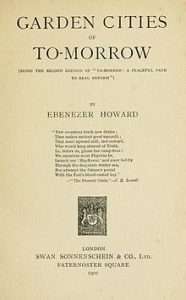
Huntingdon to enlarge.
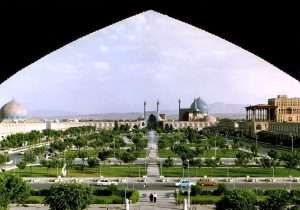
Charbagh gardens.
A working example: "I am a polytheist nun based in Penwortham, Lancashire, north-west England. As a Brythonic polytheist I venerate the Gods and Goddesses of ancient Britain and the spirits of my local landscape. I am devoted to Gwyn ap Nudd – a ruler of Annwn. I serve Him and other Deities by bringing Their stories and veneration back to the world.
In 2022 I founded the Monastery of Annwn and took vows as a nun with the name Sister Patience. My vocation centres on maintaining a devotional relationship with Gwyn and His kin, keeping Their rites, exploring Their mysteries and journeying to Annwn to bring back inspiration and healing to reweave the ways between the worlds.
I am currently exploring a monastic life balancing deep work in Annwn with being embodied and present in the world. My practices include prayer, meditation, journeywork, devotional creativity and yoga and I enjoy running and strength training. I tend a garden where I grow small green things and volunteer in Greencroft Valley."
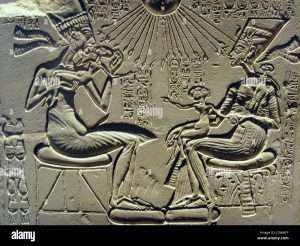
What are EACH sat on?
Continued..."As with all such information, only experience can enliven you and teach you in this work. We are each our own crucible and alchemical vessel, and our work must be hermetically sealed {with secrecy and silence} in order to accomplish any substantial progress. Our souls must have no leak at the seam." [Extracts from the book 'The Magister' : including parenthesis]. As improbable as it may seem {first impressions?} try ''leak''. Its representation.
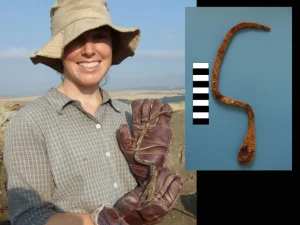
Laconian key to enlarge.
Proving the viability of study - in ''whole'' that is - not just 'its' parts. It being at least on par [if only to this reader] with the ritual stuff. The word ''experience'' being used to identify same, i.e.,knowledge acquired within those ''mystery schools''. Being taught how to access those ''altered states'' [within] to define something {archetypes?}. Shamanism: the same. That something [i.e.,results of] that has been written about for countless generations. That has always been represented in one form or another with ''keys'' and ''signs''.
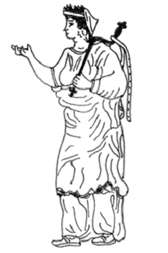
left shoulder?
That same word [''experience''] could also be used to define [by study] the word ''synchronicity'' - its meaning and purpose to the subject as a WHOLE, i.e.,to each individual - regardless of ones chosen ''path''. Regardless of how it may ''cross ones path''. The how and the why - Past present and future.
'The Rupture of Time : Synchronicity and Jung's Critique of Modern Western Culture' by Roderick Main.
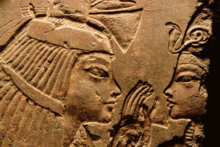
Tut's nurse.
"A more {practical?} analogy..."From Hermopolis, city of Hermes {Thoth}, master of Writing, Numbers, Measurement and Time, comes the description of the Nun, the primordial environment, picturing 'its' qualities and characteristics: 'He {the Demiurge} created the 'eight'. He formed its body as that of a sacred child who issues forth from a lotus in the middle of the Nun.' [Enlarged elsewhere].
Recall, who shared those ''boundaries'' of Hermopolis {i.e.,15th Nome}. Put those parts {keys} together to define the whole. Including the word ''demiurge''. All as a representation of something. That ''something'' that educates those first impressions.
Refresher: "The water which appeared with creation, carrying the dark hillock Tum {Atum}, becomes the object of the Hermopolitan teaching. The sacred name of Hermopolis, fifteenth nome of Upper Egypt, was Khemenu, the city of the Eight, meaning eight Primordials; its civil name was Un, meaning ''existence''. ['Sacred Science'].
''Existence'' in relation to something more substantial {by way of say a eureka moment} = 'mound'? AS A REPRESENTATION OF SOMETHING.
Philosophers stone.
Help section to enlarge.
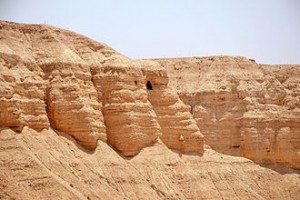
The 'caves' at Qumran where a ''teacher'' left those universal constants - in one particular form. {Archetypes?}.

'light oxen': "I bring up an individual type as a point of departure to talk about. The one {'emotion'?} that is strongest will pull you first." [Page 4 'Stopping and Seeing' / Translated by T. Cleary].
"Our energy is limited and used up in many ways. We ''leak'' our energy through our functions: thoughts, feelings and sensations. This is all part of human nature, 'old Adam and Eve'. The 'sins of the soul' and the body can only be purified by the ''Lord'' sitting on his ''throne''. A Christian struggles to beat this 'legion' and to prepare the way for the 'spirit', the Lord. Gurdjieff expresses a similar struggle by saying that as we are, we have no real 'I', no Master, but a multitude of petty little I's. To be Master is the aim." ['Wisdom of the 4th Way']. Continued elsewhere.
Side note. ''I's'' in relation to 'aspects of'. Akhenaten link?
Practical example: {in relation to the question asked: 'What is being in the zone, is it done automatically?}: "Its like being in a bubble or zone - where you just get out there and all you are seeing is where to pot each ball - its like dot to dot - where you are not thinking about all the other outside stuff. If you can quiet those voices down then you are on the path to success." {Shaun Murphy: 'Crucible' / Sheffield}.
'Zero' hour? The void?
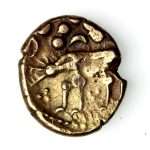
Teeth for a 'key'?

'She who loves silence'.
And/or: "The conscious mind is like a violent general of a strong fiefdom controlling things from a distance, until the sword is turned around {'sheath'?}. Now steadily keep to the chamber of the origin, turning the light around to look back, and this is like having an heroic leader on top with great ministers helping {'Ay'?}. Once the inner government is orderly, the strong and violent naturally become tame. The highest secret of alchemy are the water of vitality, the fire of spirit, and the earth of attention." [Page 14 'The Secret of the Golden Flower' / T. Cleary].
'Cattle'.
Horemheb / Karnak to enlarge.
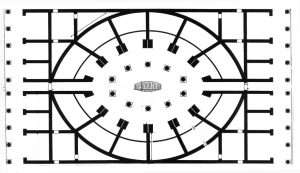
Among others - 'Bathing' to enlarge.
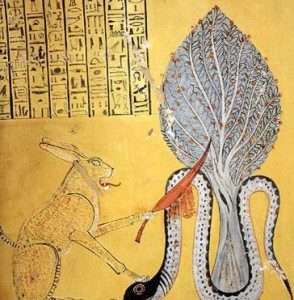
"The phrase "cut the head off the snake" is a metaphorical expression that means to eliminate the source of a problem or to remove a leader or key person in order to weaken or destroy an organization or group." Question. 'Collar' = Domesticated?
Working example: "Modern Chester was founded in around 74 AD as the Roman legionary fortress of Deva, later acquiring part of the name of the {'Twenty'} Legion to become Deva Victrix. It clearly had a large number of impressive Roman buildings, perhaps more impressive than most Roman cities in Britain. Deva was 20% bigger than the other legionary fortresses in Roman Britain (e.g. Eboracum, modern York), and contained the enigmatic Elliptical Building, so far unique in the Empire. The purpose of the Elliptical Building remains unknown, but it must have been an impressive structure in its day....

Chester also had the usual components of a legionary fortress, including a headquarters building (principia), smart houses for the commander (praetorium) and senior officers, amphitheatre, stone defensive walls and a main baths building (thermae), not to mention a large harbour and a bridge crossing the River Dee. How much of this was still standing in the seventh century, and can we tell if people were still using it for anything?"
The "Elliptical" buildings were located near the centre of the fortress and they had their own bath buildings and a range of store rooms around the outside. The presence of a second bath building is unusual because legionary fortresses generally had just one set of internal baths."
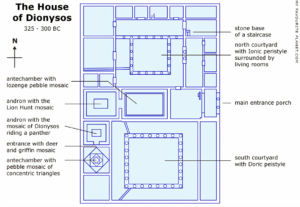

"Behind Will, stands desire."
REFRESHER: "By strengthening all the feelings that create energy and avoiding all those that lead to its exhaustion, the Essenes found that WILL is acquired.... Our energy is limited and used up in many ways. We ''leak'' our energy through our functions: thoughts, feelings and sensations. This is all part of human nature, 'old Adam and Eve'. The 'sins of the soul' and the body can only be purified by the ''Lord'' sitting on his ''throne''. A Christian struggles to beat this 'legion' and to prepare the way for the 'spirit', the Lord. Gurdjieff expresses a similar struggle by saying that as we are, we have no real 'I', no Master, but a multitude of petty little I's. To be Master is the aim." ['Wisdom of the 4th Way' / T. Nottingham].
Extra: "Lord on His Throne to me looks the same as having the Master in our house; he sees our faults, does not condemn, but forgives. Repentance {Greek word metanoia means turning one's direction} is an orthodox minute to minute activity {"dot to dot?"}, which is only possible when our Conscience is not "buried" {Gurdjieff}. We need to see our nothingness or as Gurdjieff puts it, "we cannot enter heaven with our "boots on" or "eating cakes". {same}.
.................................
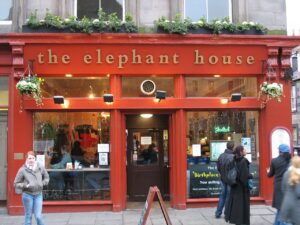
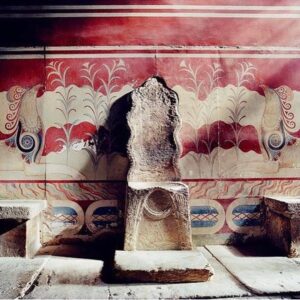
The Throne of Minos. 'Griffin' to enlarge.
Analogy: "The Struthion Pool, effectually translated from the Greek as 'Sparrow Pool'[1] (Aramaic: אשווח צפרא) is a large cuboid cistern beneath the Convent of the Sisters of Zion in the Old City of Jerusalem, built by Herod the Great in the first century BCE....Lying at the foot of the rock scarp that once bore the Antonia Fortress, the pool is located at the northwestern corner of Jerusalem's Temple Mount. Measuring 52 by 14 metres, the pool is oriented from northwest to southeast, with its depth increasing from 4.5 metres in the north to 6 metres in the south {i.e., 'UPHILL' from the south}. The pool's long eastern and western walls are not horizontal[dubious ] but also drop steadily to the south. Once open-aired, the pool was accessible along both long walls by a series of rock-cut steps covered by waterproof mortar composed of chalk and ashes."
"Sparrow" to enlarge.

"The Elliptical building goes right back....Could have been authorised by the Governor of Roman Britain and therefore the intended Seat of the governor of where he was going to live. With its very big fortress and supersize amphitheatre Chester may have been the Capital of Britain." ['Britain's Most Historic Towns: Roman Chester']. "Hippodrome".
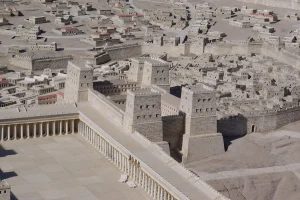
Castle or Rook? King or Queen side?
And/or: "Like Philo, Josephus testifies that the Roman governors stayed in Herod's palace while they were in Jerusalem, and carrying out their judgements on the pavement immediately outside it; Josephus indicates that Herod's palace is on the western hill, and it has recently (2001) been rediscovered under a corner of the Jaffa Gate citadel. Archaeologists now therefore conclude that in the first century, the Praetorium - the residence of the governor (Praetor) - was on the western hill, rather than the Antonia Fortress, on the diametrically opposite side of the city.
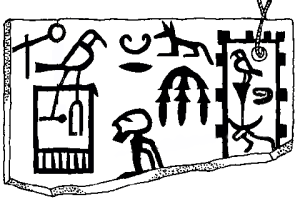
King Hor-Aha. 1st Dyn. 'Tower'? Goaty looking for his palace?
Although many modern reconstructions often depict the fortress as having a tower at each of four corners, the historian Josephus repeatedly refers to it as the tower Antonia, and stated that it had been built by John Hyrcanus for storing the vestments used in the Temple. Archaeologists are of the opinion that the fortress was only a single tower, located at the south-east corner of the site; for example, Pierre Benoit, former professor of New Testament studies at the École Biblique, having carried out extensive archaeological studies of the site, concurs and adds that there is absolutely no support for there having been four towers.....

A Salvation Army corps is a local church organization[1] and physical place of worship in The Salvation Army. Like the Christian term "church" a corps includes both the physical building and the body of members who attend at the building.[2] In keeping with Salvationist convention in using military terminology, corps are sometimes casually known as barracks. Traditionally many corps buildings are alternatively called temples or citadels,
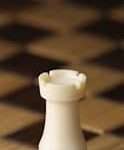 Josephus placed the Antonia at the Northwest corner of the colonnades surrounding the Temple. Modern depictions often show the Antonia as being located along the North side of the temple enclosure. However, Josephus' description of the siege of Jerusalem suggests that it was separated from the temple enclosure itself and probably connected by two colonnades with a narrow space between them. Josephus' measurements suggest about a 600 foot separation between the two complexes."
Josephus placed the Antonia at the Northwest corner of the colonnades surrounding the Temple. Modern depictions often show the Antonia as being located along the North side of the temple enclosure. However, Josephus' description of the siege of Jerusalem suggests that it was separated from the temple enclosure itself and probably connected by two colonnades with a narrow space between them. Josephus' measurements suggest about a 600 foot separation between the two complexes."
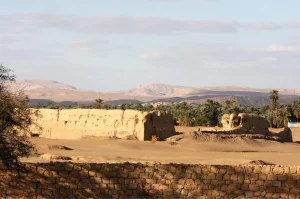
During the first excavation season at Hierakonpolis, Quibell investigated the massive mud-brick enclosure that, even though much reduced in stature from its original form, still dominates the site of Hierakonpolis. Known as the ‘Fort’, this enigmatic structure was constructed for Khasekhemwy during his reign and is the oldest free-standing monumental mud-brick building still preserved to near its original height in the world. The enclosure measures 67 by 57 metres, and its niched ‘palace-façade’ walls, which at their base measure 5 metres thick, still reach close to their original height of 10 metres in some places; when complete, they were coated with white plaster inside and out, and must have gleamed brightly under the fierce Egyptian sunlight. Despite its military appellation, the Fort served no military purpose, and its function remains something of a mystery.....perhaps more probably, the Fort may have been a ceremonial centre, where Khasekhemwy participated in various activities associated with his kingship, such as his heb-sed (jubilee) festival. {'Ancient Egypt' / Sep-October 2025}. White Chapel? 'Purity'?
Side note: "And a letter unto Asaph the keeper of the kings forest, that he may give me timber to make the beams for the gates of the palace {citadel} which appertained to the house {temple}, and for the wall of the city, and for the house i shall enter into." [Nehemiah 2:8].
"The palace actually was a fortress or tower and may have been Hananeel's mentioned in 3:1. It protected the temple and overlooked the N/W corner of its courts. Hyrcanus I built an acropolis here, and later Herod rebuilt it and named it Antonia. "The house that i enter" is the governors home." [same].
"Nehemiah {cupbearer to the king} means 'The Lord Comforts'....He became a legendary figure in later Jewish literature especially in the "twentieth year of Artaxerxes"}. Shushan the palace, or better 'Susa the citadel' was the winter resort of the Persian kings. In 478 BC., Esther became Xerxes Queen in this palace....Daniel was carried there in a vision."
'Twenty'.
"Asaph is the name of three men in the Old Testament12. One of them was a musician and singer who served as a court musician for King David and wrote many of the Psalms234. He is mentioned in 1 Chronicles 6:33–41, Psalms 73:1–19 and 84:1–12, and other passages34. Another Asaph was the keeper of the king's forests or royal park in the time of Nehemiah5. The third Asaph is not clearly identified."

Burkhan Khaldun.
Continued: "Once open-aired, the pool was later covered by two longitudinal barrel vaults that spring from the side walls and connect on a wall running along the center of the pool pierced by a series of arches. This division is the source of another name given to the Struthion, the Twin Pools. The two vaults were built to support a large flagstone pavement that covered the area above the pool. This pavement features shallow channels that carried runoff water into the pool as well as masonry manholes....

Open air 'Ramp' found near by for mummification purposes for underground burial complex. 'Bridge'? Question. Reason for the location at Saqqara?
Opinions differ as to the dating and origin of the pavement. Originally thought to be contemporary with the construction of the pool and thus to belong to the Antonia Fortress, re-examination of archaeological data by Father Pierre Benoit has prompted a revision of its dating. The vaults and pavement are rather thought to be contemporary with the nearby Ecce homo arch, originally a triumphal arch constructed by Emperor Hadrian, and thus assigned to the 2nd century CE. This reasoning seems to be supported by Josephus' account of the siege of the Antonia, although whether Josephus had meant a ramp had been built in, over or opposite the middle of the pool remains unclear."
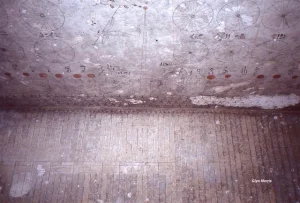
One has to 'kneel' to see the detail.
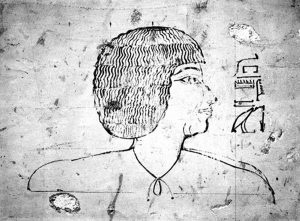
Steward of Amun.
Side note: TT71 is a T-shaped tomb cut directly into the living rock. There is a terrace and forecourt around forty meters across in front of the tomb and a ramp connects the two sides of the forecourt which makes it look a little like “Djeser djeseru” (the Mortuary Temple of Hatshepsut). Underneath this forecourt he constructed a single room tomb for his parents....He also had a tomb built under the courtyard of Hatshepsut’s Mortuary Temple (TT353) which was not completed, however, it is not confirmed that he was buried in this tomb either.... The unfinished tomb is entered via a steep descending stairway starting in a quarry.
In the lap of the gods?
Continued: "The Antonia Fortress (Aramaic: קצטרא דאנטוניה)[a] was a citadel built by Herod the Great and named for Herod's patron Mark Antony, as a fortress whose chief function was to protect the Second Temple. It was built in Jerusalem at the eastern end of the so-called Second Wall, at the north-western corner of the Temple Mount."


Sun / Moon / Cross / Cup symbolism . All represented in human form.
"The pool was apparently built by Herod the Great during his construction of the Antonia and the renovation of the Temple Mount in the late first century BCE. The only pool known to stand in close association with the site of the Antonia, there is little doubt that it was constructed no later than the fashioning of the rock scarp above it, as the orientation of the pool conditioned a slight directional change in the rock podium's northeastern corner. It is therefore identified with the Struthius or Struthion ('sparrow') pool mentioned by Josephus in his description of Titus' siege of the Antonia during the Great Revolt (70 CE): For there were now four great banks raised, one of which was at the tower Antonia; this was raised by the fifth legion, over against the middle of that pool which was called Struthius." [ Josephus, The Jewish War V. 46].
Side note: In the swamp on Oak Island is found a ramp {a foot below sea level} that connects the 'paved' area {N/E} with the stone {'cobbled'?} path {S/E corner}, i.e., above sea level. {'The Curse of Oak Island' / S10 EP19}.
Wet / Dry. From darkness into the light.
Right angles?

"When there is uninterrupted continuity in quiet, the spirit and feelings are joyful and happy, as if one were intoxicated or in a BATH. This is called positive harmony pervading the body, its golden efflorescence suddenly blooming {'orange'?}...The Dipper handle is the function of the rising and descending {of fire and water}." [Pages 45/6 ]. 'Handle' on the moment? 'She Who Loves Silence'?

Lady of the Lake?
And/or: "The secret within the secret cannot be dispensed with from start to finish. This is what is called cleaning the mind, washing the thoughts, which is "bathing." The learning of sages begins with knowledge when to stop and ends with stopping at ultimate good. It begins in the infinite and winds up in the infinite. In Buddhism, activating the mind without dwelling on anything is considered the essential message of the whole cannon. In Taoism, "effecting openness" is the whole work of completing essence and life. In sum, the three teachings are not beyond the one saying, which is a spiritual pill that gets one out of death and preserves life. What is the spiritual pill? It just means to be unminding in all situations. The greatest secret in Taoism is "bathing." Thus the whole practice described in this book does not go beyond the words "emptiness of mind." It is enough to understand this. This single statement can save decades of seeking." [Page 46 'The Secret of the Golden Flower'].
'Void'.
'Stopping and Seeing: A Comprehensive Course in Buddhist Meditation' / T. Cleary].

lozenge?
And/or: The Most Honourable Order of the Bath[2] is a British order of chivalry founded by King George I on 18 May 1725.[3] Recipients of the Order are usually senior military officers or senior civil servants, and the monarch awards it on the advice of His Majesty's Government.[4][5] The name derives from an elaborate medieval ceremony for preparing a candidate to receive his knighthood, of which ritual bathing (as a symbol of purification) was an element. While not all knights went through such an elaborate ceremony, knights so created were known as "knights of the Bath".[6]
George I constituted the Knights of the Bath as a regular military order.[7] He did not revive the order,[8] which did not previously exist, in the sense of a body of knights governed by a set of statutes and whose numbers were replenished when vacancies occurred.[9][10]
The Order of the Bath is the fourth most senior of the British orders of chivalry, after the Order of the Garter, the Order of the Thistle, and the (dormant) Order of St Patrick.[15]

'Thimble' shape? Figure of 'eight'?
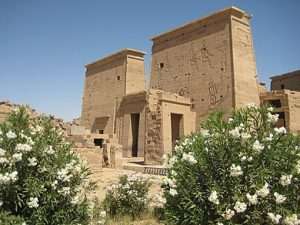
Philae = 'limit' i.e., of spacetime.
And/or: —In the paper that was read last time, it was said that in religious writings many things are said about being. People are divided according to their state of being—into saints and sinners, bad and good men, and so on. Many things are said in the Gospels that refer to being. In the Parable of the Sower sowing the Seed of the Word of God in mankind, the different categories of men mentioned are divided according to their being in relation to the Seed of the Word, to their reception of it. In another place, men with wrong being are called “thorns” or “thistles”, in the passage where Christ says: “Do men gather grapes of thorns or figs of thistles?” Men are then compared by Christ, in regard to their level of being, with trees, and it is said: “Every good tree bringeth forth good fruit, but the corrupt tree bringeth forth evil fruit.” All this means that the level of being of a man is of the greatest importance. As you know, it is necessary to think about a person’s level of being before you bring him into this Work. Something very serious is meant here and by now you will begin to understand what it is.

A good or bad one?

Anti-gravity? Heading north or south?
The tendency to-day to make criminals heroes is entirely wrong. There are two signs of being in regard to people that you might wish to bring into the Work. They must be responsible people and they must have some magnetic centre. Other things have been said in the past on this question and i will try to recall some of them now. Apart from the idea of Good Householder and magnetic centre, a person entering the Work should have a natural sense of shame. You know that many so called “moral defectives” have no sense of shame, and this is a very bad sign. And notice here that by being hard and never feeling shame you arrest the development of your own being. Again people entering the Work should have some sense of religion, some trace in their lives of a religious impulse—that is, of course, connected with magnetic centre, and with past influences and education. Then they should feel something of mortality, have some awareness of their own mortality. All these factors and several others form starting-points in their being from which ideas and teachings of the Work can develop. {'Psychological Commentaries on Gurdjieff and Ouspensky' / M. Nicoll}.
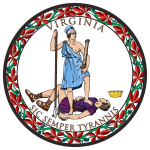
Pocahontas country. 'Sheath'?
Continued: "Antonius is the nomen of the gens Antonia, an important plebeian family of ancient Rome. Marcus Antonius claimed that the gens was descended from Anton, a son of Hercules. Women of the family were called Antonia. The Antonii produced a number of important generals and politicians."
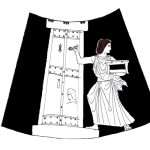
'Bower' to enlarge.
"A laconic phrase or laconism is a concise or terse statement, especially a blunt and elliptical rejoinder.[1][2] It is named after Laconia, the region of Greece including the city of Sparta, whose ancient inhabitants had a reputation for verbal austerity and were famous for their often pithy remarks."
Question. For this subject to be accepted within the educational system [if ever] what would be the best method? i.e., everything learned; regardless of intent/interest [or lack of both] becomes part of the individual - if only [within] the subconscious. Everything - sooner or later thereafter- emerges from it. The slow but sure way? Try ''butterfly''.
'Experience of No-Self and Path to No-Self' by Bernadette Roberts.
Coarse/subtle.

Famine Stela. A 'famine' of knowledge represented with?
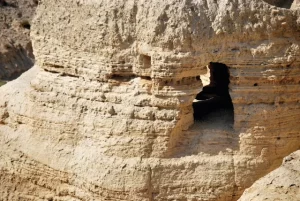
Any visible cracks? Whats the common factor?
"When the value represented by the symbol has been entirely explored and made conscious its power leaves it, and the object which held the meaning of the symbol becomes only a natural object once more. But while its 'power' lasts the symbol is the representative of an unknown truth. It rises spontaneously from the depths of the unconscious and expresses or manifests the hidden fact in an image whose meaning can only be partly grasped by consciousness." [Chapter 6, 'Women's Mysteries: Ancient and Modern'. Mentioned elsewhere]. Think about in relation to what the word 'incarnation' implies. Found within.
'Mans Search for Meaning' / Viktor Frankl.
Question. Does not the above - in one form or another apply to ALL information? Regardless of subject? Those bit and pieces of 'information' [over a period of time] = a realisation. Foundations of?

A work in progress: ''What i want to point out is the desert being so dry. Yet it flourishes with JUST ONE DROP OF WATER. A visual example of gods grace.'' [K. Nichols. Pilgrimage of Grace. Lent 2022: 'Day 21: A Priest Forever, According to the Line of Melchizedek: Essene Ruins Qumran'].
'Swell' to enlarge.
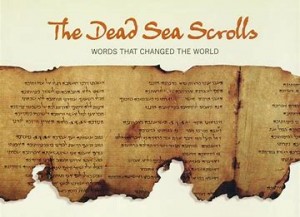
The oldest known texts of the Old Testament. Includes all the Books of same - with the exception of Esther.
"We must first consider the difference between the evaluation of a course of study and its assessment. The evaluation of a curriculum in the secular sense is the process by which the 'nature and desirability' of a course is given 'value or worth'; but to define the extent to which a course is 'workable and effective' requires a form - or forms - of assessment. These forms of assessment create the basis for the evaluation of the effectiveness of a course in meeting the intended aim specified by those who create the course, understood by those teaching it, and received by those learning." [Extract from the book 'The Magister'].
The ''READERS Way'' works just as well as any other 'way' - the results of which should bring about a positive assessment for the subject as a whole - as proven - if any of those ''proofs'' are verified. Yes or No?
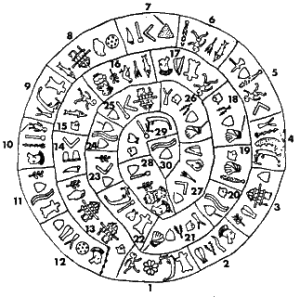
Where have you seen it before. Asleep?
Example of :{one example}: "...Because a modern man lives in 'sleep' {unknown/unaware link}, what knowledge therefore can a sleeping man have? And if you think about it and at the same time remember that sleep is the chief feature of our being, it will at once become clear to you that if a man really wants knowledge, he must first of all think about how to wake, that is, about how to change his being...Therefore a man who wants to awake must look for other people who also want to awake and work together with them. This, however, is easier said than done because to start such work and to organize it requires a 'knowledge' which an ordinary man cannot possess. The work must be organized and it must have a leader {teacher?}. Only then will it produce the results expected of it...It can be organized only by a man {or men/women} who know its problems and its aims, who know its methods; by a man {or woman} who has in his {her} time passed through such organized work him {her}self. A man usually begins his studies in a small group {class?}. This group is generally connected with a whole series of similar groups on different levels {curriculum?} which, taken together, constitute what may be called a 'preparatory school'..." ['In Search of the Miraculous'. Parenthesis, emphasis, this readers].
Question. Could one not apply the above description to a teaching method - of ANY subject - in say - a school curriculum - which ALL subjects prove, in one form or another. The beginning and finishing within a school education? Just one more subject.
And like all subjects some we like more than others. Some we take exams in. Some we don't. Most we remember. Some we don't - but even the ones we take a less {forgetful?} interest in - if only in those early years - we can still - if and when necessary - recall the basics - which is helpful if that latent interest is reignited - maybe in later years.
"But of what use is it to him if he does not remember?'' said one of us. "Essence remembers.'' said G. ''personality may forget..." Same book.
'Don't forget to remember' {Bee Gees}.
Recall what ''essence'' implies. Link to incarnation/reincarnation - in the present moment {i.e.,''fertilization'' link}. Try ''Wolfgang'' for a 'working' example.
And/or: "A word needs to be said about proof of authority. In the 'New Pearl of Great Price', said to be penned around 1330 by a certain Petrus Bonus of Ferrara and edited by a Franciscan friar {pseudonym}, the author states explicitly: ''We may prove the truth of our Art {1} By the testimony of the Sages {2} By the most forcible arguments {3} By analogy, and manifest examples.'' ...And although we would like to believe that our modern, sophisticated logic is immune to such persuasions, we know that's not true. Our entire educational system is based on proof by authority. Moreover, proof by authority carries its own proofs - it builds - one authority on another. So it was that the alchemists believed Bonus, and Bonus based his beliefs on 'Anaxagoras, Socrates, Plato, Geber, Rhasis, Homer and many others..." ['The Chemistry of Alchemy' / Cobb, Fetterolf and Goldwhite].
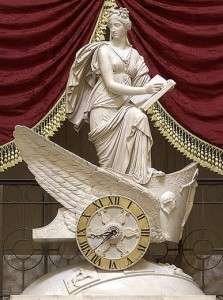
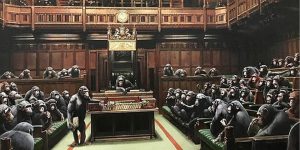
'Monkey see, monkey do: {1st year PREP or Private School prat?} ''Could the Foreign Secretary...in his capacity as cultural all-rounder - please confirm that no association will be made to this assembly with regards HIS personal views on letter boxes and bank robbers! Heavens above! What will future generations think!'' Closed Shop? i.e., the Old Boy network.
A working example: "getting into our 'car', intending to drive back to Ferrara, where we wanted to examine once again the most impressive of the early Renaissance astrological fresco's in Italy...Because the lowest register of the fresco is within easy reach, it has suffered the most damage...This same triple arrangement was maintained in the area depicting September - properly the sign of Libra...The mythological register was of more immediate interest to us, however, for the god in the chariot is Vulcan, who introduced mankind to alchemy. His chariot is drawn by 'monkeys', and we find ourselves wondering if the artists would have known that this association went back to the hermetic literature of Thoth, as a monkey 'faced' god. To the right are the physical alchemists, beating iron - perhaps a reference to the name Ferrara, the place where 'iron' is worked. To the right of Vulcan's chariot {'car'?} are a pair of what appears to be sleepers...The couple are far from being asleep, however. They are 'lovers' creating a 'civilization' through their passion...The secret of this couple of lovers is shown on the other side of Vulcan's chariot. In the sky {which is to say, in the spiritual sense of the word} hovers a 'shield'. It looks like a doorway into space: on it is painted the she-wolf suckling the 'twins' Romulus and Remus - founders of Rome...['The Zelator' / M. Hedsel. Emphasis, this readers].
All as a means for the author to decode what he describes as the 'Nicholas code'...
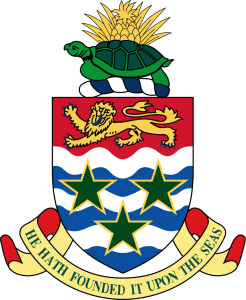
Cayman Islands.
Seven Mile Beach.
N.B. On the Antique Roadshow {2023} an automaton in the form of a pineapple is brought in. Inside is a red eyed monkey which pops its head inside and out.
The main point being {if only to this reader} that the study of a subject gives the same result - but most importantly - it gives the reader an idea as to the intent and the 'beliefs' of ALL who participate in the same subject - ALL the way back in time - since 'modern' man/woman {Neanderthal?} began to {think?}. In other words - whether we like {the subject?} or not it gives us an insight into what man/woman first began to {believe?} in. It gives us an insight into an aspect of their {beliefs?}. It becomes therefore - does it not - an aspect of Anthropology. That 'aspect' - which we know very little about. That aspect - which has not as yet even been taken into ACCOUNT.
A working example: ''One book opens another: the philosopher tells us truly. There is no understanding of the Art without long and anxious study of those texts in which the 'angelic' keys to our Philosophy are concealed. However, to the uninitiated eye, the bogus recipes of some imbecile puffer can appear as wise as the works of the Bridlington Canon {i.e., Ripley}. [Page 55 'Mercurius' / P. Harpur].
Question. Hocus pocus or a genuine mind set?

Which ones the P.M? Or put another way: which one has a Masters degree in the 'History of the Circus' and/or: The Life and Times of the Beef-burger King? Question. Draining the Swamp?
Side note: ''....mans life is short if we consider the 'stair' he has to climb, and his brain is the most obstinate monkey there is! If his heart rules him {'grace'?}, his conscience will soon take the place of the rod..." [Page 118 'Her-Bak: The Living Face of Egypt' / Isha Schwaller de Lubicz].
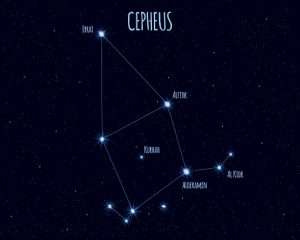
Shape of the chambers. 'Three and Four'?
"Stair" in relation to 'steep'. Saqqara {Step pyramid} in relation to the Giza complex. South - North. Get into a ''mindset'' to attempt an understanding to such monuments as the 'Bent' pyramid. Two 'chambers' within {''voids''?}. Both corbelled. Inclining towards each other. The edges of the 'higher' one deliberately scuffed out. The conclusion being mistakes made by the workmen.
Higher/lower? The 'higher' one not yet achieved. Lessor/Greater Mysteries? Only 'completed' in the ''Red'' one? 'Spirit' only?
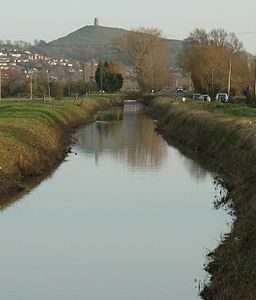
Isle of 'glass'.
 "You can follow two paths in the mountains, Her-Bak,'' said the sage. ''The first winds round it with many a twist, exploring; the slope is gentle, the ascent easy, varied, amusing. This path avoids points of danger. It never attacks the Peak {of silence?} and halts at shelters known to be safe. The other is steep {cliff? and/or ''corbelled''}, takes each phase of the climb without detour, skirts precipices {'overhangs'?} and reaches a summit that is only accessible to a man who can face naked sunlight and danger. Which path will you choose Her-Bak?'' [Page 89 'Her-Bak: Egyptian Initiate' / Isha Schwaller de Lubicz].
"You can follow two paths in the mountains, Her-Bak,'' said the sage. ''The first winds round it with many a twist, exploring; the slope is gentle, the ascent easy, varied, amusing. This path avoids points of danger. It never attacks the Peak {of silence?} and halts at shelters known to be safe. The other is steep {cliff? and/or ''corbelled''}, takes each phase of the climb without detour, skirts precipices {'overhangs'?} and reaches a summit that is only accessible to a man who can face naked sunlight and danger. Which path will you choose Her-Bak?'' [Page 89 'Her-Bak: Egyptian Initiate' / Isha Schwaller de Lubicz].
"Cepheus is a constellation in the far northern sky, named after Cepheus, a king of Aethiopia in Greek mythology. It is one of the 48 constellations listed by the second century astronomer Ptolemy, and it remains one of the 88 constellations in the modern times...Cepheus was the King of Aethiopia. He was married to Cassiopeia and was the father of Andromeda, both of whom are immortalized as modern day constellations along with Cepheus....
The constellation's brightest star is Alpha Cephei, with an apparent magnitude of 2.5. Delta Cephei is the prototype of an important class of star known as a Cepheid variable. RW Cephei, an orange hypergiant."
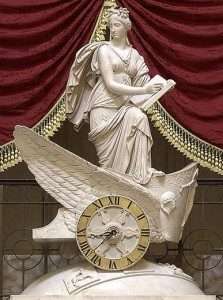
'Car' or 'chariot'- or does it matter?

Precipice?
Continued: "I'm a university professor. Cologne University. I work in mediaeval codes...Ferrara seems to have secret things in its very 'bones'...Richard Dayton spent many hours with us...His knowledge of mediaeval literature and arcane sigils was formidable...By far the best place to break down {car link} in Ferrara {is close to the garage of} Faccetti. Faccetti is a magician in metal...We drove back to England as though the car had wings. During that drive we were able to shake off from our minds the obsession with the code of Sagrada di San Michele, and find a new point of inner balance...'' [Same book. Parenthesis, this readers].
Side note: 'Lost continent' in relation to a ''new civilization'' - together with ''that which was lost is now found'' i.e., ''Who was Nicolas'' we had asked in silence...''You were,'' said the voice. ''You were Nicholas...'' Some things told to us in that moment - what T. S. Eliot called a timeless moment - changed our life..." [Same book].
Recall what a ''timeless moment'' infers. Enlarged elsewhere.
And/or: "Adam McLean has suggested an alternative source for the development of European Tarot - one which is essentially Western in origin. His study of the Mantegna tarot is persuasive. These cards which number 50 in total, emanate from the school of Ferrara and are based upon the Platonic academies of the mid-fifteenth century Renaissance. The cards are split into five decades, representing A}: the conditions of life from beggar to pope; B}: the nine muses and Apollo; C}: the seven liberal arts, including philosophy, poetry and theology; D}: the seven cardinal virtues, with the spirits of astronomy, chronology and cosmology; and E}: the celestial hierarchy of the seven planets together with the eighth sphere...." [Page 188 'The Western Way'. Vol 2].

"Hey Ron, somebody broke into Gringotts. Headlines: 'Believed to be the work of dark wizards or wizards unknown. The Goblins while acknowledging the breach insist nothing was taken The vault in question, 713, had been emptied earlier that day: "That's odd, that's the very vault that Hagrid and i went to." ['Harry Potter and the Philosophers Stone' / 2001].
Can you 'see' what is being implied - ONLY.
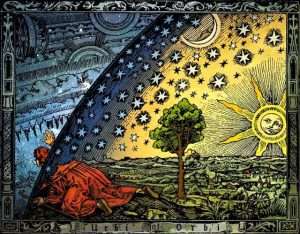 Side note: "137 is the thirtythird {'thirtythree'} prime number and is a number used in Freemasonry." {'Curse of Oak Island' / S11 EP19].
Side note: "137 is the thirtythird {'thirtythree'} prime number and is a number used in Freemasonry." {'Curse of Oak Island' / S11 EP19].
And/or: The Pawn Stars Gold & Silver Pawn Shop is located at Pawn Plaza in downtown Las Vegas, Nevada at: Address: 713 S Las Vegas Blvd.
Analogy? of same..."Once the Numerologist went to see the Academy Award film, 'Charley,' with a friend who was particularly dubious about this '23' obsession. The story of the film concerns a low grade moron {IQ around 70} who is transformed by neuro-surgery into a superhuman genius {IQ around 200+}. In the crucial operation scene, the number on the operating room is visible, and it is of course, 23." [Extract from the book 'The Cosmic Trigger'].

'Lucifer' = light bringer. Analogy = ''Beast that rises in the East''. See it? Question. S/E as a means...? Question 2. Where does S/W fit into the greater scheme {''Theme?''} - of things?
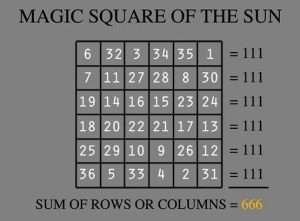
"Nicolas Flamel is the only known maker of the Philosophers Stone. A legendary substance of renown...that can change metal into gold, produces the elixir of life....Who last year celebrated his 665th birthday." ['Harry Potter and the Philosophers Stone'].
Coincidence and synchronicity - ''hand in hand?'' i.e.,physical coincidences represented with the number 23 But once that ''connection'' is made {enlarged elsewhere} = ''synchronicities''? Understanding that universal framework gives that HYPOTHESIS a legitimate possibility. NOTHING MORE.
Side note: ''It takes 66 days to create a new habit''. [BBC1 'How to Stay Young' / September 2017]. Coincidence? Try ''habit''.
"In Europe, 66 is known mainly as the name of a card game. However, in the Islamic 'mystical' tradition it corresponds to the numerical value of the word Allah. Hence, Turkish Sufi's would explain the predominance of the tulip in Turkish art, as well as the emblem of Islam, the crescent moon, by the fact that the names of these 2 motifs, lalah and hilal respectively, consist of the same letters and have the same numerical value as Allah. Sixty-six can also be seen as a duplication of 6, or as a number in the second 'power' {as is the case with many similar numbers - 44, 77, etc.,}. ['Mystery of Numbers'. Emphasis, this readers]. Tulip?

'Wheels' of time? Soul about to take notes?
A work in progress: ''It was my second day on the Camino de Santiago de Compostela. I was just one of the quarter million pilgrims that make their way each year on foot or bicycle to Santiago in N/W Spain....St. James, Spains patron saint so the legend says, is buried beneath Santiago's cathedral....Pagan travellers may have walked the path as far back as 1000 BC....I set off that morning with the goal of walking around eighteen miles to the hilltop town of O'Cebreiro. My plan was to follow the official stages of the Camino Frances: the entire path is divided into sections of between eleven and twentythree miles.....'' [Readers Digest / March 2017].
N.B. From a S/E start point.
And/or: Stone path found at the S/E POINT in the 'swamp' on Oak Island - leading to the money pit. Man made. No one knows why.
John Dee (13 July 1527 – 1608 or 1609) was an English mathematician, astronomer, teacher, astrologer, occultist, and alchemist.[4] He was the court astronomer for, and advisor to, Elizabeth I, and spent much of his time on alchemy, divination, and Hermetic philosophy. As an antiquarian, he had one of the largest libraries in England at the time. As a political advisor, he advocated the foundation of English colonies in the New World to form a "British Empire", a term he is credited with coining.

Laconian key to enlarge.
Side note: "Since excavations began in 2008 on the acropolis of Bylazora, a great deal has been unearthed: a monumental ramp (part of a propylon), a defensive wall, a large amount of pottery, and a multitude of objects of iron, bronze, stone and terracotta. Among these finds was a tool discovered in the 2009 season, which we initially identified as an iron hook (Figure 1), of a peculiar shape and of an unknown use. However, after an exhaustive study, we now suspect that it might be a votive key. The key found in Bylazora corresponds to a very archaic type, made entirely of iron, about 20 cm. long and hook-shaped..This kind of key has been found in Hera sanctuaries in Argos and Paestum (both in the city and in the rural sanctuary of Foce del Sele). They have also been discovered in other sanctuaries: of Aphaia on Aegina and in the Corycia Cave of Delphi, the ancient sacred center of Pan and the Nymphs. Some scholars have suggested that this type of key, found in the context of temples and shrines, may have been used to open the great doors of the houses of the gods...
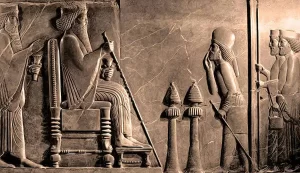
Lotus flower in hand.
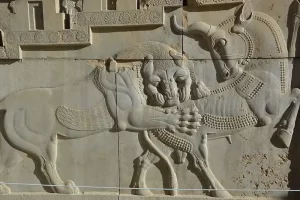 A working example: ''As visitors to Persepolis, capital of the Persian Achaemenid Empire, entered the city, they would approach a stone terrace on which a palatial precinct rose forty feet above the fertile flatlands at the foot of Kuh-i-Rahmat, the Mountain of Mercy....They would ascend sixtythree limestone steps, pivot on a landing {'64'?}, then climb another fortyeight steps {111 in total}, to an imposing threshold known since antiquity as the Gate of All Nations. Flanking the four storey tall gate were statues of lamassu, winged bulls with human heads and curly {'goaty'?} beards. The great city {'new one'?} was founded by the Persian king Darius I around 518 BC in present day Iran....
A working example: ''As visitors to Persepolis, capital of the Persian Achaemenid Empire, entered the city, they would approach a stone terrace on which a palatial precinct rose forty feet above the fertile flatlands at the foot of Kuh-i-Rahmat, the Mountain of Mercy....They would ascend sixtythree limestone steps, pivot on a landing {'64'?}, then climb another fortyeight steps {111 in total}, to an imposing threshold known since antiquity as the Gate of All Nations. Flanking the four storey tall gate were statues of lamassu, winged bulls with human heads and curly {'goaty'?} beards. The great city {'new one'?} was founded by the Persian king Darius I around 518 BC in present day Iran....
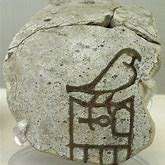
Hor-Aha. Any common factors? i.e., Bird = female aspect. Ankh = 'key'?

'Bower' to enlarge.
Travellers would have continued through the gate onto the royal terrace, a massive thirty foot platform {'Pavilion' / 'Tower'?}, filled with spacious meeting halls and palaces where reliefs depict kings receiving attendants and taming fierce creatures....The terrace's largest building was called the Apadana, or Audience Palace, featured seventytwo columns and a central court for royal festivities {'feasting'?}. Along the buildings staircases, reliefs portrayed Achaemenid guards and nobles ushering TWENTYTHREE delegations of different foreign peoples.'' [Pages 25/6 'Archaeology' / July-August 2023].
N.B. '72' = half of 144.
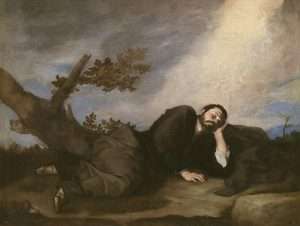
"Depiction of Jacob's dream sleeping on a stone at Bethel, by José de Ribera." Native or stranger?
Side note: "Very little is known about the first 20 years of the painters life and there are many gaps concerning his later life and career. He was baptized on February 17, 1591, in Játiva, Spain, his father identified as a shoemaker. He is not recorded again until 1611, when records show he was paid for a painting (now lost) for a church in Parma, Italy. Documents show he was a member of the Accademia di San Luca in Rome by October 1613 and living in a house in the Via Margutta in 1615–16, at that time known as "the foreigner's quarter", apparently living a bohemian life with his brothers and other artists. Anecdotal accounts written at the time indicate he quickly earned a reputation as an outstanding painter after arriving in Rome and was earning great profits, but also noted his laziness and extravagant spending."
Dionysus to enlarge.
The Stone of Jacob appears in the Book of Genesis as the stone used as a pillow by the Israelite patriarch Jacob at the place later called Bet-El. As Jacob had a vision in his sleep, he then consecrated the stone to God. More recently, the stone has been claimed by Scottish folklore and British Israelism.

Side note: The tomb of Dumbledore. BELOW the sarcophagus. In truncated pyramid form. Its flat top can be seen above. 'Robbed' by Voldemort. 'Cedar' timbers?

Fire AND water.
And/or: ''The Forbidden City. The fifth wonder of the Silk Road. An elaborate palace metropolis, built 600 years ago by China's new emperor, Yongle, near the frontier of his empire.{Beijing}...Lifting up the Hall of Preserved Harmony reveals an array of massive stones. The Emperor's Audience Chamber sits on a twentysix foot marble base. Inside sixty stone blocks with reinforced packed earth - with more layers on top - the center of this base {foundation?} becomes the platform for a massive marble staircase engraved with toothed dragons, cranes and phoenix's. The dragon and crane represent the Emperor and Empress flying above the waves, symbolising the Imperial court'' ['Blowing up History' / S7 EP15].
CORRECTION: ''The Hall of Supreme Harmony (Chinese: 太和殿; pinyin: Tài Hé Diàn; Manchu: ᠠᠮᠪᠠ
ᡡᠸᠠᠯᡳᠶᠠᠮᠪᡠᡵᡝ
ᡩᡝᠶᡝᠨ;Möllendorff: amba hūwaliyambure deyen) is the largest hall within the Forbidden City in Beijing, China. It is located at its central axis, behind the Gate of Supreme Harmony. Built above three levels of marble stone base, and surrounded by bronze incense burners, the Hall of Supreme Harmony is one of the largest wooden structures within China. It was the location where the emperors of the Ming and Qing dynasties hosted their enthronement and wedding ceremonies. The name of the Hall was changed several times throughout the past few centuries, from its initial Fengtian Dian (奉天殿), later to Huangji Dian (皇极殿) in 1562 and to the current one by the Shunzhi Emperor of the Qing dynasty in 1645.
Together with the Hall of Central Harmony and Hall of Preserving Harmony, the three halls constitute the heart of the Outer Court of the Forbidden City.
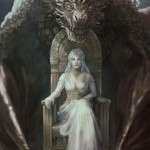
Heart of the dragon. Or back of the head?
 The Hall of Supreme Harmony rises some 30 metres (98 ft) above the level of the surrounding square. It is the ceremonial center of imperial power, and the largest surviving wooden structure in China. It is eleven bays wide – with the main room being nine bays wide – and five bays deep, the numbers nine and five being symbolically connected to the majesty of the Emperor.[1] The six pillars nearest the imperial throne are covered with gold, and the entire area is decorated with a dragon motif. The Dragon Throne, in particular, has five dragons coiled around the back and handrests. The screen behind it features sets of nine dragons, again reflecting the "nine-five" symbolism.[2] The Hall of Supreme Harmony features an exquisite throne made of red sandalwood, and formerly used by the emperors of the Qing dynasty.
The Hall of Supreme Harmony rises some 30 metres (98 ft) above the level of the surrounding square. It is the ceremonial center of imperial power, and the largest surviving wooden structure in China. It is eleven bays wide – with the main room being nine bays wide – and five bays deep, the numbers nine and five being symbolically connected to the majesty of the Emperor.[1] The six pillars nearest the imperial throne are covered with gold, and the entire area is decorated with a dragon motif. The Dragon Throne, in particular, has five dragons coiled around the back and handrests. The screen behind it features sets of nine dragons, again reflecting the "nine-five" symbolism.[2] The Hall of Supreme Harmony features an exquisite throne made of red sandalwood, and formerly used by the emperors of the Qing dynasty.
N.B. Mummified crocodiles set into the ceilings of medieval alchemists.
Lizard to enlarge.

As ''seen'' from a different perspective.
Set into the ceiling directly above the throne is an intricate caisson decorated with a coiled dragon, from the mouth of which issues a chandelier-like set of metal balls, called the "Xuanyuan Mirror", a reference to the Yellow Emperor, a mythological Chinese ruler.[3] According to legend, the metal balls will fall and strike dead any usurper to the throne.''
Side note: The caisson (Chinese: 藻井; pinyin: zǎojǐng; lit. 'algae well'), also referred to as a caisson ceiling, or spider web ceiling,[1] in Chinese architecture is an architectural feature typically found in the ceiling of temples and palaces, usually at the centre and directly above the main throne, seat, or religious figure.[1][2] The caisson is generally a sunken panel set into the ceiling. It is often layered and richly decorated. Common shapes include squares, octagons, hexagons, circles, and a combination of these.[3]
The caisson is a general name for a coffer.[4] In the case of Chinese architecture, however, the caisson is characterised by highly developed conventions as to its structure and placement.[2][5]
Continued: ''The common English name "Forbidden City" is a translation of the Chinese name Zijin Cheng (Chinese: 紫禁城; pinyin: Zǐjìnchéng; lit. 'Purple Forbidden City'). The name Zijin Cheng first formally appeared in 1576.[10] Another English name of similar origin is "Forbidden Palace".[11]
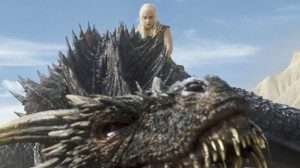 The name "Zijin Cheng" is a name with significance on many levels. Zi, or "Purple", refers to the North Star, which in ancient China was called the Ziwei Star, and in traditional Chinese astrology was the heavenly abode of the Celestial Emperor. The surrounding celestial region, the Ziwei Enclosure (Chinese: 紫微垣; pinyin: Zǐwēiyuán), was the realm of the Celestial Emperor and his family. The Forbidden City, as the residence of the terrestrial emperor, was its earthly counterpart. Jin refers to a prohibition or taboo (often used in signs saying "no entry" or "no smoking" or "X is prohibited"). Cheng originally meant a castle, fortress, or fortification, but in modern Chinese, the character means city.
The name "Zijin Cheng" is a name with significance on many levels. Zi, or "Purple", refers to the North Star, which in ancient China was called the Ziwei Star, and in traditional Chinese astrology was the heavenly abode of the Celestial Emperor. The surrounding celestial region, the Ziwei Enclosure (Chinese: 紫微垣; pinyin: Zǐwēiyuán), was the realm of the Celestial Emperor and his family. The Forbidden City, as the residence of the terrestrial emperor, was its earthly counterpart. Jin refers to a prohibition or taboo (often used in signs saying "no entry" or "no smoking" or "X is prohibited"). Cheng originally meant a castle, fortress, or fortification, but in modern Chinese, the character means city.
Today, the site is most commonly known in Chinese as Gùgōng (故宫), which means the "Former Palace".[12] The museum which is based in these buildings is known as the "Palace museum" (Chinese: 故宫博物院; pinyin: Gùgōng Bówùyùan).
In Ming and Qing, the Forbidden City was also known as Da Nei (大内) or "Palace City" (宫城).''
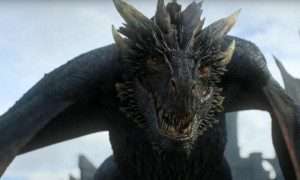
North or south? What about cranes and phoenix?
 And/or: ''Over the past 3,000 years, the city of Beijing has had numerous other names. The name Beijing, which means "Northern Capital" (from the Chinese characters 北 běi for north and 京 jīng for capital), was applied to the city in 1403 during the Ming dynasty to distinguish the city from Nanjing (the "Southern Capital").[31] The English spelling Beijing is based on the government's official romanization (adopted in the 1980s) of the two characters as they are pronounced in Standard Mandarin. An older English spelling, Peking, was used by Jesuit missionary Martino Martini in a popular atlas published in Amsterdam in 1655.[32] Although Peking is no longer the common name for the city, some of the city's older locations and facilities, such as Beijing Capital International Airport, with the IATA code PEK, and Peking University, still retain the former romanization.''
And/or: ''Over the past 3,000 years, the city of Beijing has had numerous other names. The name Beijing, which means "Northern Capital" (from the Chinese characters 北 běi for north and 京 jīng for capital), was applied to the city in 1403 during the Ming dynasty to distinguish the city from Nanjing (the "Southern Capital").[31] The English spelling Beijing is based on the government's official romanization (adopted in the 1980s) of the two characters as they are pronounced in Standard Mandarin. An older English spelling, Peking, was used by Jesuit missionary Martino Martini in a popular atlas published in Amsterdam in 1655.[32] Although Peking is no longer the common name for the city, some of the city's older locations and facilities, such as Beijing Capital International Airport, with the IATA code PEK, and Peking University, still retain the former romanization.''
Side note: ''In architecture, pavilion has several meanings: It may be a subsidiary building that is either positioned separately or as an attachment to a main building. Often it is associated with pleasure.[1] In palaces and traditional mansions of Asia, there may be pavilions that are either freestanding or connected by covered walkways, as in the Forbidden City (Chinese pavilions), Topkapi Palace in Istanbul, and in Mughal buildings like the Red Fort.
-
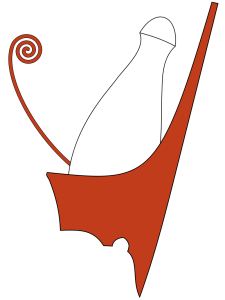
Double Crown.
As part of a large palace, pavilions may be symmetrically placed building blocks that flank (appear to join) a main building block or the outer ends of wings extending from both sides of a central building block, the corps de logis. Such configurations provide an emphatic visual termination to the composition of a large building, akin to bookends.
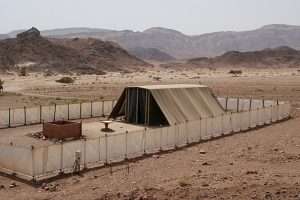
''When God gave Moses the Law at Mount Sinai, God also gave him instructions for making a sacred tent of meeting, also known as the “tabernacle” (Exodus 25:1–27:21; 35:1–38:31). This sacred tent was to be Israel's place of worship, where the people would bring gifts and sacrifices to God.'' Middle/Twentyfive/Thirtyfive to enlarge.
The word is from French pavillon (Old French paveillon) and it meant a small palace,[2] from Latin papilionem (accusative of papilio). In Late Latin and Old French, it meant both ‘butterfly’ and ‘tent’, because the canvas of a tent resembled a butterfly's spread wings.[3][4]
The word is from the early 13c., paviloun, "large, stately tent raised on posts and used as a movable habitation," from Old French paveillon "large tent; butterfly."
A working example: "Briars is the small pavilion in which Napoleon Bonaparte stayed for the first few weeks of his exile on Saint Helena in late 1815 before being moved to Longwood House. The pavilion was in the garden of William Balcombe, an English merchant who became a purveyor to Napoleon....In 1827 the East India Company bought the property for £6,000 and used it for making silk and growing mulberry trees. In 1959 the Pavilion was purchased by Dame Mabel Brookes, a great granddaughter of William Balcombe, and donated it to the French government, which appointed her as Chevalier de la Légion d'honneur in 1960 in recognition of her generous gesture.[3] It became the third of the French properties on the island, together with his former tomb in Sane Valley and Longwood House.[4]

Uriah Rennie, the Premier League’s first black referee, has been remembered as a “trailblazer” and the “epitome of a role model” following his death at the age of 65. Rennie was born in Jamaica before moving to Sheffield aged six with his family and went on to oversee more than 300 games between 1997 and 2008, including 175 in the English top flight. Once described as the “fittest” match official in world football, Rennie recently revealed he was learning to walk again after a rare neurological condition left him paralysed from the waist down. Webb said in a statement: “Uri was not only a trailblazer who paved the way for many others after becoming the first black referee in the Premier League, he was a great person and a great referee who cared deeply about his community and helping people fulfil their potential.
“He was a strong influence on our refereeing group too, offering a calming presence and we shared many good times together. R.I.P
Side note: The Windsors honor their German heritage by opening presents after afternoon tea on Christmas Eve instead of on Christmas Day. Prince Harry writes in his memoir Spare of Christmas Eve traditions: "We were at Sandringham in a big room with a long table covered with white cloth and white name cards.
Continued: Later, Balcombe was offered a post in Australia and established a new estate called "The Briars" in the Carwoola area of New South Wales. On this new estate, it is believed that he was responsible for introducing two plants to Australia, the Sweet Briar (Rosa rubiginosa) and the Weeping Willow (Salix babylonica). The willow grew nearby Napoleon's grave on St Helena and Balcombe is reported to have taken cuttings from these trees."
"BRIAR: a wild bush, especially a rose or blackberry bush with long stems and sharp thorns."
Refresher: "He who aspires to be a sage and to know the Great Enigma of Nature must be the heir and despoiler of the Sphinx: his the human head, in order to posses speech; his the eagles wings, in order to scale the heights {'cliff'?}; his the bulls flanks, in order to furrow the depths; his the lions talons, to make a way on the right and the left, before and behind."
Side step: ''David Shepherd, the cricket umpire, was known for hopping at the crease whenever a side was on a score of 111. The score is known as a Nelson and is considered unlucky. Hence his little dance.'' ['Impossible' / S6 EP28].

Gulls wings. BACK to the future?
And/or: ''The Fellowship of the Ring opened with Bilbo and Frodo celebrating their birthdays. Bilbo was 111 {eleventy-one}, and Frodo was 33. Hobbits considered 'thirtythree' a coming-of-age year, so knowing that Frodo was 50 when he took the One Ring to Mordor meant that he was older than Jackson portrayed him in his films.''
Bilbo: "Alas, eleventy-one years is far too short a time to live among such excellent and admirable hobbits." [cheers abound.] "I don't know half of you half as well as I should like, and I like less than half of you half as well as you deserve.''
MIDDLE Earth.
N.B. ''Bilbo had kept the ring for 'sixty' years.''
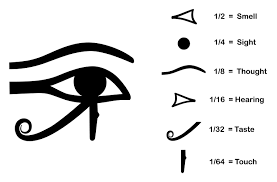
IN/OF the horizon?
 From a different perspective - but with something added {coincidence?}: ''Our hotel was a Spanish adobe {mud-brick} palace, hidden behind high walls in the center of town....I was with the Dogon researcher....We got a room, and the room number was twentythree. He got all excited....said it was a very auspicious number. From Africa, where the Dogons live, the star Sirius disappears below the horizon and is out of sight for a couple of months; then it appears again on the morning of July 23rd, when it rises just before the sun {heliacal rising}. It appears, bright ruby red, just above the horizon, almost exactly due east....So it is seen just for a moment then it is gone. This is the moment that Sirius, the Sun and the Earth are in a straight line across space. In Egypt, almost all temples were aligned with this line including the gaze of the Sphinx....It began their new year and the first day of their ancient Sothic calendar....'' [Page 14 'The Ancient Secret of the Flower of Life' / D. Melchizedek].
From a different perspective - but with something added {coincidence?}: ''Our hotel was a Spanish adobe {mud-brick} palace, hidden behind high walls in the center of town....I was with the Dogon researcher....We got a room, and the room number was twentythree. He got all excited....said it was a very auspicious number. From Africa, where the Dogons live, the star Sirius disappears below the horizon and is out of sight for a couple of months; then it appears again on the morning of July 23rd, when it rises just before the sun {heliacal rising}. It appears, bright ruby red, just above the horizon, almost exactly due east....So it is seen just for a moment then it is gone. This is the moment that Sirius, the Sun and the Earth are in a straight line across space. In Egypt, almost all temples were aligned with this line including the gaze of the Sphinx....It began their new year and the first day of their ancient Sothic calendar....'' [Page 14 'The Ancient Secret of the Flower of Life' / D. Melchizedek].
Side note: The Dogon and hotel symbols very similar - Wide tail fins - like the dolphin and whale. With one exception. Dogon = two eyed. ''Adobe'' = one eyed.
Above/below the horizon as a means....?
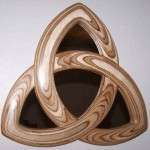
Straight lines and curves. 'PYR' to enlarge.
A working example: ''The reader will remember that according to most authorities Iblis - who Rumi refers to as ''one eyed'' - was one of the jinn and not one of the angels, since he was made of fire, while they are made of light. However, his eons of piety had brought him into their proximity, so he mixed freely with them. However much the angels examined Adam, they did not come to know what sort of all-comprehensive reality he was. But Iblis the deceitful {'cunning'} was once walking around Adam. 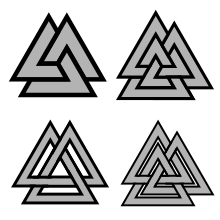 Gazing up at him with his one squint eye, he saw that Adams mouth was open. He said, 'Just wait. Now i have found a way to undo the knot of our problem. I will enter this hole {'void'?} and see what sort of place this is.'' When Iblis went in and traveled around Adams makeup {in 'profile'?}, he found it to be a small world. He found there a representation of everything that he found in the large world. He found the head like a heaven with seven strata etc...When Iblis had traveled the whole frame of Adam, he recognized the macrocosm in all the traces he saw. HOWEVER, when he reached the heart, he found it like a pavilion. In front of it, the breast was like a square erected before a royal palace. However much he tried to find a way into the pavilion so that he could go into the heart, he was not able to....With a hundred thousand thoughts, he turned back from the door of the heart in despair. He reports to the angels that nothing is to be feared from this hollow person who is like other animals, though there is one place that cannot be entered.'' [Pages 123-4 {Kindle} 'The Tao of Islam].
Gazing up at him with his one squint eye, he saw that Adams mouth was open. He said, 'Just wait. Now i have found a way to undo the knot of our problem. I will enter this hole {'void'?} and see what sort of place this is.'' When Iblis went in and traveled around Adams makeup {in 'profile'?}, he found it to be a small world. He found there a representation of everything that he found in the large world. He found the head like a heaven with seven strata etc...When Iblis had traveled the whole frame of Adam, he recognized the macrocosm in all the traces he saw. HOWEVER, when he reached the heart, he found it like a pavilion. In front of it, the breast was like a square erected before a royal palace. However much he tried to find a way into the pavilion so that he could go into the heart, he was not able to....With a hundred thousand thoughts, he turned back from the door of the heart in despair. He reports to the angels that nothing is to be feared from this hollow person who is like other animals, though there is one place that cannot be entered.'' [Pages 123-4 {Kindle} 'The Tao of Islam].
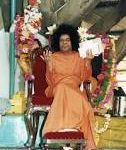
Born on the 23rd. Died on the 24th.
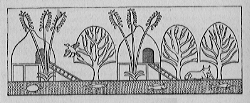
reed huts?
And/or: "The man 'machine' is the power of accident. His activities may fall by accident into some sort of 'channel' which has been created by mechanical or cosmic forces and they may by accident move along this channel for a certain time {habits?}, giving the illusion that aims of some kind are being attained...The man 'machine' can do nothing. To him and around him everything just happens. In order TO DO it is necessary to understand the law of octaves..." ['In Search of the Miraculous'].
''Accident'' {'23'?} in relation to 'coincidence' . ''Channel'' in relation to 'ploughing ones furrow' . ''law of octaves'' {enlarged elsewhere} in relation to synchronicities. All as a means...?

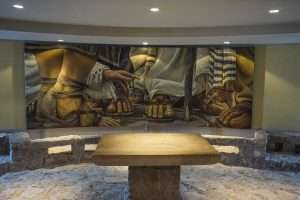
Jordan Sea. Dead sea as a means. Whose 'finger'. What 'foot'? FROM THE HEART?
Side note: June 23rd 1988. 'Greenhouse Effect And Global Climate Change' paper FIRST mentioned in the Senate USA.
And/or: "I am standing beside the Teacher, and behind me a group is on a fairground carousal, which is going round and round and up and down. Then a man comes and from a chest of drawers he takes out an orange robe, which is for me. I am a bit overawed by this robe, wondering whether it is really for me, but he gives it to me and tells me that i must finish off the hem."
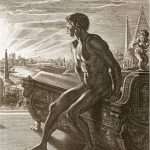
'Turning the light around'? S/E OR S/W?
"The image of the group on a carousal - symbolises the dynamic of being thrown between the opposites on a Road that is not linear {E-W?}, but a circular journey towards wholeness. However, the image of the orange robe and the symbolic meaning of the dreamer finishing the hem cannot be appreciated from a solely psychological context.

'REFRESHER: 'The whole work of 'turning the light around' uses the method of reversal. The 'beauties' of the highest heavens and the marvels of the sublimest realms are all within the heart: this is where the perfectly open and aware spirit concentrates. Confucians call it the open center {Amarna?}, Buddhists call it the pedestal of awareness {'horizon'?}, Taoists call it the ancestral earth, the yellow court {'sand'?}, the mysterious pass {'Place of Rowing'?}, the primal opening. The celestial mind is like a house; the light is the master of the house. Therefore once you turn the light around, the energies throughout the body all rise.'' Side note. Female aspect now leading the Way i.e., figures of his mother and queen in front {up to the height of the 'knee'}. His own name in hieroglyphs - down at the back of the 'throne' from the shoulders down to and including the pedestal . "Ancestors" to enlarge.
For the orange robe is associated with the sannyasin, one who has renounced the world, and thus finishing the hem of this robe suggests completion of a certain spiritual work......The spiritual call happens not through the will of the ego, but the prompting of the soul.....The orange robe tells her that it now time to 'turn away' from the world, towards Home." [Pages 17/18 'The Lover and the Serpent' / Llewellyn Vaughan-Lee].
Sunset?
"The turning around of the light is the "firing process."
Side note: I am deeply grateful to the directors of Escuela de la Fe (School of faith) in Mexico for inviting me to celebrate the 50th {'fifty'} anniversary of their foundation. It was a wonderful experience that helped me understand even more the importance and scope of this institution that forms people in faith so that they, in turn, may share it. The celebration concluded with a Eucharist at the Basilica of Our Lady of Guadalupe. From my heart, thank you.

Gateway of Qena?
During the first week of September, we held a gathering with all the staff of New Gate Tours in Poza Rica, Veracruz—the travel agency we founded 20 years ago to promote pilgrimages. They were days of intense work, programming, and planning, but also of rest and discovery. I am grateful to our hosts who gifted us with unforgettable days of nature, gastronomy, faith, and prayer. As part of the gathering, we also celebrated the first retreat Touching the Hem of Jesus, with nearly a thousand participants. Judging by the testimonies we received, God poured out many graces and blessings upon them.
 Afterward, I began a tour of several cities to preach the same retreat. The dynamic lasts about three hours: it includes a reflection on the Gospel passage of the woman with the hemorrhage, a time of Eucharistic adoration during which people can come forward to touch the mantles, and concludes with Holy Mass. Since we first introduced this format at the Encounter in Puebla in 2024, it has become more a profound moment of prayer, encounter with Jesus, and interior healing. So much so that prayer groups called Touching the Hem have begun to form.
Afterward, I began a tour of several cities to preach the same retreat. The dynamic lasts about three hours: it includes a reflection on the Gospel passage of the woman with the hemorrhage, a time of Eucharistic adoration during which people can come forward to touch the mantles, and concludes with Holy Mass. Since we first introduced this format at the Encounter in Puebla in 2024, it has become more a profound moment of prayer, encounter with Jesus, and interior healing. So much so that prayer groups called Touching the Hem have begun to form.
From Magdala, we now send them a monthly Adoration, along with messages and catechesis.
And/or: In antiquity, bells were part of daily life. Their primary function was to serve as an acoustic signal, although depending on the context, they could have various uses. In the excavations at Magdala, small bronze bells have been found, most of them in contexts dating from the 1st and 2nd centuries CE. But is it possible to know their exact use and origin?
Bronze bells were common objects in antiquity, especially in the Roman world during the imperial period, and they were used and traded throughout the Mediterranean. One example is the shipwreck at Caesarea Maritima, where around fifteen metal bells were discovered.
Most interpretations of the use of these small bells tend to associate them with an apotropaic function (that is, as objects intended to ward off evil). Their use as tintinnabula – a kind of wind-chime that, when it sounded, would drive away evil spirits – was common. However, would this practice have been permitted in ancient Judaism?
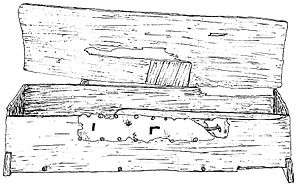
Mastermyr chest. GOTLAND. Most of the find had been placed in the chest, but there were also objects around it such as three bronze cauldrons, three bells and a fire-grid of iron.[2] A chain, made up of 26 figure-of-eight shaped links, was wrapped around it.[2] It served both as an extra lock and handle since the chest was too heavy for the original handle.[5] The chest and the other items had probably been placed in a boat which capsized and sank in the lake.[6] Another theory is that the chest was temporarily hidden at the water's edge.[2]
The chest contained Viking-era blacksmithing and woodworking tools. It also contained several products of such work, including elements of several locks.[7] The chest and its contents provide a valuable insight into technology during the Viking Age.
“The gold bells and the pomegranates are to alternate around the hem of the robe. Aaron must wear it when he ministers. The sound of the bells will be heard when he enters the Holy Place before the Lord and when he comes out, so that he will not die. (Exodus 28:34–35)
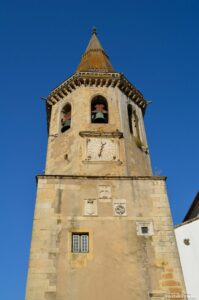
The Manueline clock was taken from the “Sun Gate” (Porta do Sol) of the Templars’ Castle is from the time of D. João III (1523)...According to the Tomar website, there is no doubt that this stone came from the the foot or support of an ancient tomb and was later used in the clock tower [click here to read more].
Most likely, they served a practical purpose consistent with the local context. They may have been used for acoustic purposes: as musical objects to quiet a child, to attract attention from a distance, or as audible signals hung around the necks of livestock. In fact, the Mishnah mentions some of these uses, especially in connection with the restrictions of Shabbat. Since sounding musical instruments is forbidden on that day, bells must not produce sound – "even if it is to quiet a child" (Mishneh Torah, Shabbat 23:4). Likewise, livestock may not be taken out if they wear bells on their necks, – "even if it is plugged to prevent it from ringing" (Mishnah Shabbat 5:4).
'Stillness'?

Turning point?
AND/OR: By a closer look at ourselves, our motives, limitations and potentialities the clear thread of our destiny is revealed, allowing us to find our way through the self-made maze, like Theseus through the labyrinth. Some unwind their threads quicker than others. Some have tangled their thread so thoroughly that it will be some time before the turning point is reached. While we must be conformable to the pattern of our present incarnation, our fate is not fixed or predestined. To some extent we each make our own circumstances and while self-clarification may highlight and partially explain them, it does not justify them. Whatever responsibilities we have taken on cannot be off-loaded because we suddenly discover a ‘spiritual’ destiny. It may be that the path of the hearth-fire, which is parallel to the Hindu concept of the way of the householder, must be undertaken first. {'The Western Way' / C+J Matthews}.
Side note: "The Tree of life design is based on an old mosaic floor design. It shows a central tree of life with gazelles grazing underneath, taking refuge and eating it's fruit."
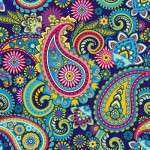
Zoroastrian or Paisley?
A working example: In Matthew 5:14 Jesus declares: “You are the light of the world.” This echoes the Emerald Tablet in equating successful transformation with the spontaneous emission of light or illumination (see appendix A.) The Lord’s Prayer, which appears in Matthew 6: 9-13, also suggests the Emerald Tablet (“on earth as it is in Heaven” and “as above, so below”). When the Kingdom of Heaven is achieved, Jesus declares, heaven and earth, above and below, will be the same. Chapters 24 and 25 provide a blueprint for the coming apocalypse, telling us: “The sun will be darkened, and the moon will not give its light, the stars will fall from the sky.” Jesus also tells us that it will be “like in the days of Noah” before the return of the Son of Man, except that no one will know the exact day or hour—no one, that is, except the initiated.

'Glass' of wine or water?
And/or: In addition to its profound restatement of the Western esoteric tradition, which is significant enough, perhaps the single most important aspect of Le Mystére was the single chapter added to the 1957 edition of the book. This chapter, called “The Cyclic Cross of Hendaye,” discusses a simple yet mysterious monument located in southwestern France that Fulcanelli dates to the middle of the seventeenth century. The monument’s few inelegant symbols reveal that not only was it built by a “master mason,” but that its creator possessed a surprising amount of arcane knowledge. It also proved, and Fulcanelli echoes this, that there was, and possibly still is, a group of people, a secret society, if you will, that knows the very secret of time and light, which secret is the basis of all true alchemy. More surprising, Fulcanelli tells us that this secret society was still active as few as three hundred and fifty years ago... The great return of the alchemical tradition is the road back to a science based on timeless spiritual principles. Alchemy is the science of human development, the art of turning glass into light and lead into gold - Metaphors for the deep and secret mysteries of the spirit. ['The Mysteries of the Great Cross at Hendaye' / J. Weidner + V. Bridges].
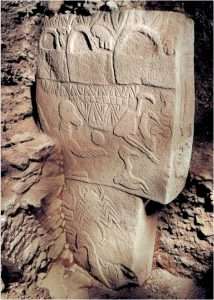
Real or imaginary relative to a MINDSET.
And/or: "If essence is subject to the influence of fate, does it mean that compared with 'accident' fate is always favourable to a man?'' asked somebody. ''And can fate bring a man to the work?''...'No, it does not mean this at all,' G. answered him. 'Fate is better than accident only in the sense that it is possible to take it into account, it is possible to know it beforehand; it is possible to prepare for what is ahead. In regard to accident one can know nothing. But fate can also be unpleasant or difficult. In this event, however, there are means for isolating oneself from fate. The first step towards this is getting away from 'general laws' {'23/24'?}. Just as there is individual accident, so is there general or collective accident. And in the same way as there is individual fate, there is a general or collective fate. Collective accident and collective fate are governed by general laws. If a man wishes to create individuality of his own he must first free himself { ''137''?} from general laws. General laws are by no means all obligatory for man, he can free himself from many of them if he frees himself from 'buffers' and from imagination. All this is connected from liberation of the 'personality'. Personality feeds on imagination and falsehood [fantasy aspect?}." Same book.
''Essence'' {'bit'?} in relation to positive/negative habits? Potential {results?} of.
'Free Warren' to enlarge.
And/or: "The individual process is directed first and foremost to the completeness of the personality. Its constant aim is to raise out of the unconscious the 'missing' element that would make for wholeness, and to join it to consciousness. In our materialistically orientated world, therefore, the prime task could be called spiritualization, the opus contra naturam." [Page 18 'The Lover and the Serpent'].
'Quintessence'.
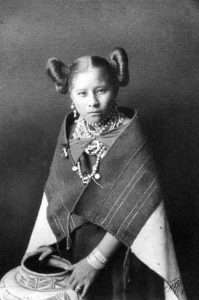
Hopi: 'emergence' to enlarge.
Analogy...The early morning walk i referred to took place when Jesus was twentythree, and therefore some time before the mantle of the Christ had fully clothed him." ['A Man Seen Afar'. Mentioned elsewhere].
Side note: "Why am i here?"
"Your life is the sum of a remainder of an unbalanced equation inherent to the programming of the Matrix. You are the eventuality of an anomaly, which, despite my sincere efforts, i have been unable to eliminate, from what is otherwise a harmony of mathematical precision....The Matrix is older than you know. I prefer to start counting from the emergence from one anomaly to the emergence of the next anomaly. In which case this is the sixth version.....The function of the One, is to now return to the Source allowing a temporary dissemination of the code you carry, reinserting the Prime program. After which you will select from the Matrix 23 individuals - sixteen females, seven males to rebuild Zion....." ['The Matrix Reloaded' / 2003].
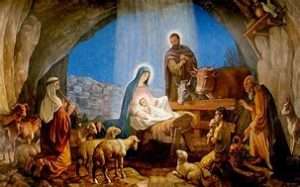
'Cattle'. Question. All light. No shadow? "Elephantine" "A SWAN" to enlarge.
Continued: "Wool is the textile fibre obtained from sheep and other mammals, especially goats, rabbits, and camelids.[1] The term may also refer to inorganic materials, such as mineral wool and glass wool, that have properties similar to animal wool."
Sheep decans.
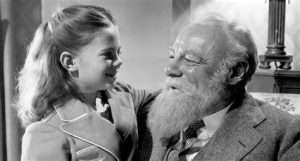
Address: BROOK'S Memorial Home for the Aged. 126 Maplewood Drive. Great neck, Long island. Date of Birth: "As old as my tongue and a little older than my teeth." Place of Birth: North Pole. Next of Kin: Blitzen, Comet, Cupid, Dancer, Dasher, Donder, Prancer, Vixen. {'Miracle on 'thirtyfour' Street' / 1947}. "Swans Neck" / 'Elder' / 'Tongue' / 'teeth' / 'Eight' to enlarge. Question. What about Rudolph - the 'youngest'? 'Nine' ?
Refresher: ''English mantle and mantel both derive from the Latin word for "cloak," mantellum, which was adopted into Old English in the form mentel. The word eventually evolved to mantle under the influence of Anglo-French mantel—a derivative of the Latin term that was borrowed into early Middle English. Initially, mantle referred to a loose, sleeveless cloak or a protective garment or blanket. It then specified the long cloaks worn by royalty, dignitaries, and ecclesiastics as symbols of authority or pre-eminence. By the 17th century, this sense of mantle gained figurative use in contexts describing a transfer of power, with allusion to the allegorical passing of Elijah's mantle to Elisha in the biblical Books of Kings.''
Brooch.
Side note: "Rudiobus is a Celtic god[1] known only from a single inscription, on a bronze figurine of a prancing horse: "sacred to the god Rudiobus". This figurine, from the 1st century BC, is one a group found at Neuvy-En-Sullias (Loiret). It may be an aspect of the Gaulish version of Mars, instead of an indigenous god.[2] The hoard was discovered in 1861; the horse with the Rudiobus inscription is one meter high."
'Prancing Pony Inn' {Lord of the Rings}.
"The origins of the term "pony" {'little'?} can be traced back to the early 19th century in Britain. During that time, horse racing was a popular sport, and the term "pony" was commonly used to refer to a sum of twentyfive pounds."
"An 1890 federal law requires coins to circulate a minimum of 25 years before being redesigned." {'Pawn Stars' / S21 EP8}.
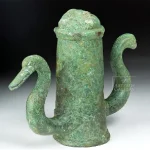
A Roman swan figurine used as a chariot rein guide for two horses.
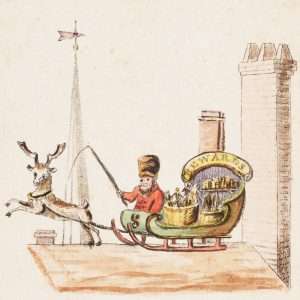
'Sledge' / 'Pallet'? "Rovaniemi - Lapland's capital city - lies inside the Artic Circle. Summer days - when the reindeer herders earmark newborn calves - are long, and in June the sun never sets." [ 'Readers Digest' / Jan 2024].
Then one day, at the time of Muhammad, the Prophet was seated together with his companions when he said that in a certain number of days the men of the Kamal Posh would be coming. So it happened that in that number of days this group of Kamal Posh came to the prophet Muhammad. And when they were with him, he said nothing, but the Kamal Posh were completely satisfied.
'Silent Night'.
Why were they satisfied? Because he created love in their hearts, and when love is created, what dissatisfaction can there be? The Kamal Posh recognized that Muhammad knew the mysteries of the heart. They stayed with the Prophet and were assimilated into Islam. According to this story the Kamal Posh became the mystical element of Islam. And later these wayfarers became known as Sufis, perhaps in reference to the white woolen blanket, sûf, which they wore, or as an indication of their purity of heart, safâ, for they were also known as the pure of heart."
'Swaddling'?
Sheep decans.

Broad Back as opposed say to a ''narrow'' one? Can be ridden like a horse {'domesticated'?} - but cannot 'leap'. ''Puissance'' ? Royal link? {i.e., Prince's ride them}. Hand as well as nose?
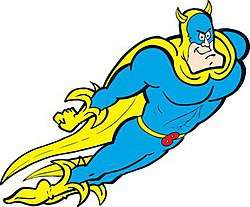
Twentynine Acacia Road.
And/or: {from a different perspective}: ''We begin our journey to Khnum deep in the base of the island, travelling up to the surface through 'twentythree' layers of stone and mud to reach a 'garden' with acacia and hibiscus 'flowers', herbs and trees {'forest'?}, and even a goat or two {'Pan'?}.....We are moving upwards through these 'layers of being' towards more clarity, the clarity you see from the top of a hill as you approach a more spiritual dimension {'tower'?}. Known for its 'beauty' Elephantine is cradled by the Nile....surrounded by huge grey round boulders {hewn/UNhewn?} - from which it gets its name.''
New Name?
4:7 to enlarge.
Question. Would Mantle = west? Northwest?
"O children of Adam. Indeed, we have given you garments to cover your 'nakedness',[key] and as a thing of beauty;...but the garment of god-consciousness is the best of all. This is one of gods messages....that human beings might take it to heart". [Quran 7:26].

'Tower' on top?

Djoser - one of the first full size statues ever made.
A working example: ''My students and i have moved outside for a break. The trees and bushes are ripe with the coming of spring. Crocuses peep purple and white through the softening ground. The air promises a renewal of life. The PINE forest is bursting green and aromatic. Saji Jinootsa {Airedale dog} is rolling in ecstacy. I notice a group of students doing something in a muddy corner of the field. I walk over to observe. They are scooping up mud and forming it in the likeness of a human being. 'What are you doing?' i ask. 'Playing god', one of them responds. 'Isn't that what comes next?''' [Page 54 'A Mythic Life' / J. Houston].
'Turning the light around'.
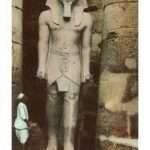 "We have found a strange footprint on the shores of the unknown. We have devised profound theories , one after another, to account for its origin. At last we have succeeded in reconstructing the creature that made the footprint. And lo! It is our own" [Eddington quote].
"We have found a strange footprint on the shores of the unknown. We have devised profound theories , one after another, to account for its origin. At last we have succeeded in reconstructing the creature that made the footprint. And lo! It is our own" [Eddington quote].
Dolphin/Whale?

Sandstone of the North with the Limestone of the South where the North and Southern Downs merge {'morph'?} on Salisbury Plain - as a means...? Question. Jebel Bakal in relation to the ''limestone'' at Giza?
Side note: Whale spine bones - gathered around an old 'tree stump' - found in the most ancient city in the Americas {Caral}. A desert 'valley' where 'mantle' shifts abound. Whale bones also found among 'ritual' artefacts at the most ancient site on the British isles - Orkney.
Question. Any mantle activity in the Orkneys?
And/or: ''The Three Nymphs must be understood as the Three Graces - the Triple love goddess. The Graeae were also known as the Phorcides, which means the daughters of Phorcus, or Orcus....had the form of swans or cranes....both alike in flying in V formations.They were in fact the Three Fates....a synonym for the Underworld; as it is the same word as porcus, a pig, the beast sacred to the Death goddess....Orc is pig in Irish; hence Orcades, or Orkneys, abodes of the Death-goddess. Phorcus = father of the Gorgon Medusa....described in ancient days as a beautiful Libyan queen.'' [Page 223 'The White Goddess' / R. Graves].
Libyan Sibyl?
And/or: ''Etymologists usually interpret the element orc- as a Pictish tribal name meaning "young pig" or "young boar".[Notes 3][1] Speakers of Old Irish referred to the islands as Insi Orc "islands of the young pigs".[17][18] The archipelago is known as Ynysoedd Erch in modern Welsh and Arcaibh in modern Scottish Gaelic, the -aibh representing a fossilized prepositional case ending. Some earlier sources alternatively hypothesise that Orkney comes from the Latin orca, whale.[19][20] The Anglo-Saxon monk Bede refers to the islands as Orcades insulae in Ecclesiastical History of the English People.''
Side note: ''To exact the maximum payment which a person can afford is to 'squeeze them until their pips squeak'...'' ['The Chase'].
Piglets?
Taurus?
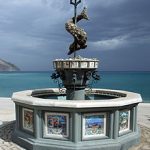
 ''Although the term "orca" is increasingly used, English-speaking scientists most often use the traditional name "killer whale". The genus name Orcinus means "of the kingdom of the dead", or "belonging to Orcus". Ancient Romans originally used orca (pl. orcae) for these animals, possibly borrowing Ancient Greek ὄρυξ (óryx), which referred (among other things) to a whale species. Since the 1960s, "orca" has steadily grown in common use. As part of the family Delphinidae, the species is more closely related to other oceanic dolphins than to other whales.'' [Wiki].
''Although the term "orca" is increasingly used, English-speaking scientists most often use the traditional name "killer whale". The genus name Orcinus means "of the kingdom of the dead", or "belonging to Orcus". Ancient Romans originally used orca (pl. orcae) for these animals, possibly borrowing Ancient Greek ὄρυξ (óryx), which referred (among other things) to a whale species. Since the 1960s, "orca" has steadily grown in common use. As part of the family Delphinidae, the species is more closely related to other oceanic dolphins than to other whales.'' [Wiki].
Delphi?
Mineral/Vegetable/Animal. A morphing of those ''elements'' - as a means....?
23 Gloucester Crescent in Camden Town ?
Side note: ''In Greek mythology, Perseus is the legendary founder of Mycenae and of the Perseid dynasty. He was, alongside Cadmus and Bellerophon, the greatest Greek hero and slayer of monsters before the days of Heracles. He beheaded the Gorgon Medusa for Polydectes and saved Andromeda from the sea monster Cetus.'' [Wiki].

'Anima' chained/imprisoned?
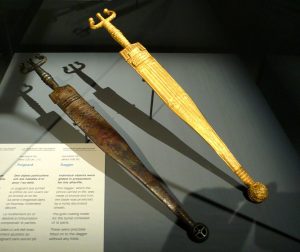
Possession of the Hochdorf 'Prince'. Stylized 'M' OR 'W'?
''In Greek mythology, Andromeda (/ænˈdrɒmɪdə/; Ancient Greek: Ἀνδρομέδα, romanized: Androméda or Ἀνδρομέδη, Andromédē) is the daughter of the king of Aethiopia, Cepheus, and his wife, Cassiopeia. When Cassiopeia boasts that she is more beautiful than the Nereids, Poseidon sends the sea monster Cetus to ravage the coast of Aethiopia as divine punishment. Andromeda is chained to a rock as a sacrifice to sate the monster, but is saved from death by Perseus, who marries her and takes her to Greece to reign as his queen.''
And/or: In the Leiden Aratea Constellation manuscript {Charlemagne} - Andromeda is shown naked down to the hips {i.e., top half} and Perseus 'naked' with the exception of a silk scarf.
And/or: ''In Greek mythology, Perses (/ˈpɜːrsiz/; Ancient Greek: Πέρσης) was the son of Andromeda and Perseus. Greek mythology identified Perses as the ancestor of the Persians. ...


Scarfs?
"The no-mans land between Physics and the psychology of the Unconscious [is] the most fascinating yet the darkest hunting ground of our times." Carl Jung.
Question. ''no-mans land'' = 'astral plane' ? Represented with the ''vegetative'' element?
Side note: "Of particular relevance here is that the high god Osiris, lord of the celestial afterlife kingdom known as the Duat, was always referred to as 'Ka of the pyramids of Egypt'..." [Magicians of the Gods'].
Understanding that one sentence gives clews {threads?} to a possible location. That final one. Represented as...?
Continued: Eddington - one of a few people to understand 'relativity' well enough to explain {teach?} it. Yet when attempting to define - the Fine Structure Constant - with a value - he arrived at 136. Hence his 'nickname' 136+1. Question. Coincidence {23} or a meaningful one {137} ?
Try ''nickname'' or New name?
"The no-mans land between Physics and the psychology of the Unconscious [is] the most fascinating yet the darkest hunting ground of our times." Carl Jung.
Question. What symbol/s {therefore archetypes} represent 'the hunt' ?
 ..."The 'Investigator' {i.e.,authors alter ego} remembers thinking during the six weeks between major experiments, that whatever he had tuned into was not ''Cosmic Consciousness''{12+5?} but a kind of planetary consciousness; {10+7?} - he wondered who coined the term, ''cosmic consciousness,'' and what it contained...This time i moved in space-time fan wise, unlike the backward-in-time movement of the drug trip. The 'Yogi' {same} became almost conscious of a kind of galactic star network, an intelligence that seemed not fully formed but evolving. Somehow this resonated in my mind with the Sufi teaching that Allah is constantly recreating himself every second. The trip was full of light and joy, the White Light of the Void jazz you've all heard; but dim, not fully achieved. The 'Researcher' {same} went off to sleep not quite satisfied. The next morning, July the twentythird, the 'Shaman' {same} awoke with an urgent message, from dreamland and scribbled quickly in his magical diary, ''Sirius is very important." There was more, almost at the tip of my tongue, but i couldn't remember it. During the day i looked through my occult books, seeking references to the Dog star, Sirius. Although skeptical about Astrology, i assumed that the dream message was some hint that the Sirius cycle should be part of my magical experiments in the future. Astrology seemed like nonsense to me, but i was willing to give it a try, in an open ended manner of Dr. Lilly's ''Beliefs unlimited'' exercise." [Extract from the book 'The Cosmic Trigger'. All emphasis - this readers with the exception of the word in bold print].
..."The 'Investigator' {i.e.,authors alter ego} remembers thinking during the six weeks between major experiments, that whatever he had tuned into was not ''Cosmic Consciousness''{12+5?} but a kind of planetary consciousness; {10+7?} - he wondered who coined the term, ''cosmic consciousness,'' and what it contained...This time i moved in space-time fan wise, unlike the backward-in-time movement of the drug trip. The 'Yogi' {same} became almost conscious of a kind of galactic star network, an intelligence that seemed not fully formed but evolving. Somehow this resonated in my mind with the Sufi teaching that Allah is constantly recreating himself every second. The trip was full of light and joy, the White Light of the Void jazz you've all heard; but dim, not fully achieved. The 'Researcher' {same} went off to sleep not quite satisfied. The next morning, July the twentythird, the 'Shaman' {same} awoke with an urgent message, from dreamland and scribbled quickly in his magical diary, ''Sirius is very important." There was more, almost at the tip of my tongue, but i couldn't remember it. During the day i looked through my occult books, seeking references to the Dog star, Sirius. Although skeptical about Astrology, i assumed that the dream message was some hint that the Sirius cycle should be part of my magical experiments in the future. Astrology seemed like nonsense to me, but i was willing to give it a try, in an open ended manner of Dr. Lilly's ''Beliefs unlimited'' exercise." [Extract from the book 'The Cosmic Trigger'. All emphasis - this readers with the exception of the word in bold print].
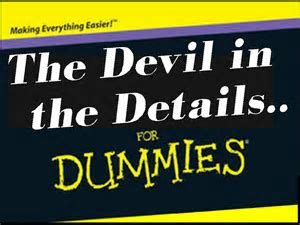 He goes on to find out - through practical research this time - information on same, i.e.,that it rises as a precursor to Orion - known as the Heliacal rising - from the twentythird July. Other connections include key words as the pheonix / new year/ Freemasonry / third eye / blazing star - to name a few. All enlarged within. It also explains - if only to this researcher - {i.e.,as a study exercise; not as an alter ego one} why the author feels it was more a 'planetary' experience than a 'cosmic' one, i.e.,''Dog'' in relation to lower; hence - ''not fully achieved''. That link to the word and description of ''void''. All in relation {or relative} to the self. Hence the link to the word in bold print. Those ''higher'' keys - once that 'gap' has been 'bridged' - would eventually be assessed either by research or in a dream state - regardless whether self induced or otherwise. Represented in the above example with information on Sirius - which as stated - the author has to evaluate for himself. Proving {if only for this reader} the viability of the subject material ONLY, regardless of how it is obtained or 'perceived'. Other keys enlarged elsewhere to add {or detract?} from ,i.e.,what is implied with a ''light'' 'behind' and/or in 'front' of. What does it represent? Why Sirius? What significance is the bow/arrow? How about other constellations, i.e.,any importance to Orion? i.e.,as an example; the Hare constellation. Why should ''South'' be significant? etc etc.
He goes on to find out - through practical research this time - information on same, i.e.,that it rises as a precursor to Orion - known as the Heliacal rising - from the twentythird July. Other connections include key words as the pheonix / new year/ Freemasonry / third eye / blazing star - to name a few. All enlarged within. It also explains - if only to this researcher - {i.e.,as a study exercise; not as an alter ego one} why the author feels it was more a 'planetary' experience than a 'cosmic' one, i.e.,''Dog'' in relation to lower; hence - ''not fully achieved''. That link to the word and description of ''void''. All in relation {or relative} to the self. Hence the link to the word in bold print. Those ''higher'' keys - once that 'gap' has been 'bridged' - would eventually be assessed either by research or in a dream state - regardless whether self induced or otherwise. Represented in the above example with information on Sirius - which as stated - the author has to evaluate for himself. Proving {if only for this reader} the viability of the subject material ONLY, regardless of how it is obtained or 'perceived'. Other keys enlarged elsewhere to add {or detract?} from ,i.e.,what is implied with a ''light'' 'behind' and/or in 'front' of. What does it represent? Why Sirius? What significance is the bow/arrow? How about other constellations, i.e.,any importance to Orion? i.e.,as an example; the Hare constellation. Why should ''South'' be significant? etc etc.
"Crowley once said that the 'magicians' sole aim was to interpret his own 'magical' record {i.e.,dreams and/or visions and therefore and/or archetypes/keys}, and after many years i have come to agree with him." [Extract from the book 'The Magister'. Emphasis, this readers].
This reader, however would add - REGARDLESS OF WHOSE THEY ARE.
A {working} example {the very first one?}: "Homer uses Canis Major to reiterate his idea of the celestial sphere when in Book twentythree of the Iliad, Achilles tosses this way and that during a restless sleep...Homers description of Canis Major {'Great Dog'} reaches imaginative heights when he describes how the constellation was created to accommodate the return to the skies of the star Sirius, and how Hephaestus, the smith god, forges new armour for Achilles...The stars of Canis Major are used as the body of Achilles. His personal star Sirius, lies at the heart of the constellation, whether it is viewed as a Great Dog or a warrior...'' ['Homer's Secret Iliad'].
''Return'' in relation to 'incarnation/reincarnation. Representation of.
Question. 7th / 8th octave link? Hence...
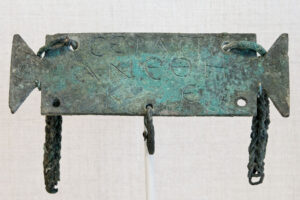
Votive tablet_Serapis
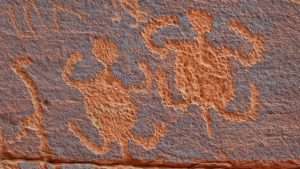
''Possible turtle people emerging from a horizontal crack.
"It is as the creator of the 'glittering new armour' and shield of Achilles that Hephaestus is perhaps best known, and his masterpiece represents the stars in an area of sky where a new constellation was created to accommodate the return to the heavens of the star Sirius after a long absence. In his role as the creator of astronomical concepts, Hephaestus is also credited with making the ancient staff that had been passed down to Agamemnon by his forbears - a symbolic pointer to the north celestial pole. To provide such astronomical functions, Hephaestus required his own home in the skies, and the details given in Book 18 when assessed in the same way as the information about other gods and warriors resulted in a vivid and unmistakable image of Perseus. How Hephaestus could represent Perseus if the constellation had already been allocated in one manifestation to Diomedes is not at present understood, but an answer may yet be found in pages of notes by Edna Leigh. In these notes she associates many other Greek gods with constellations, and we suspect these were her conclusions on yet another layer of ancient Greek astronomy..."
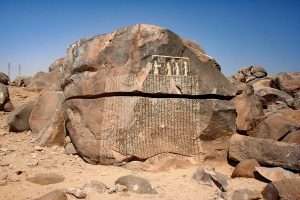
Crack {'void'?} between the 'worlds'?.
REFRESHER: "The potential literature for an intellectual study of this is vast. We hope we have provided a few simple pointers on the way. It is however, a 'centering' in, rather than a wandering in the labyrinthine fields of intellectual speculation, that is the direct way of truth. The 'rose' blooms at the center of the cross. And those who are prepared to contemplate the imagery and take it unto their inmost hearts are the more likely to be met by Beatrice from the triumphal car {'chariot'}, and 'led' to places where even the intellectual genius of a Virgil cannot go." [From the book by G. Knight].
''Maze'' / ''POINTER'' to enlarge.
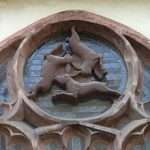
A beginning or end?
Side note: '' East - spellbound by the hoary past for cycles of time, and then suddenly waking, began to rush into the future by leaps and bounds, smiling contemptuously at the tortoise step of the WEST.'' [Page 24 'Russia: Past, Present and Future' / R. Steiner].
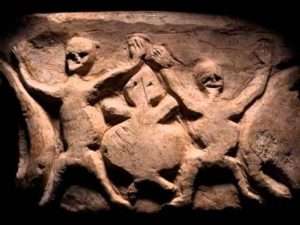
Turtle or tortoise? Raised or outstretched?
'Turtle'?
''Tortoiseshell can describe both a cat and butterfly.'' ['The Chase'].
And/or: ''Inscribed on the inner coffin lids and painted on the ceilings of pharaonic tombs from the Old Kingdom to the New, the sky takes the form of the Great Mother, her body composed of the thick blue-black darkness of night, and suspended therein are innumerable glittering yellow stars. Their five points are not equidistant; rather they are shaped in the image of man STANDING WITH ARMS AND LEGS OUTSTRETCHED Wide......Some with upturned tips {'hooked'?} - some stand on short legs.'' [Page 226 'Dreams of Isis: A Womans Spiritual Sojourn' / N. Ellis].
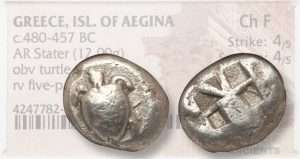
'Carapace' to expand.
Continued: "No explanatory notes for her views have yet been found, but it is expected that her papers will be made available for those who wish to study the deeper implications of Homer's Secret Iliad. Considering Hephaestus role as the original creator of the constellations, new lines of inquiry may indicate that Homer preserved in the Iliad the remnants of an even older astronomical culture than that associated with Minoan Crete and Mycenae." [Same book]. Among others try ''lame'' and/or ''maimed/crippled'' and/or ''octave''. [Part 2].
 A working example: ''There was a question in the air. I didn't know how to answer him. Disquising lameness with firmness i said: That's very fair of Caldwell. Its the best thing. It must be for the best.'' [Page 20 'Mercurius'].
A working example: ''There was a question in the air. I didn't know how to answer him. Disquising lameness with firmness i said: That's very fair of Caldwell. Its the best thing. It must be for the best.'' [Page 20 'Mercurius'].
Refresher: ''On many Russian churches the crosses on the domes often have a slanting support bar underneath the cross. This is a Russian tradition that Christ was lame...'' [Page 266 'Russia: Past, Present and Future' / R. Steiner].
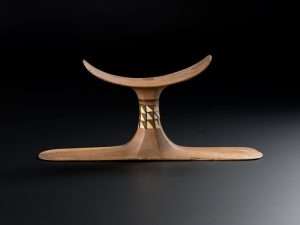
Ebony / Ivory: Twentyfour sections?
Continued: Another coincidence?..."The kings arrival in the sky is a new birth...The divine entities dance attendance on him, reassemble his bones, give him back the use of his senses, by opening his eyes and mouth, rituals which are accomplished 'magically' in the ''Room of Gold'' {'Tut' link?} on the mummy or its effigy with two adzes and the presentation of a bull's thigh. 'My mouth is opened by Ptah with celestial scissors' proclaims the 'deceased' in the Coming Forth into Day - chapter 23." [Extract from the book 'Egyptian Mysteries'].
'Shears'?
'Twentythree' in relation to the beginning of something?
Side note. Who was born from the 'thigh' of Zeus? What does it imply? Try ''oxen'' - to see something else.
Question. Right or left thigh or does it matter?
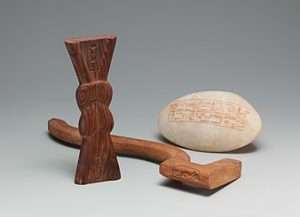
Where have you seen them before?

White gold.
A working example?..."The New Heaven and the New Earth represent a 'new' mind and a new heart. Throughout the Old Testament you may have noticed that the Lord makes occasional reference to giving us new hearts or ''circumcising'' our hearts. The ''new heaven and new earth'' John sees is humanities perfected state of consciousness and regenerated body. The human mind at this point is now one with the divine... in control and free from outside limitations : ''If you conquer, i will make you a pillar in the temple of my god; and you will never go out of it. I will write on you the name of my god,{nickname?} and the name of the city of my god, this new Jerusalem that comes down from my god out of heaven and my own new name.'' Rev. 3:12...{''connected'' link- see it?}.
And/or: ''A Russian legend tells of the holy lake Svetly Yar into which the miraculous city of Kitezh has sunk.'' [Page 6 'Russia: Past, Present and Future' / R. Steiner].
REFRESHER: "But as i heard my Sioux name being called over and over, i then knew for the first time who i was..." ['Dances With Wolves' / K. Costner].
 Something to ponder on: "The ancient Egyptian word 'Ren' means ''name''. The name is an essential attribute to the personification of a being....Everything that comes into 'existence' receives a name. This is an essential quality of that which comes into the realm of time and space. The ancient symbols of which are ''mouth'' and water''. The name is sometimes found encircled by a 'rope of light' called a cartouche...." [Page 137 'Egyptian Book of the Dead' / M. Ashby]. Try ''mouth''.
Something to ponder on: "The ancient Egyptian word 'Ren' means ''name''. The name is an essential attribute to the personification of a being....Everything that comes into 'existence' receives a name. This is an essential quality of that which comes into the realm of time and space. The ancient symbols of which are ''mouth'' and water''. The name is sometimes found encircled by a 'rope of light' called a cartouche...." [Page 137 'Egyptian Book of the Dead' / M. Ashby]. Try ''mouth''.
Quantity/Quality {'Duality' link} - as a means....?
continued: "The number value for the New Jerusalem is 1224 which is also the numerical value of the Greek word for ''fish''. This same number includes ''gods creation'' / ''paradise'' and ''i am the way''. The word Jerusalem means ''sacred peace''. When humanity recognizes the divinity within them as the controlling force of the world, and turns away from their own selfish pattern of living for self alone, the old pattern disappears and the 'Christ' pattern emerges." ['Wisdom of the 4th Way'. Emphasis, this readers]. Link to the meaning of the word ''grace''. See it? Try ''pattern'' for a different take on same principle.
Cedar wood?
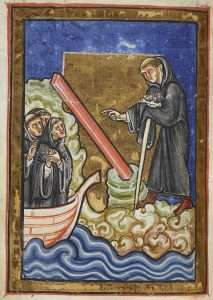
''Cuthbert discovers a piece of wood to be used as a ROOF beam.'' Same question.
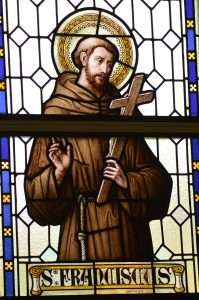
Cedar wood?
And/or: ''The Franciscan Gardens change throughout the seasons and there is always something incredible to see. Located beside the River Stour, the Franciscan Gardens are the site of the first settlement of the Franciscan Friars, sent over in 1224 by St Francis to spread the word {'abroad'?} and work with the poor.'' [Page 75 'My Britain: Canterbury' / Readers Digest / June 2023].
Side note. Beside the Great Pyramid was found a boat pit. All in parts. 1224 parts. 41limestone blocks above. Coincidence or a meaningful one? ['Egypt Unwrapped: Secrets of the Sphinx' / History channel].
"Like 41 and 101; 1001 exceeds the great number and therefore comes to mean 'infinite' and/or 'numberless'." ['Mystery of Numbers'. Enlarged elsewhere].
Refresher: ''This symbol of the etheric plane is nowhere no more openly announced than in Notra-Dame, France...A figure is displayed within a huge lozenge, the bounds of which are decorated with small lozenges. Altogether there are 41 lozenges in this single architectural detail..." ['The Zelator']. Coincidence or a ?
"It is said that the 'New' Jerusalem will be built on an Island of swamp." ['Curse of Oak Island' series 4. Episode 3].
Land of Punt?
A working example: ''She waved it under my nose, images of tigers and elephants, crowded OPEN AIR market places {'crossroads'?}, and billowing curtains of pink and saffron silk blew past my minds eye. I smelled the spices coriander and cardamom, then ginger, cinnamon, and flowers i did not know.'' [Page 15 'Book of Shadows' / P. Curott].
'Tickled pink'?
Side note: ''Cinnabar comes from Ancient Greek: κιννάβαρι[7] (kinnabari),[8] a Greek word most likely applied by Theophrastus to several distinct substances.[7] In Latin, it was sometimes known as minium, meaning also "red cinnamon", though both of these terms now refer specifically to lead tetroxide.'' [Wiki].
''The Cardamom Mountains are in Cambodia.'' ['The Chase'].

 Continued: ''Upside-down and one eyed like the Hanged Man. How could i approach the world like that and survive? It sounded more like a prescription for cracking your head open than finding your way. ...A floodgate of emotion suddenly opened....feelings locked behind a dam of mistaken purpose built by schooling and social upbringing and eons of history....a river of longing, like the Nile when Sirius rises, about to flood the desert of my life.....I sensed how fertile the soil, how fragrant the trees of myrrh, and how delicious the fig trees growing within that sacred delta would become as that ancient star rose on my horizon.'' [Page 20/ 44, same book].
Continued: ''Upside-down and one eyed like the Hanged Man. How could i approach the world like that and survive? It sounded more like a prescription for cracking your head open than finding your way. ...A floodgate of emotion suddenly opened....feelings locked behind a dam of mistaken purpose built by schooling and social upbringing and eons of history....a river of longing, like the Nile when Sirius rises, about to flood the desert of my life.....I sensed how fertile the soil, how fragrant the trees of myrrh, and how delicious the fig trees growing within that sacred delta would become as that ancient star rose on my horizon.'' [Page 20/ 44, same book].
IN/OF THE HORIZON.
''Open Air''?
 Refresher: "The waters ebb and flow. Let the 'magician' guard himself from drowning at the point where land and water meet. The midway spot, which is neither dry nor wet, must provide the standing place whereon his feet are set. When water, land and air meet, there is the place for 'magic' to be wrought {'fire'?}."
Refresher: "The waters ebb and flow. Let the 'magician' guard himself from drowning at the point where land and water meet. The midway spot, which is neither dry nor wet, must provide the standing place whereon his feet are set. When water, land and air meet, there is the place for 'magic' to be wrought {'fire'?}."
'Blacksmith'?

Victoria Peak - overlooking Victoria Harbour.
A working example: ''The name of the territory, first romanised as "He-Ong-Kong" in 1780,[22] originally referred to a small inlet located between Aberdeen Island and the southern coast of Hong Kong Island. Aberdeen was an initial point of contact between British sailors and local fishermen.[23] Although the source of the romanised name is unknown, it is generally believed to be an early phonetic rendering of the Cantonese (or Tanka Cantonese) phrase hēung góng. The name translates as "fragrant harbour" or "incense harbour".[20][21][24]

'She who loves silence'.
"Fragrant" may refer to the sweet taste of the harbour's freshwater influx from the Pearl River or to the odour from incense factories lining the coast of northern Kowloon. The incense was stored near Aberdeen Harbour for export before Victoria Harbour was developed.[24] Sir John Davis (the second colonial governor) offered an alternative origin; Davis said that the name derived from "Hoong-keang" ("red torrent"), reflecting the colour of soil over which a waterfall on the island flowed.[25]
The simplified name Hong Kong was frequently used by 1810.[26] The name was also commonly written as the single word Hongkong until 1926, when the government officially adopted the two-word name.''
Duality?
